Best cycling glasses: They're more than just sun protection
18 of the best cycling sunglasses for all conditions to keep you protected and looking stylish too
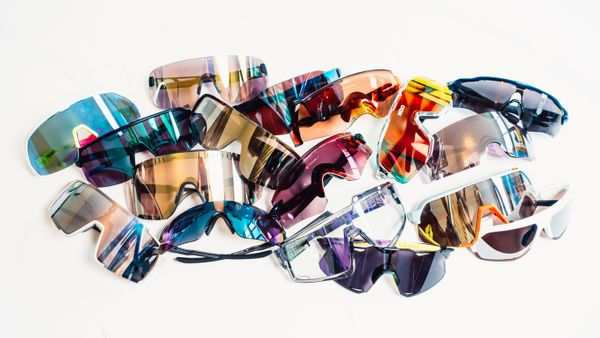
I'm now in my third year of curating this guide, and it remains my favourite. As with the best cycling socks, I'm not going to pretend that the best cycling glasses will have a transformative effect on your ride, but there are certainly very noticeable differences between a great pair and one that doesn't make the cut.
In the last few years, I've tested out well over 60 pairs of cycling glasses, and as well as this guide I've also put together a partner page for the best cheap cycling glasses, as you can pick up some truly excellent pairs nowadays for a pretty small investment if you know where to look. In this latest iteration, a few pairs have been replaced by better models as I try more and more pairs out.
For years Oakley has been the big name in sports eyewear, and while I've also put together a dedicated guide to Oakley cycling glasses there are plenty of amazing options beyond the big O. If you need vision correction I've also put together another guide to the best prescription cycling glasses, as there are a good few options out there.
Each pair has been assessed for fit, build quality, wind and sun protection, and particularly important to me is how they perform in low light. I've also got a solid collection of the best road helmets in the cupboard, so how they fit into vents is also tested too. While my standout favourite remains the Oakley Encoder with a Prizm Road lens, there are plenty of options that I regularly rotate through depending on the conditions.
If you're not sure of what to look for or get confused by all the acronyms and lens types worry not, there is an FAQ section at the bottom of the page to help guide you.
Quick list
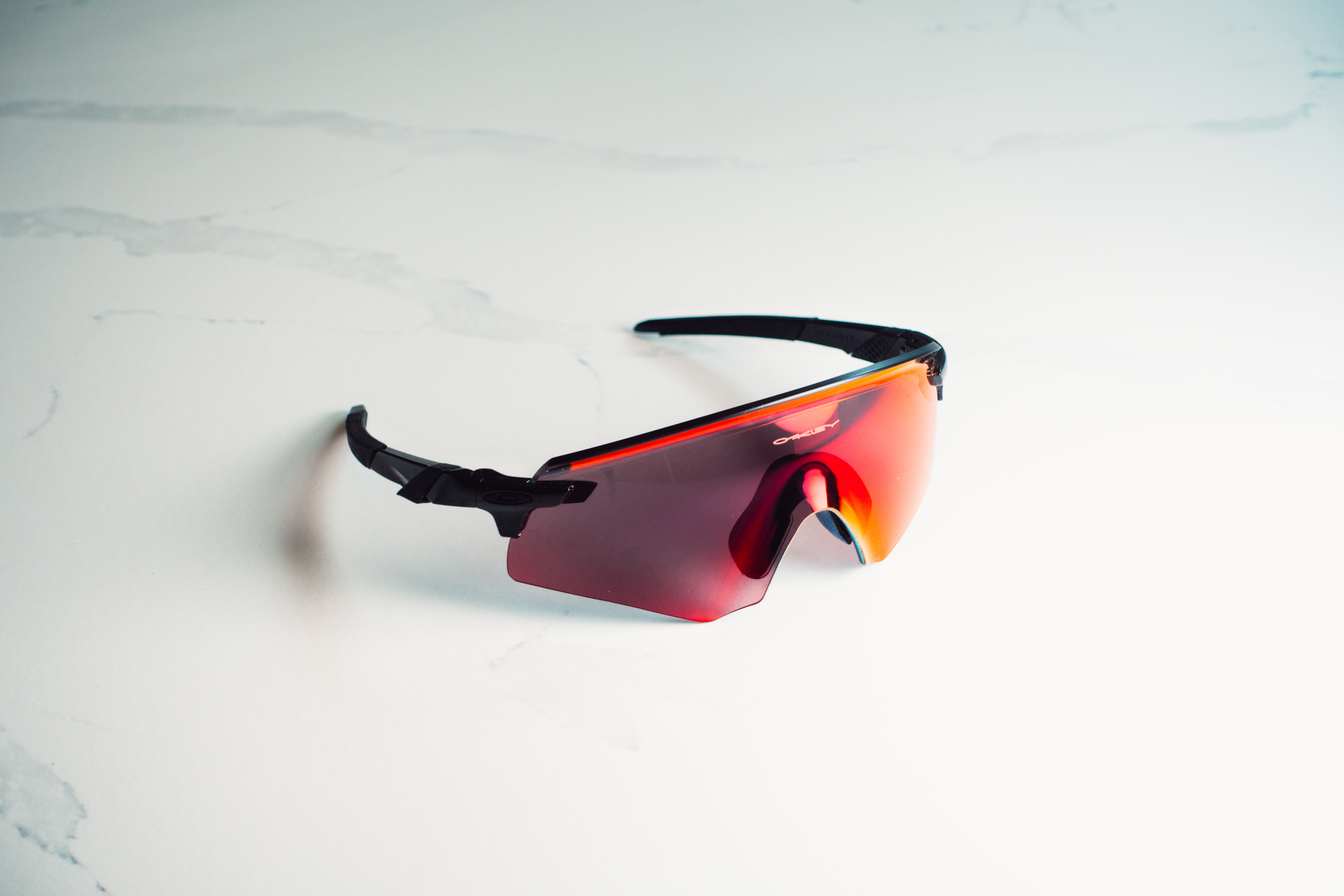
The Prizm Road lens is sensational even in low light, and the shape provides excellent coverage without being overly large for small heads. The ridge on the top also makes them stiffer and more grippy than any other frameless pair I've tried. If I had to keep one pair, it'd be these.
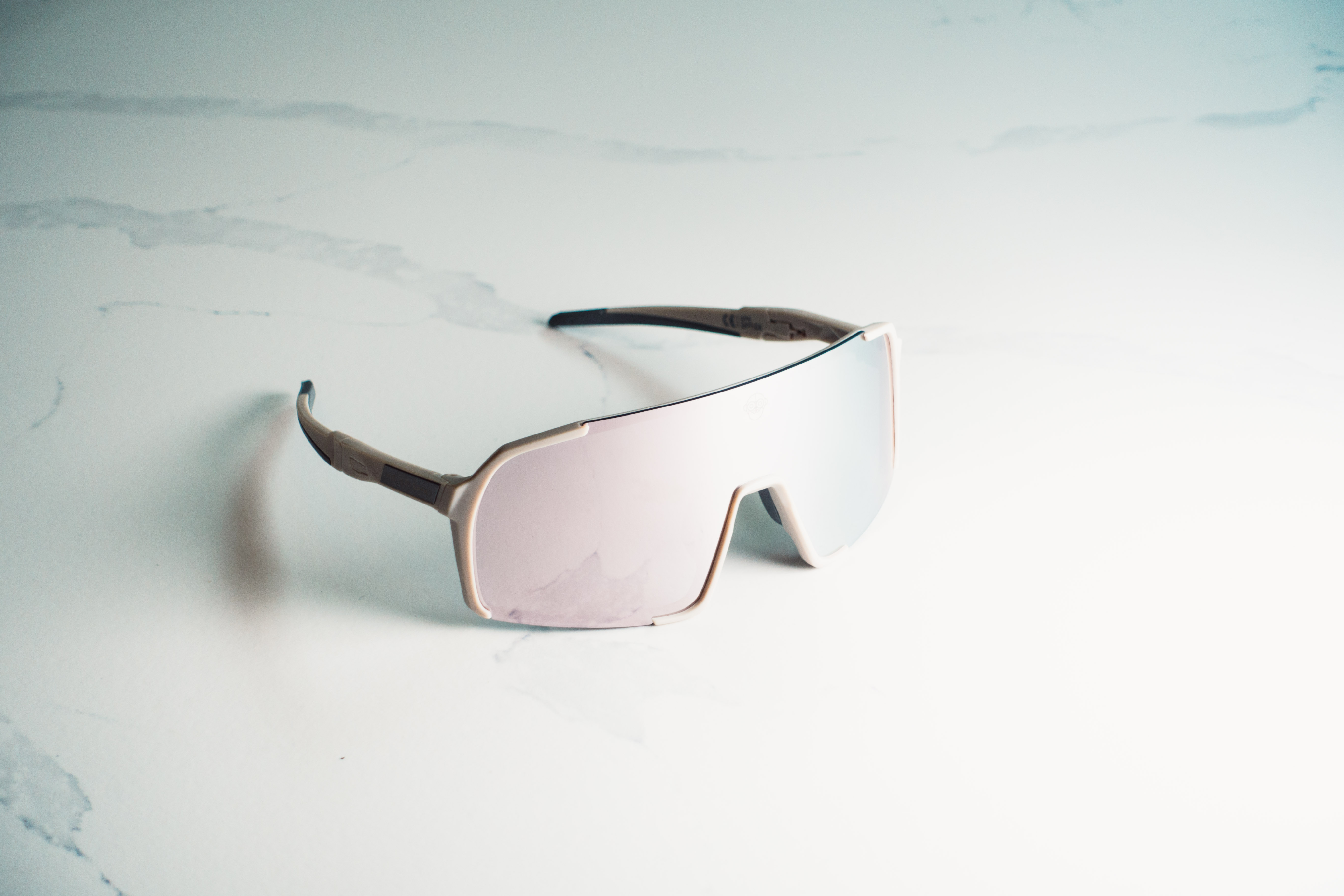
A genuinely decent set of shades for a low price with a tonne of extras. In the box, you also get a clear lens, a photochromic one, and a polarised one, as well as a prescription lens insert if you need vision correction. The best bang for your buck of the lot.
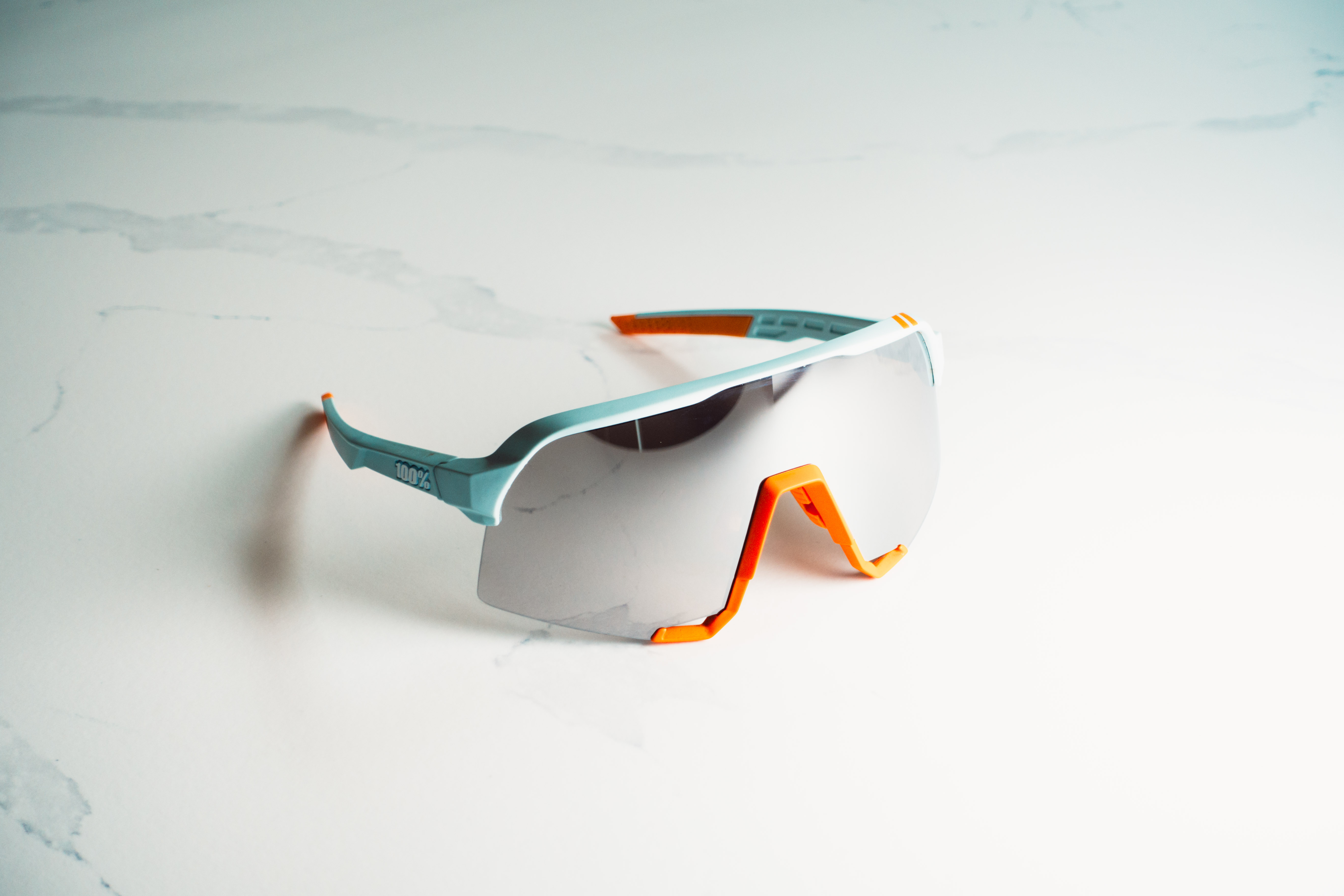
While the Encoder is good, when it's dark it is no use as you can't swap the lenses. Enter the 100% S3; The HiPER lenses are great and the lens size is huge, but the inclusion of a clear lens makes these my top pick if you ride outside all year round and still want to stay protected.
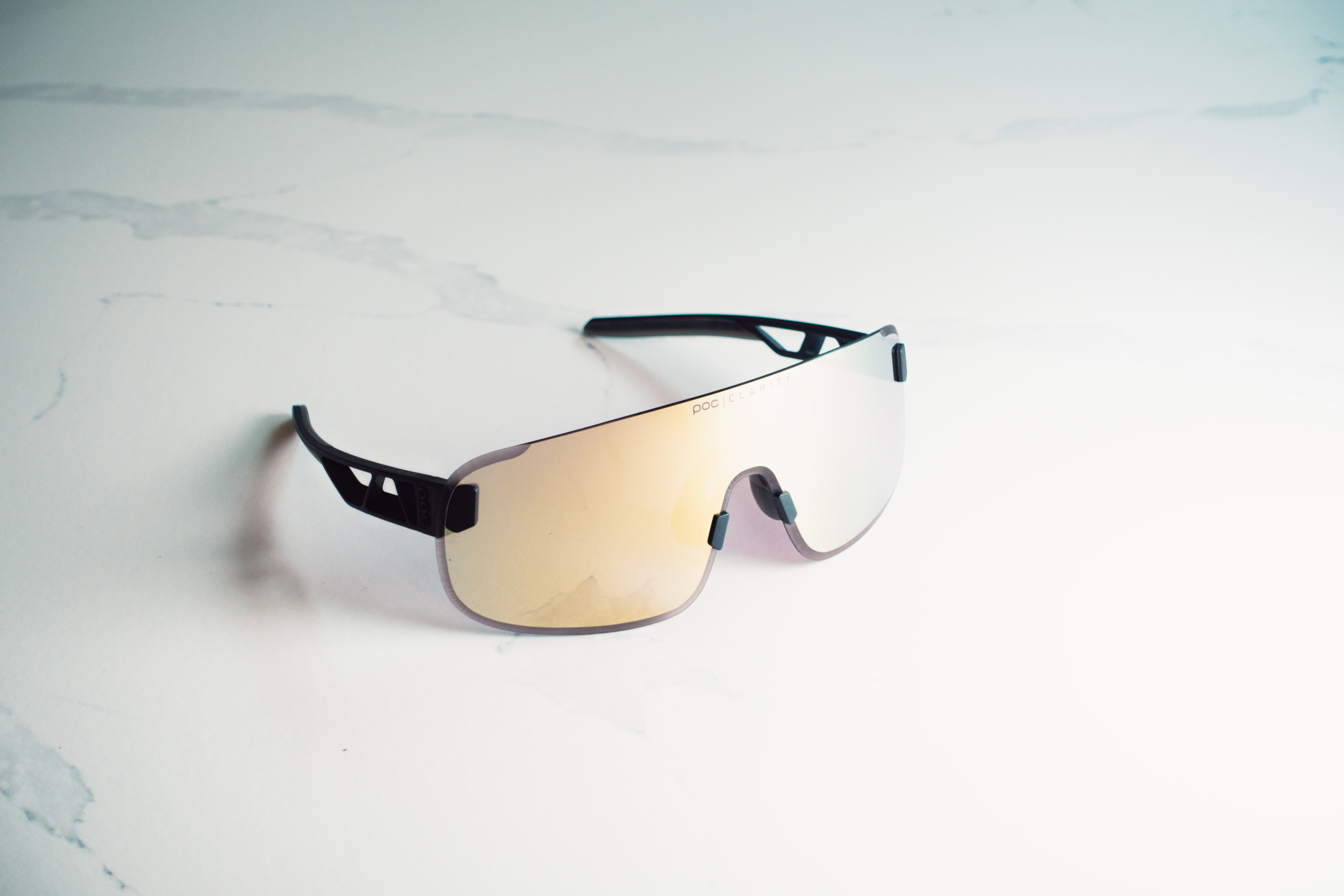
If you like things featherweight then the POC Elicit should be your choice. The low weight and large, organically shaped frameless lens means you'll forget you're even wearing cycling glasses at all. If you've got a very small head though they may not grip so well.
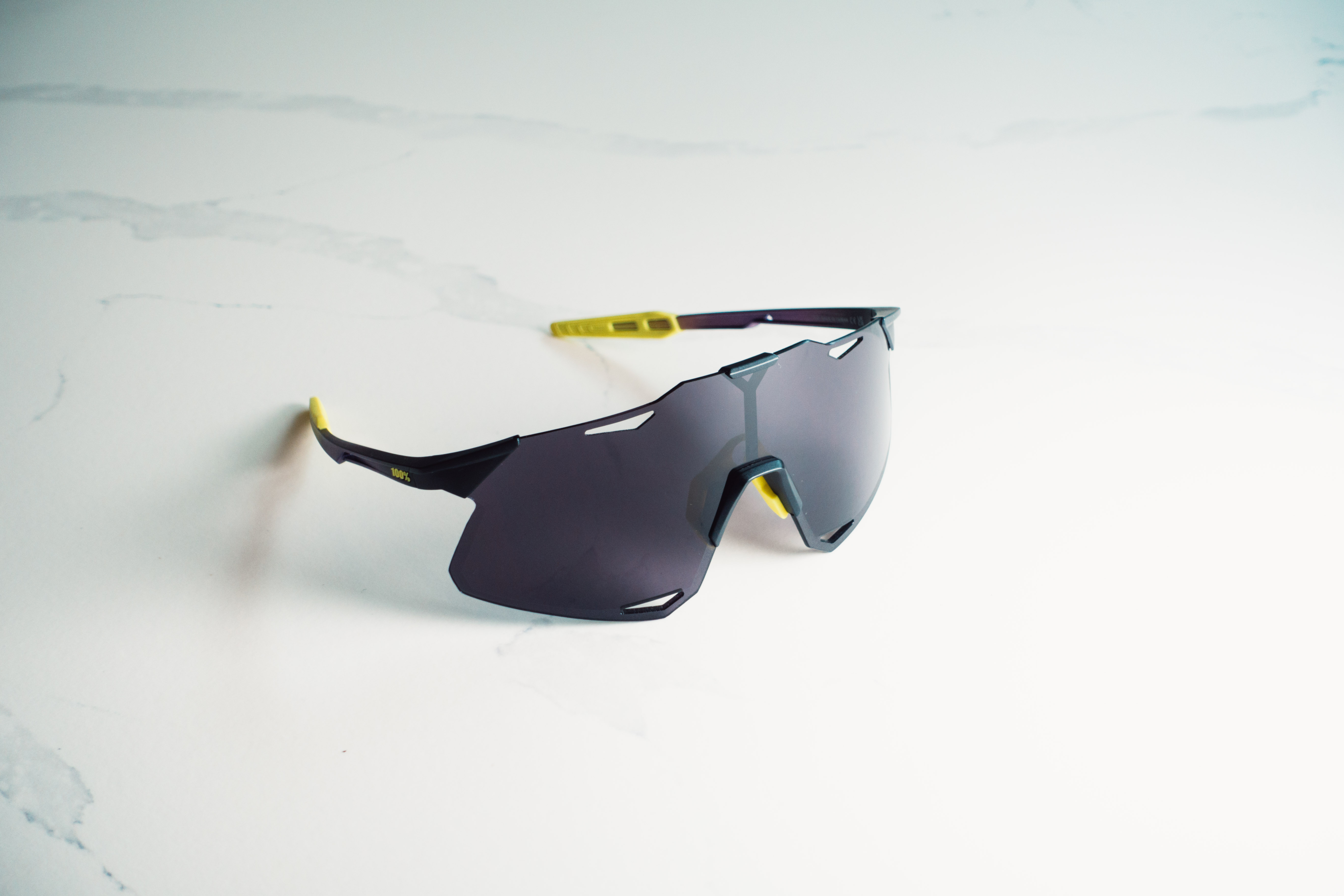
Another lightweight, the 100% Hypercraft are what I reach for when it's really hot and humid. The weight is similar to the POC Elicit, and while they aren't quite so comfy the lenses allow greater airflow in behind, which is always welcome on protracted climbs.
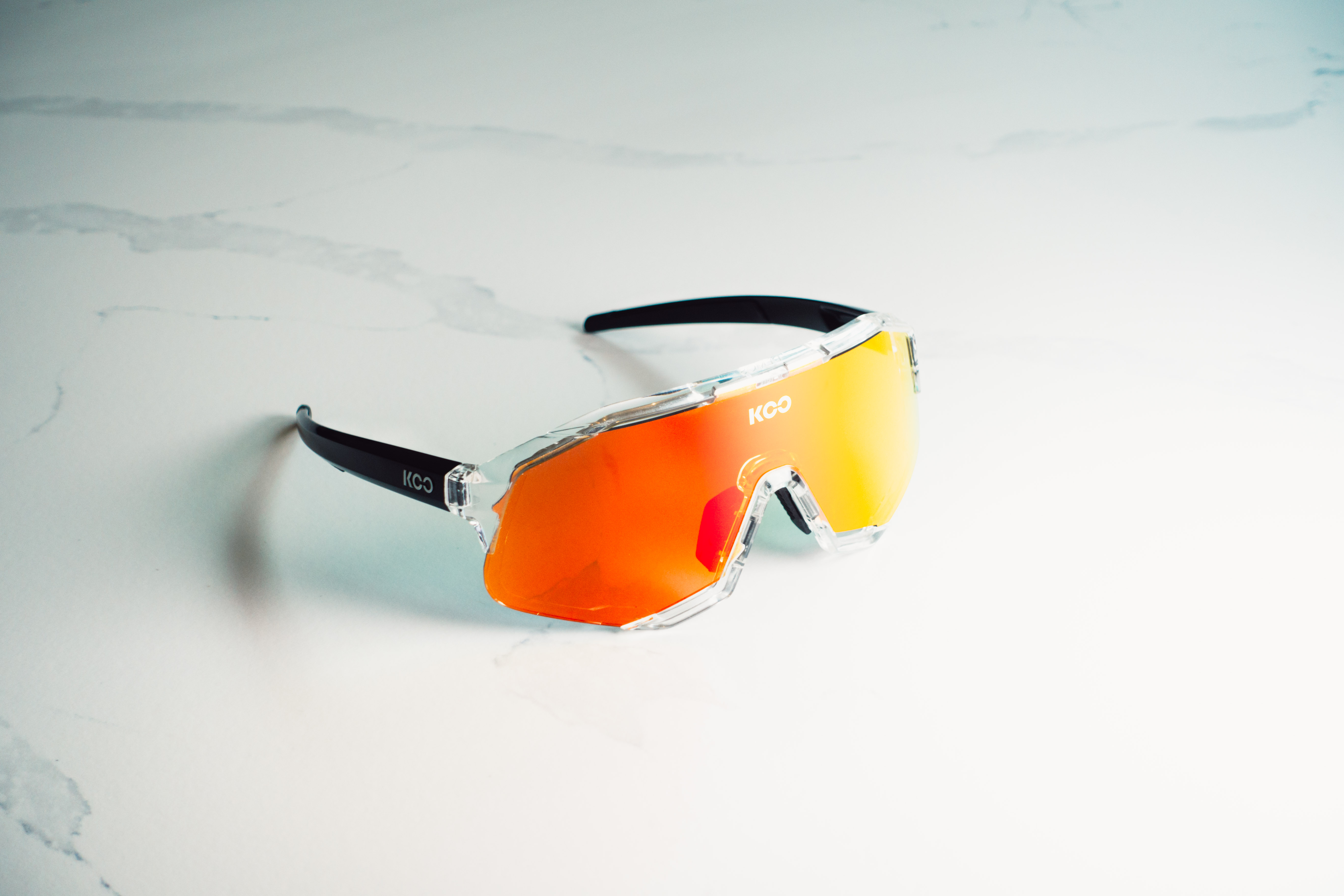
Like the Encoder, the Demos from Koo is a pair of cycling glasses that does everything really well, rather than excelling in one area. The Zeiss lenses are great, the build quality is fantastic, and they're just the right size for most people; a worthy honourable mention.
In detail: Best cycling glasses available today
Best all-purpose cycling glasses
The cycling glasses below are my picks for jack-of-all-trades riding. They'll stand you in good stead for road or gravel, and I'd wager MTB too, though that's not my area of expertise.
They all fit well, provide an excellent field of vision, and consequently protect you well from both wind and debris. They are mostly at the higher end of the price bracket, but for the extra outlay, you'll get better materials, and lenses that perform better in low light and that are free from distortion.
As modern lenses improve and can cover nearly all light conditions, many manufacturers are opting to revert back to a single lens option, rather than a swappable set.

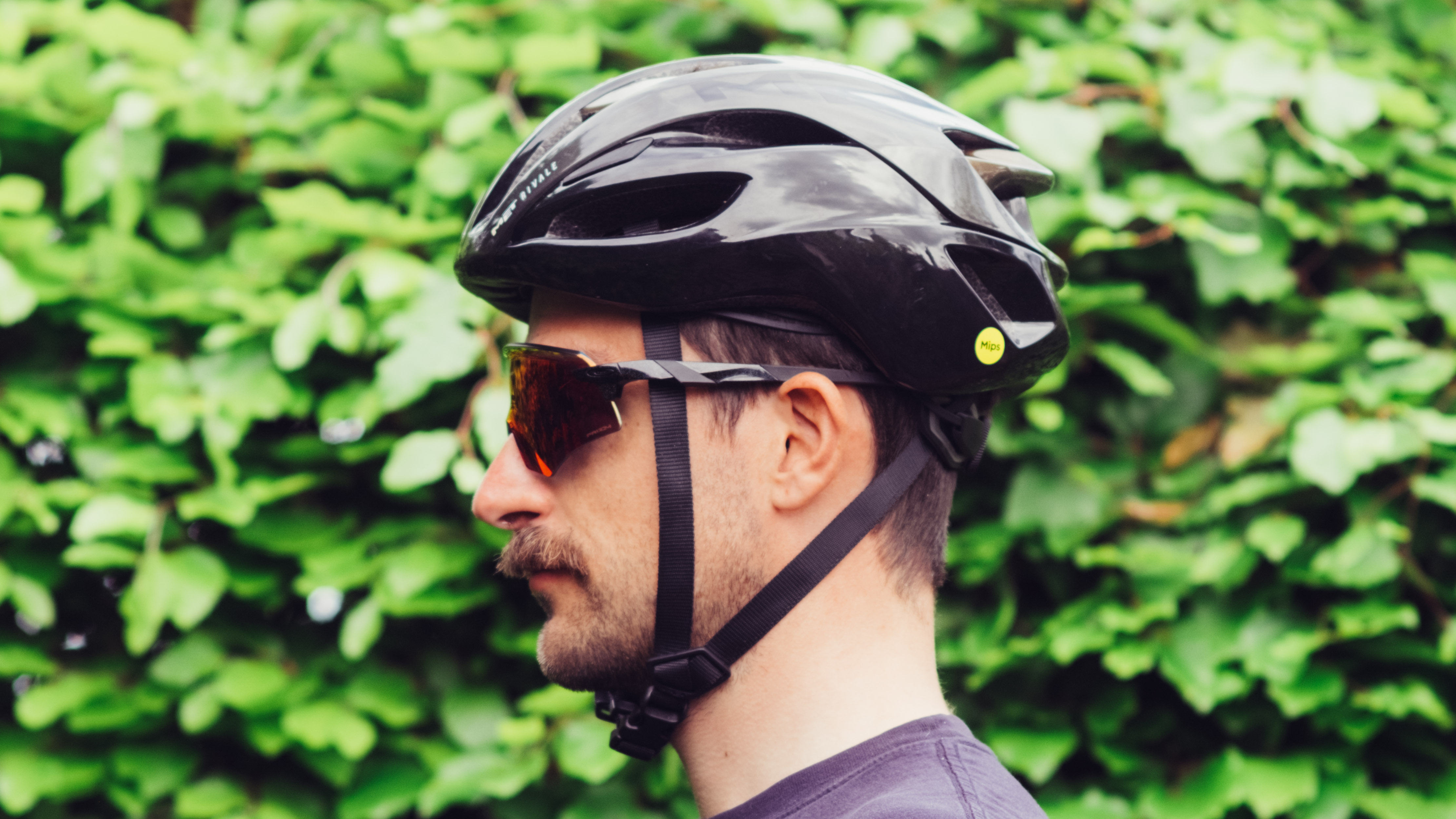
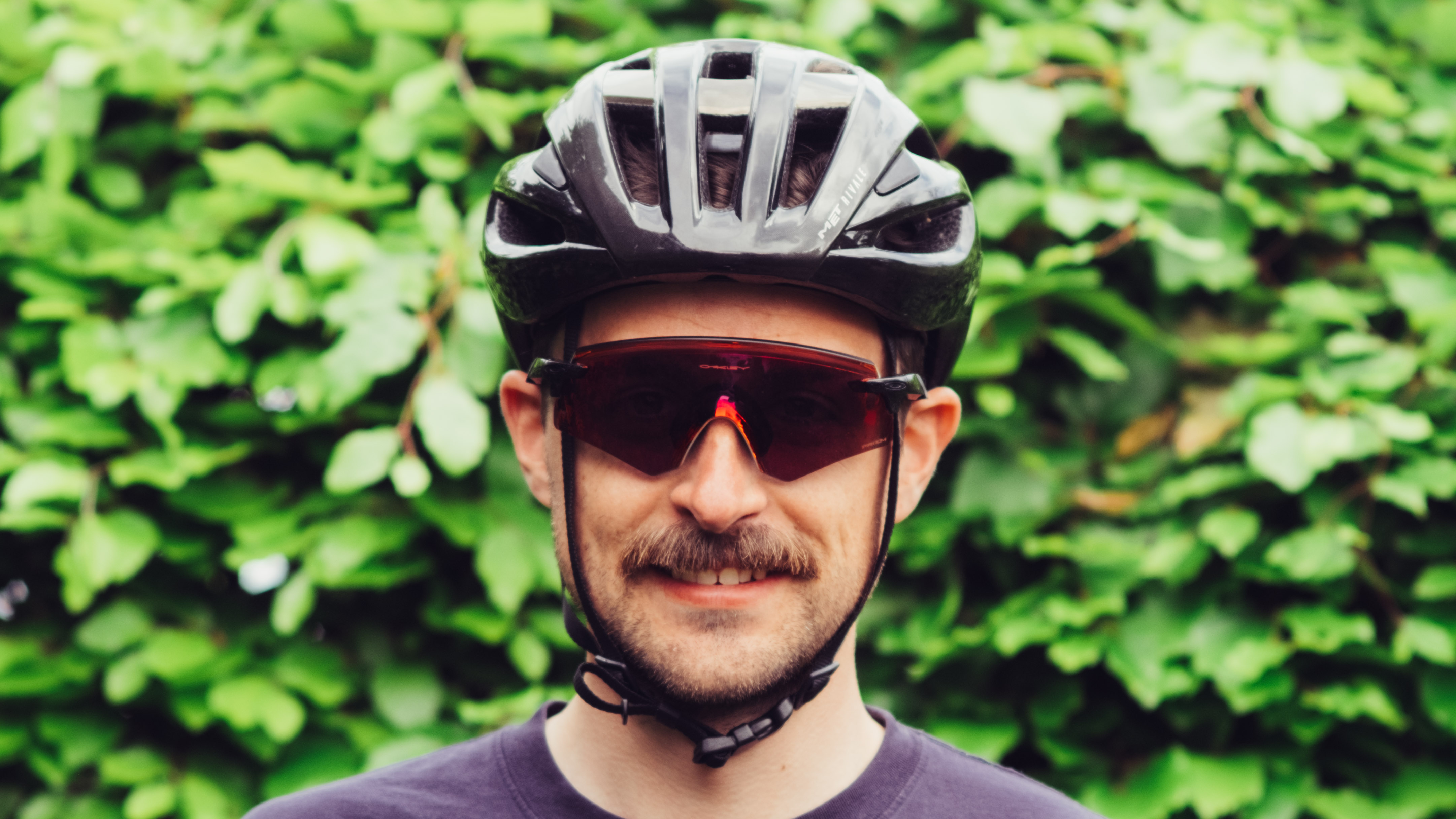
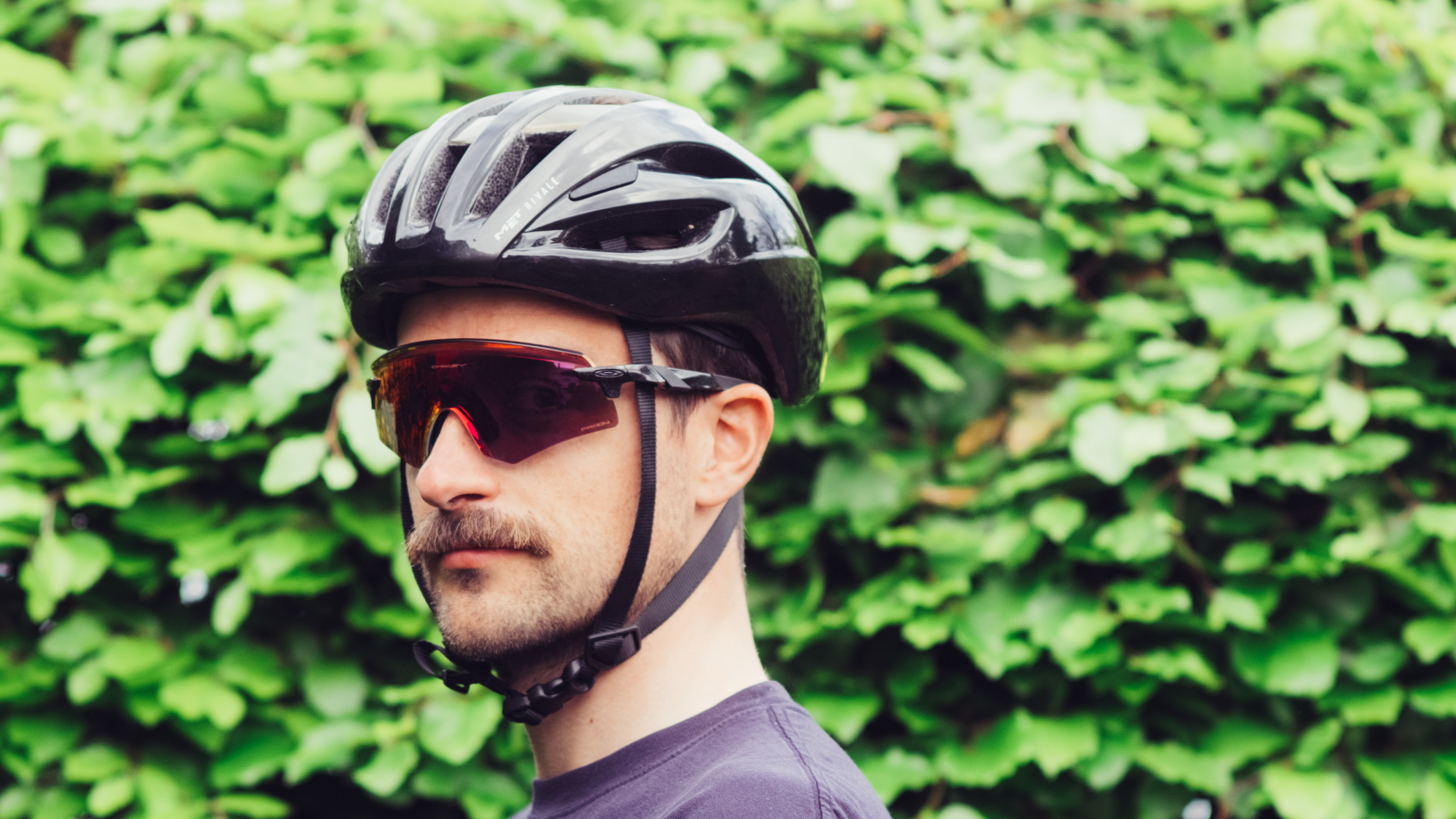
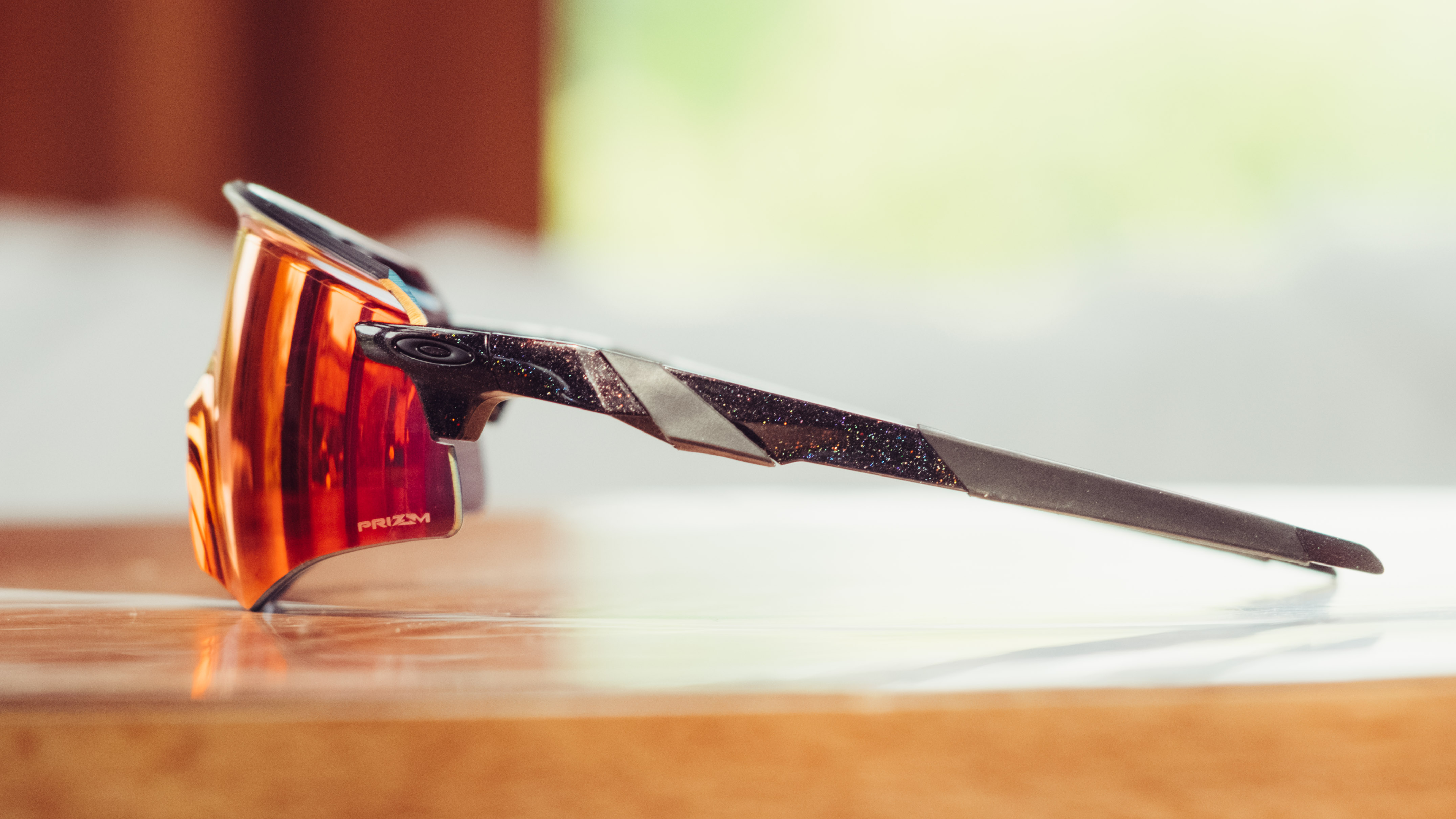
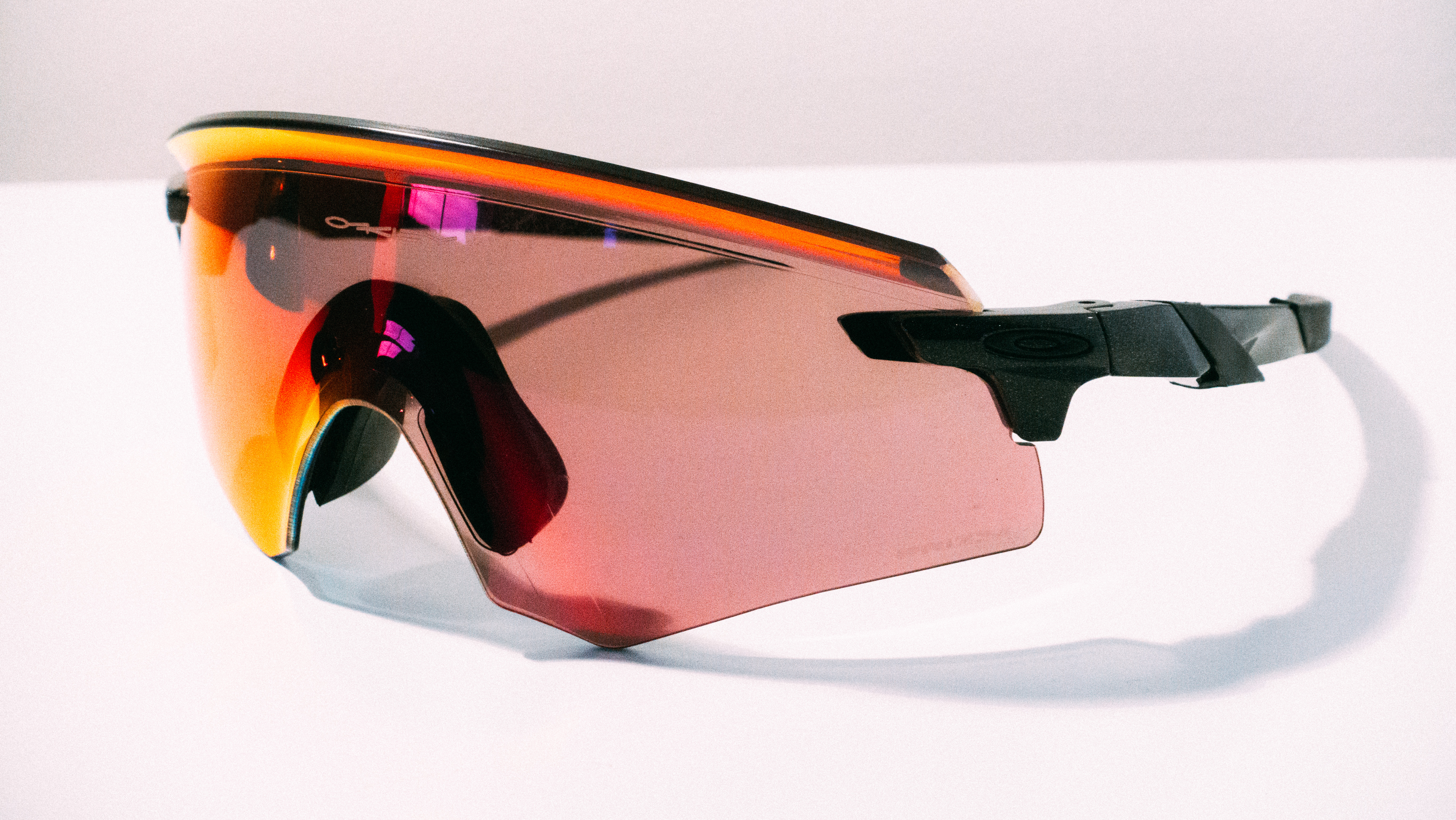
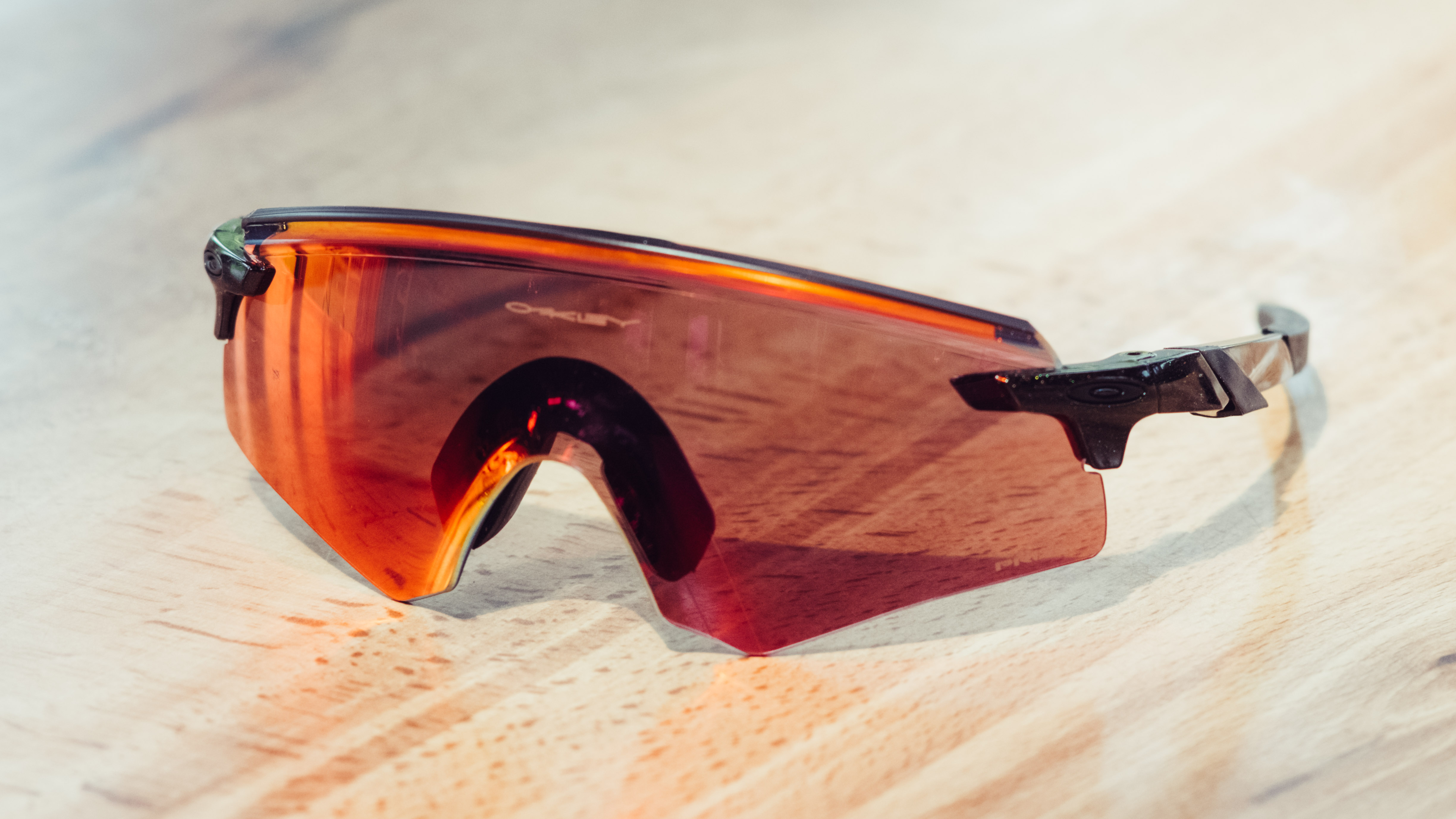
Specifications
Reasons to buy
Reasons to avoid
I have the opportunity to wear more or less any cycling glasses on the market, but when I'm not testing something new the Oakley Encoders are the pair I always come back to. They're not perfect, but they hit a Goldilocks zone offering incredible optics, a brilliant field of view, and a combination of fantastic retention without becoming uncomfortable. They are also the only frameless pair of cycling glasses that hold this well, far better than any of the lightweight options, thanks to the ridge at the upper edge of the lens.
While the lens isn't the biggest, the wrap is moderate so the field of view is very good. The real star though is the lens tint itself: The Prizm Road lens is the best on the market for clarity, contrast, and importantly given that you can't swap the lenses, use over a wide range of light conditions. I've used the Encoder in full, peak summer sun all the way through overcast conditions, to near twilight.
The nose and arm grippers ensure the whole package stays in place with a tenacity that's unmatched by anything else. The only drawback is that the nosepiece, replaceable to tune the fit, has a wide rubber halo that does slightly encroach on the field of view. If I had to keep only one pair from my massive stash of cycling glasses it would be these. If you want to know a little more I've written a full review, so you can delve even deeper. It's also worth noting that, visually at least, the Encoder shares a lot with the more maverick-looking Oakley Kato. I prefer the Encoder, but the Kato is also decent if you like the look.
Everything I've said here is also true for the vented variant, the Encoder Strike. It's a slightly different lens shape, but not enough to make it perform any differently. If you live somewhere particularly humid then go for these instead.

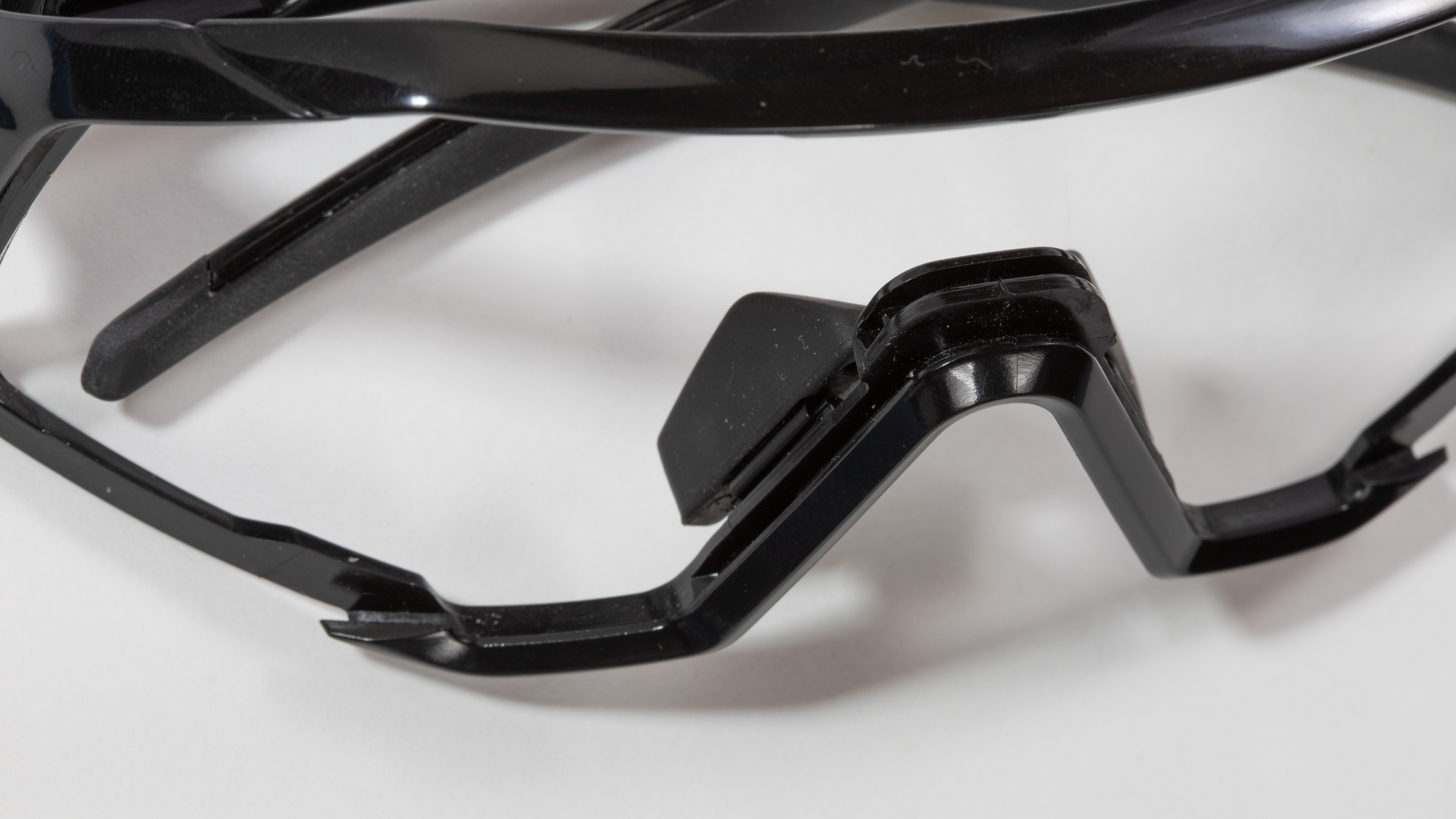
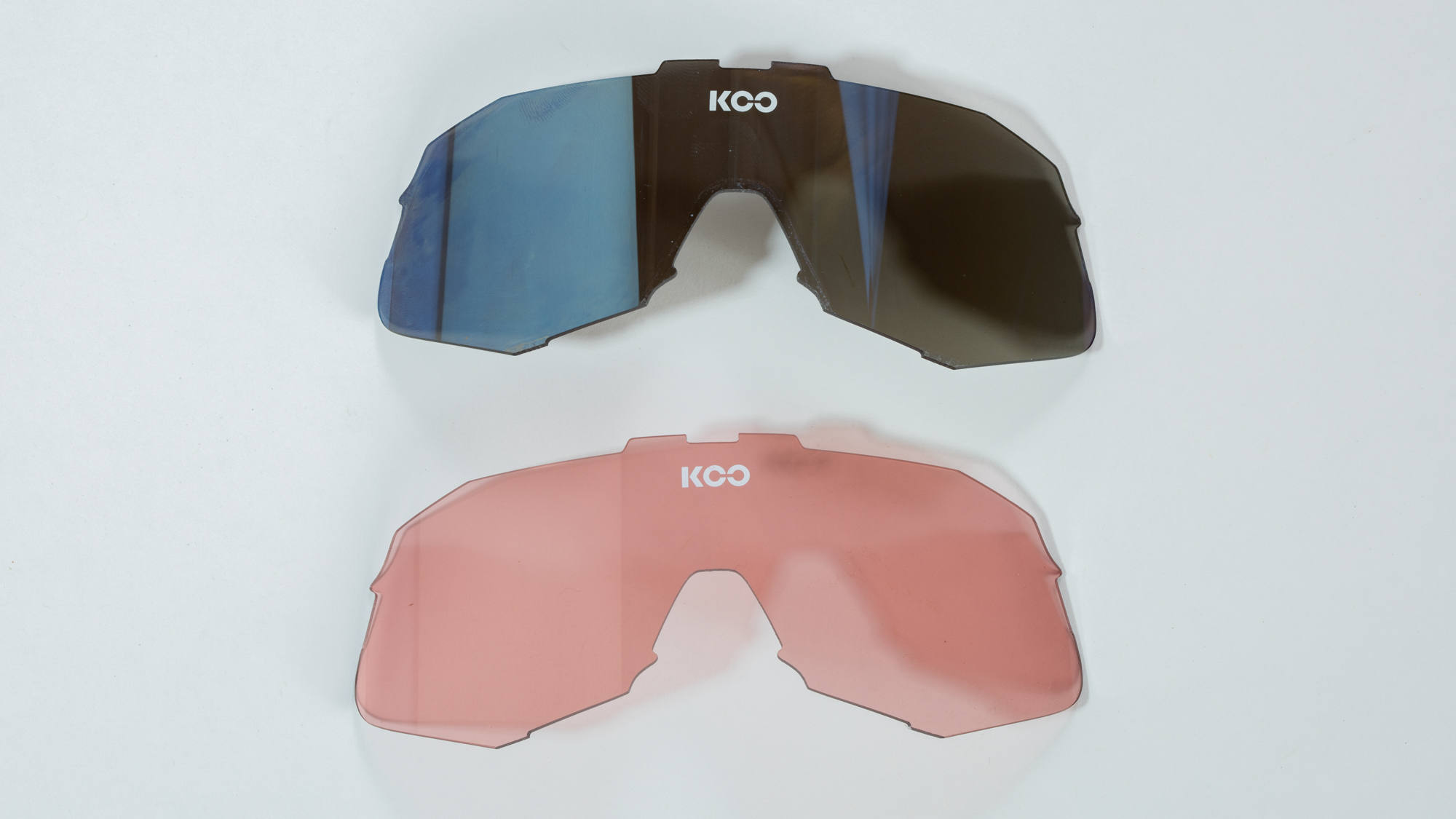
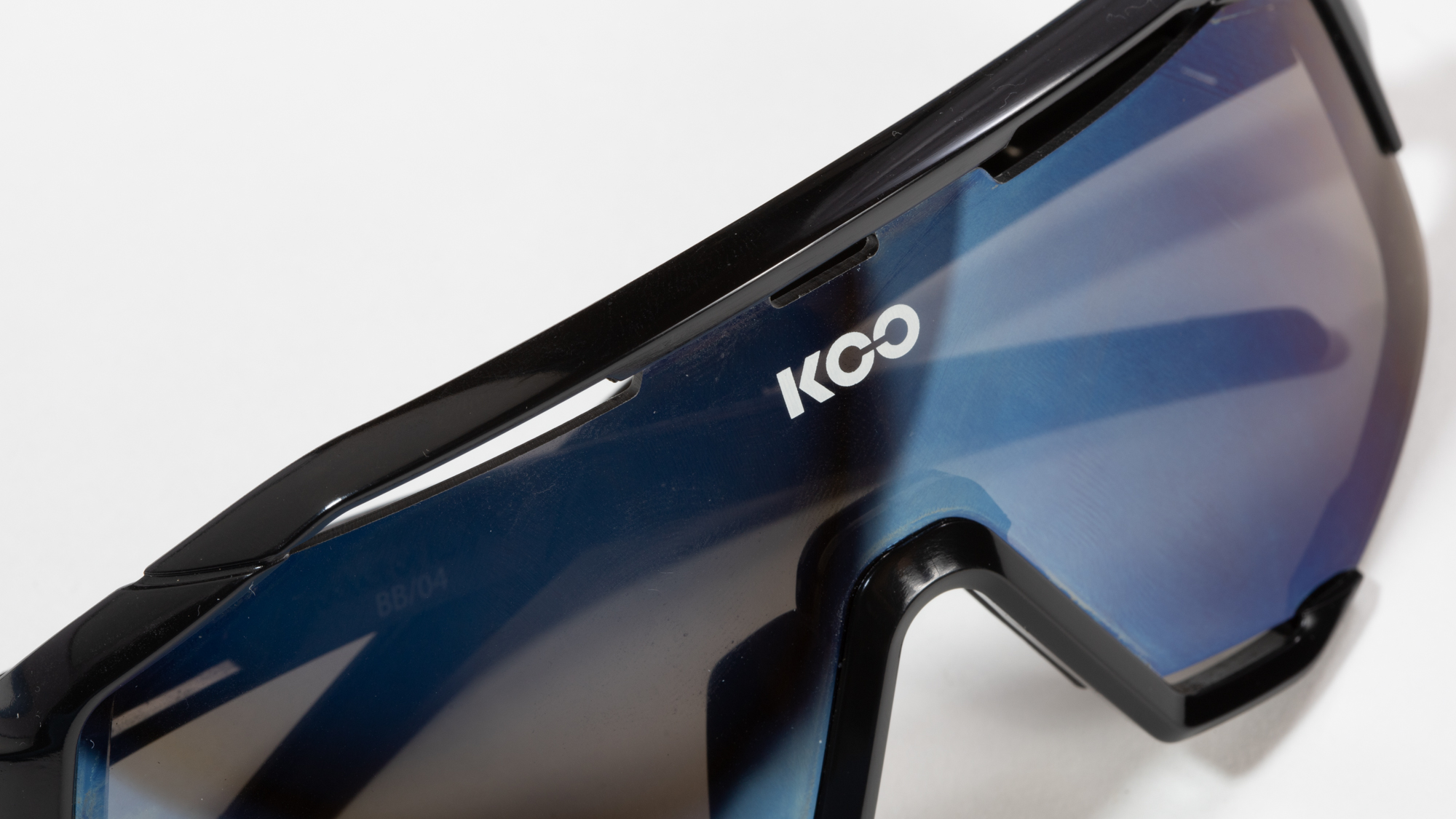
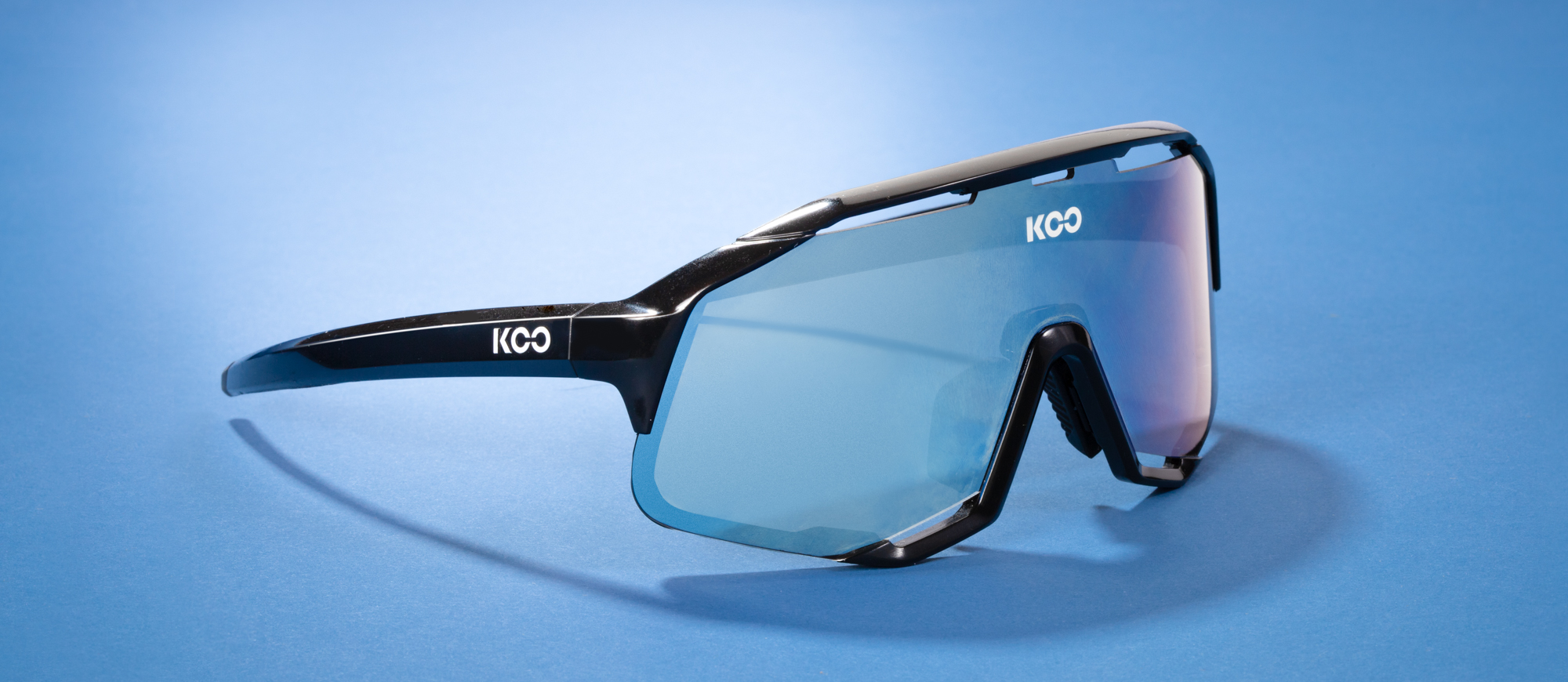
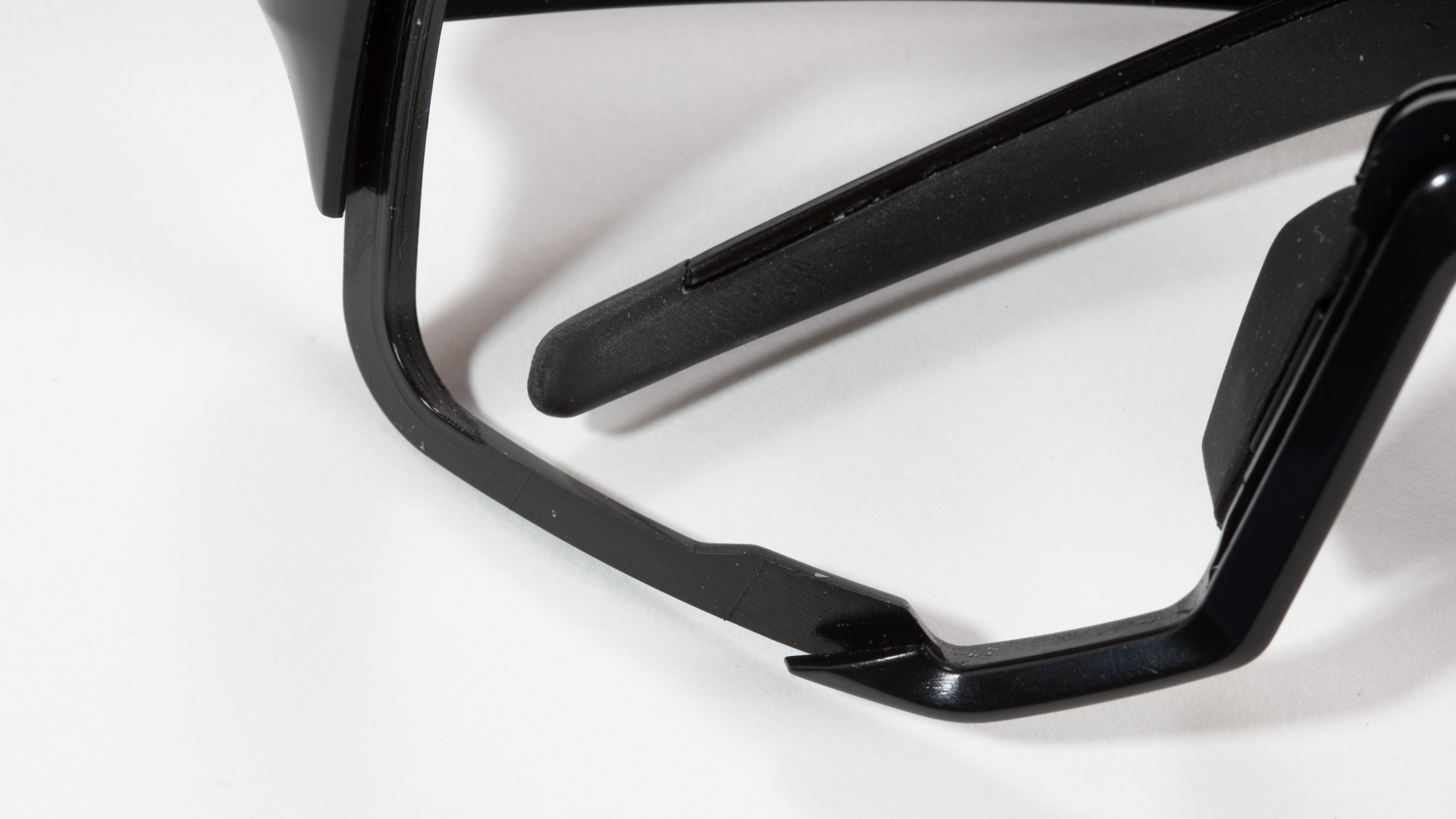
Specifications
Reasons to buy
Reasons to avoid
If I don't reach for the Encoders I usually grab the Demos from Koo, the eyewear sister brand to Kask helmets. The Demos share a lot of the same qualities that make an excellent pair of cycling glasses, those being good retention, good optics, and an unimpeded field of view.
The Demos sit a little higher on the face than the Encoder, and as such are slightly better suited to more aero positions where you're looking more through the upper portion of the frame. The Zeiss lenses are a little lighter in tint but offer similar clarity and contrast. Perhaps not so brilliant in really strong sun, but in lower light they're much the same.
Unlike the Encoder, you can swap the lenses easily on the Demos, though no spare is included, which feels like a letdown at this price point. All the same, the build quality feels excellent, with a really solid hinge.
Honestly, the main thing that I didn't like about the Demos was the packaging. If you're environmentally minded then it'll probably enrage you too, as a single pair of sunglasses came in a box larger than one that would contain a pair of hiking boots. Within this large box was an intricate inset structure, which then housed another cardboard box and sleeve, within which the glasses case and sunglasses themselves were housed. I've no idea if this is still the case, but it was ridiculous.
My colleague Josh Ross has penned a full review for the Demos, and our opinions tend to match up nicely, so dive in if you want to find out more.

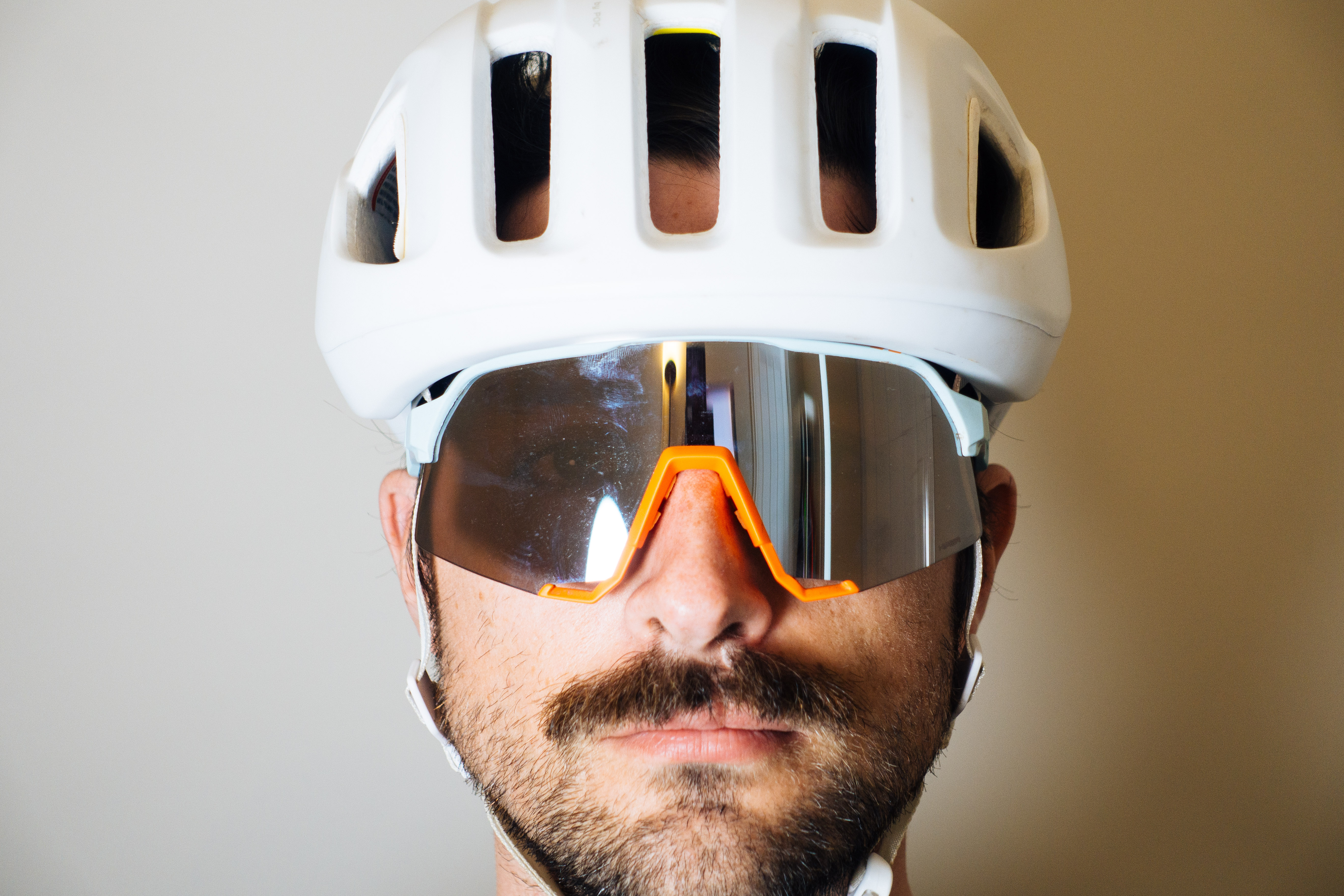
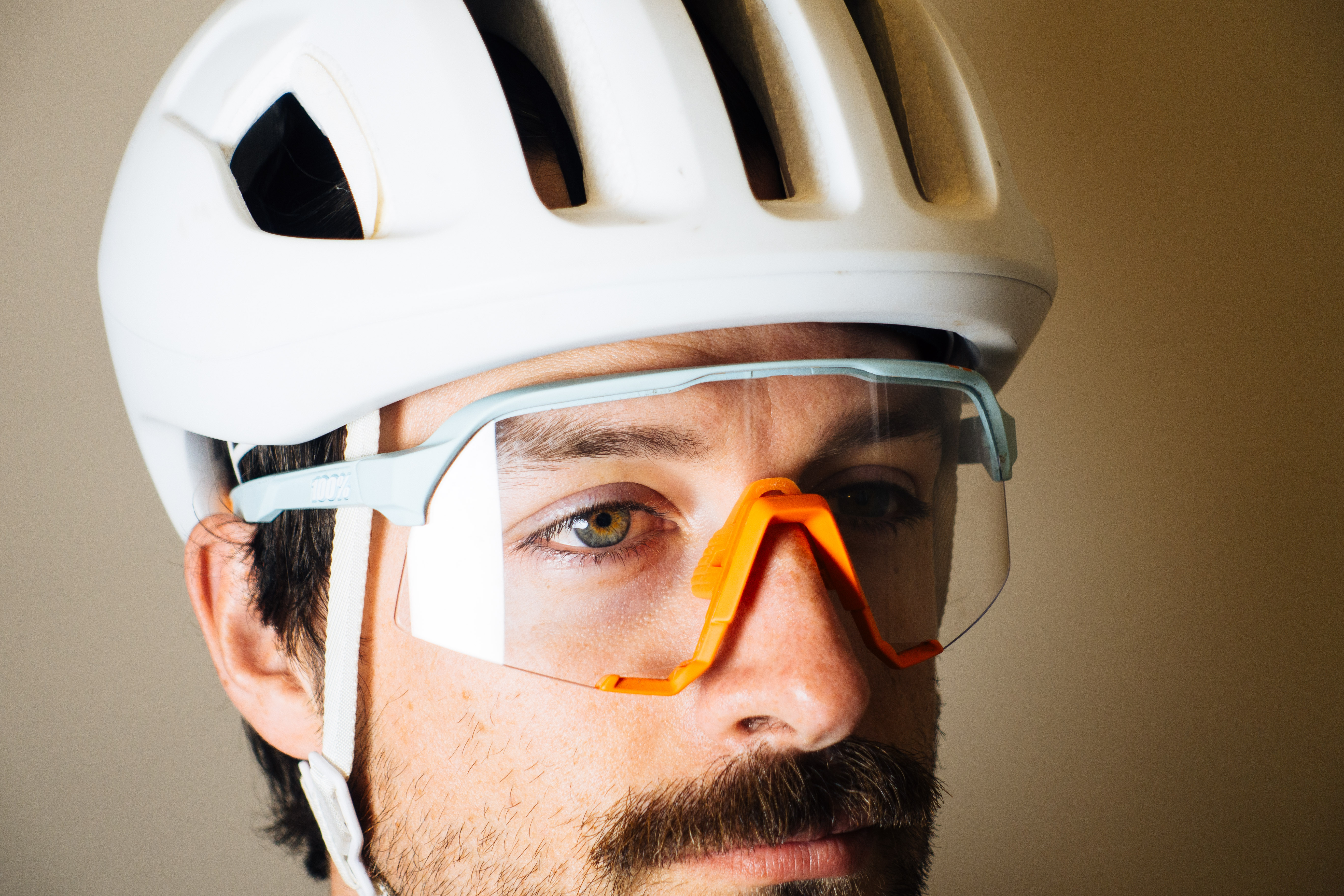
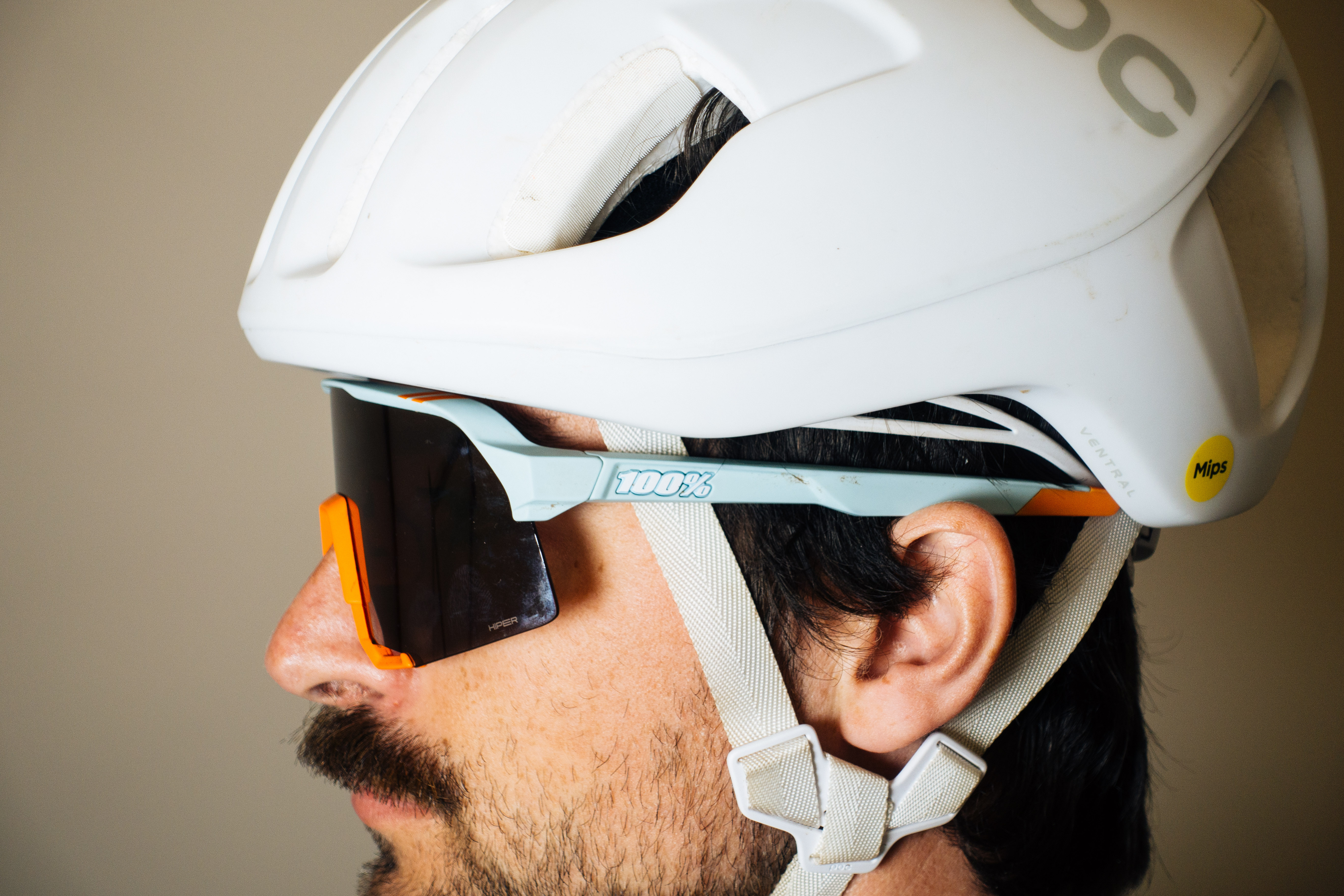
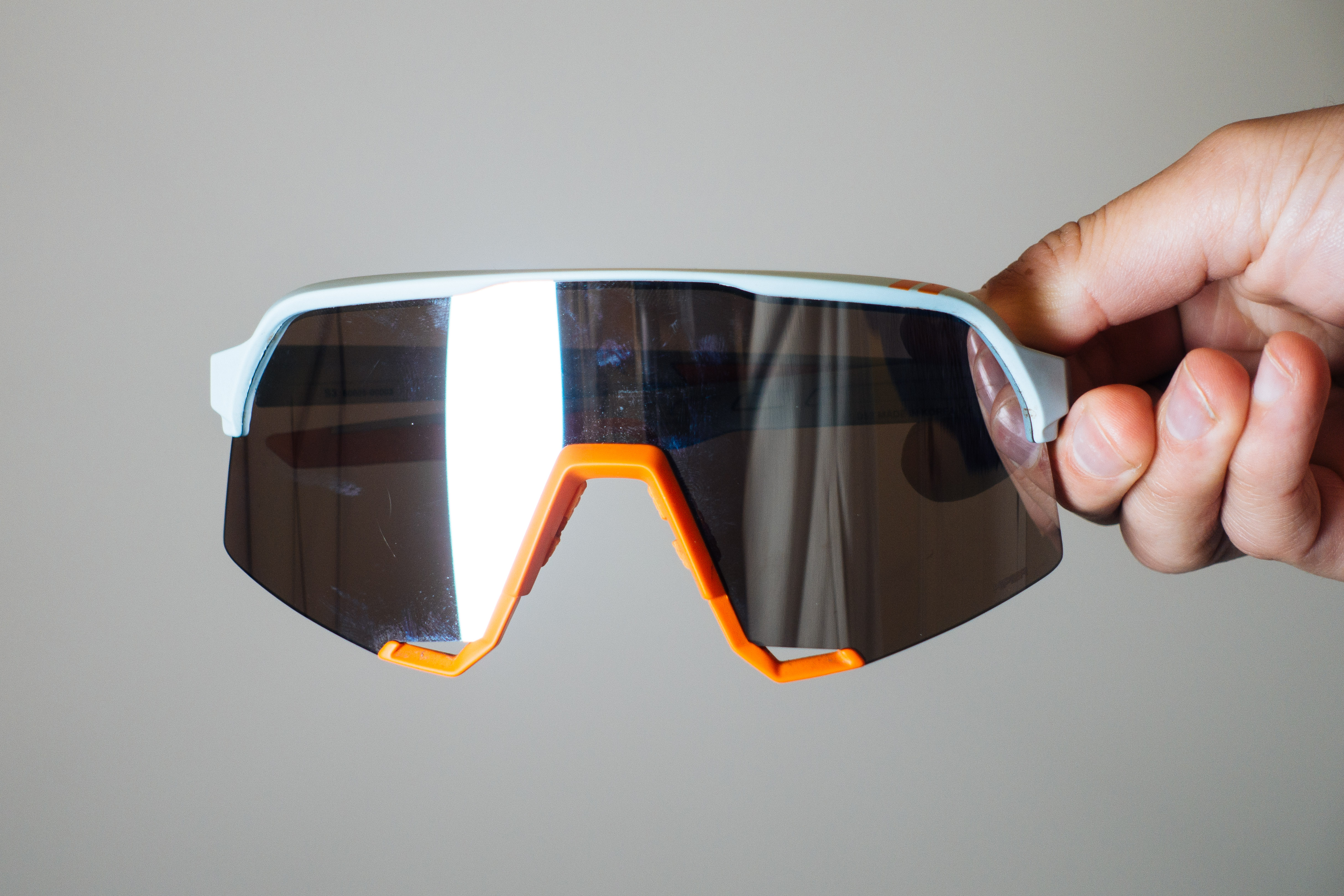
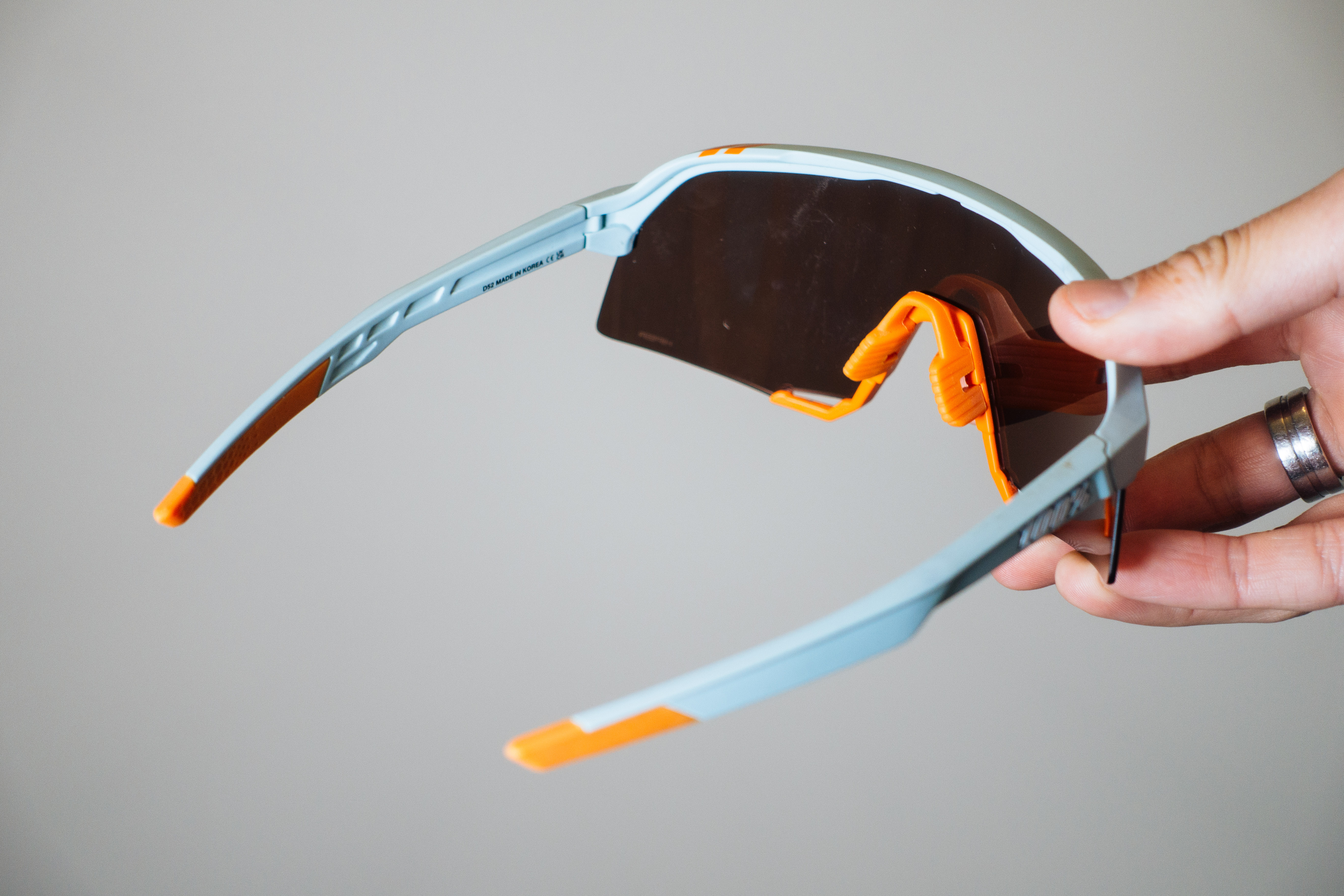
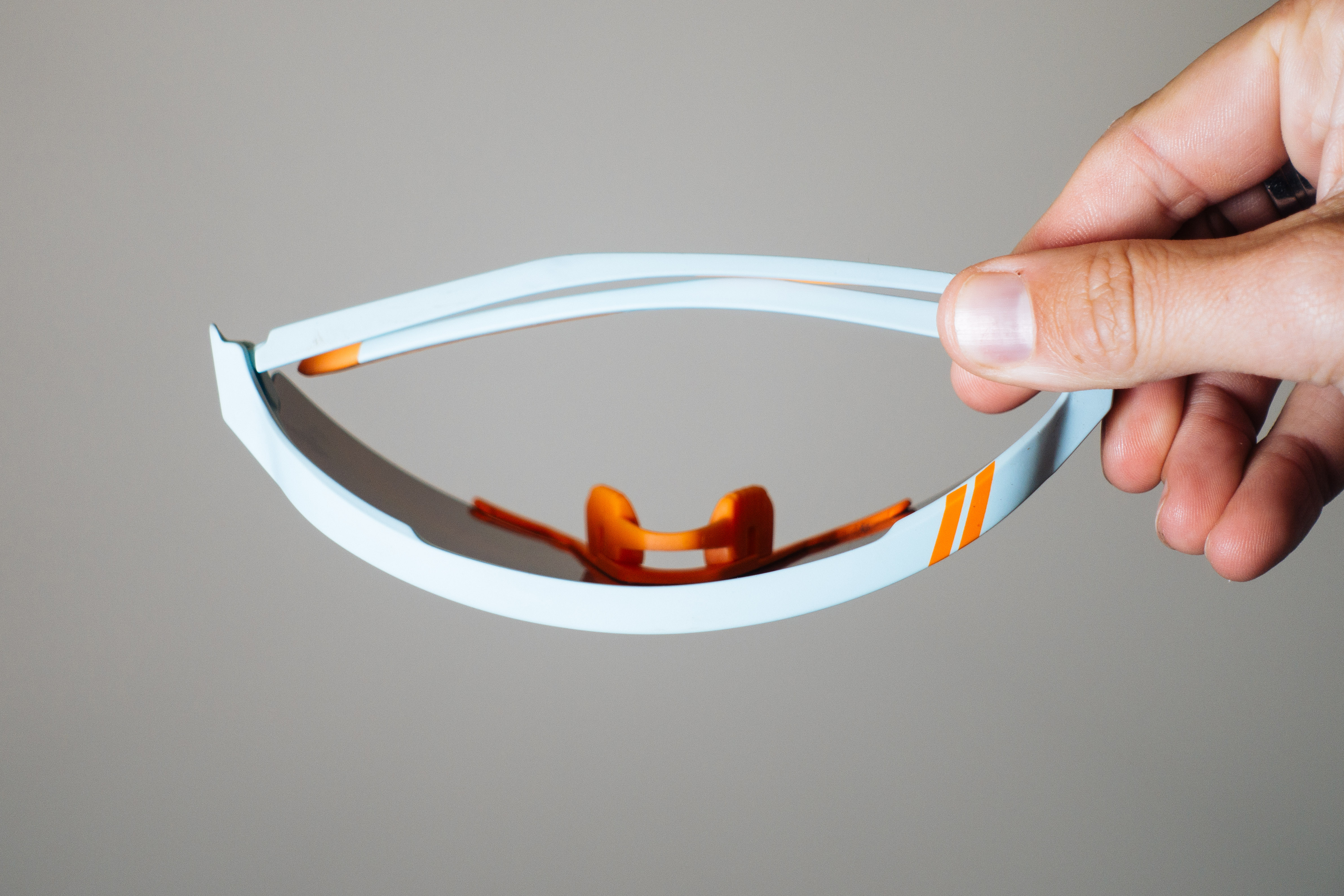
Specifications
Reasons to buy
Reasons to avoid
I've got the S3 from 100% in a colourway that's a clear homage to Gulf Racing. Given the brand's background in American Motocross, it feels semi-fitting. The soft-touch finish, something that you can only really get from 100% to my knowledge, does also lend a noticeably premium feel to proceedings, though if you have greasy hands from a dropped chain the frames can hold stains more than others.
Finish and colours aside the S3 are a brilliant pair of cycling glasses. Perhaps not as complete as the Demos and the Encoder, but still very good. The nosepiece doesn't hold so well, and while the arms grip very well they are quite long and don't have a strong wrap meaning they're more likely to interfere with the rear cradle of a helmet.
The HiPER lenses, an orange base with a silver exterior in this case, are excellent in both shape and contrast. A little less good than the Prizm offerings from Oakley and the Clarity lenses from POC, but on the flipside you get a clear lens in the box with every set of 100% glasses, so you can use them at night and in the winter with ease. For really filthy gravel rides this is excellent as you can just throw the clear lens on and not worry about scratching off the lens coating with grit.
Another benefit to these, mostly for aesthetic reasons, is the wide range of colour options. I'd always advocate for choosing the lens you need first, but I appreciate that for a lot of you cycling glasses are a style-first decision, and so if you need options then you'll have many to choose from here.
My 100% S3 review goes into all the reasons why I think these are the best choice if you spend a lot of time riding outside in winter.
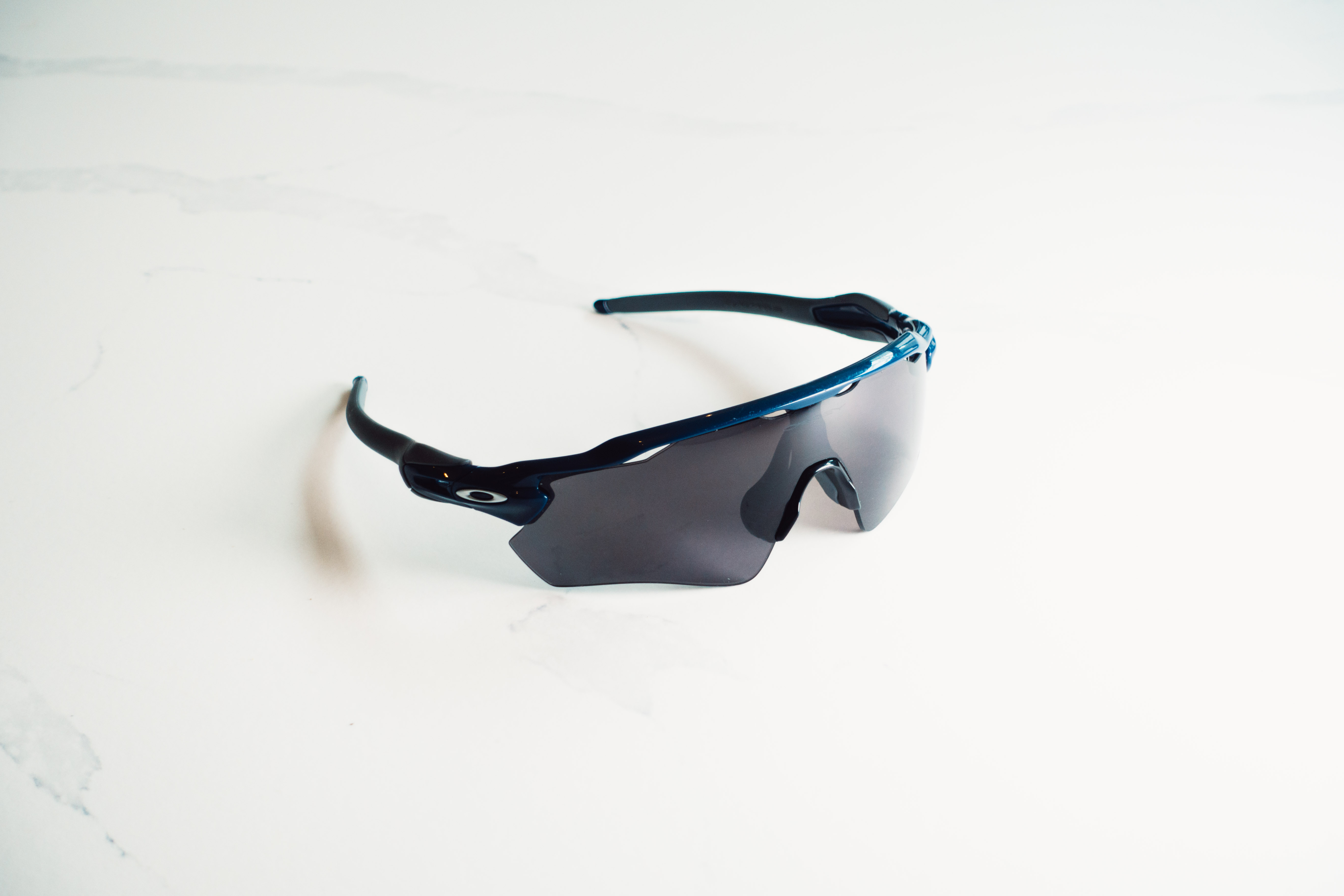
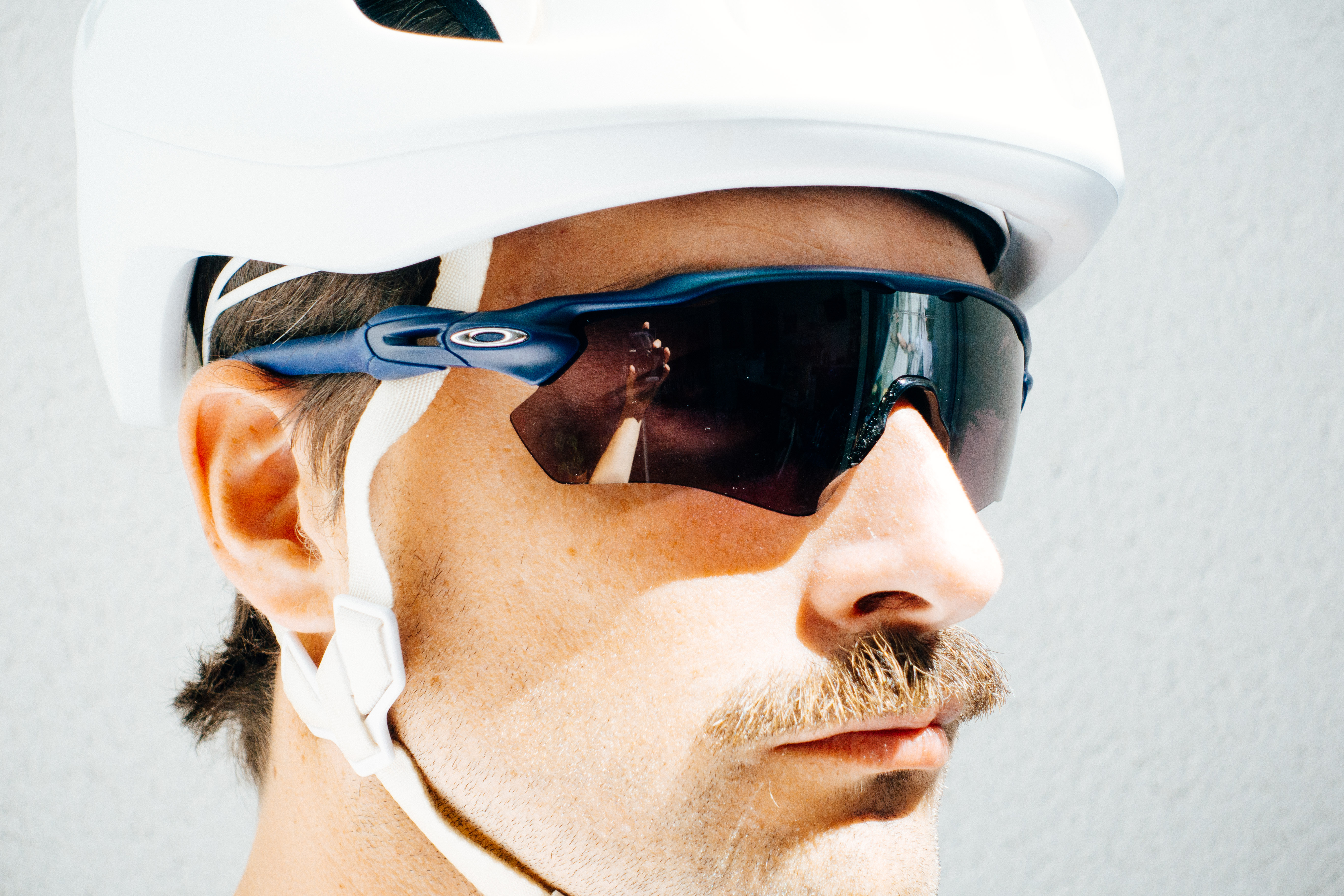
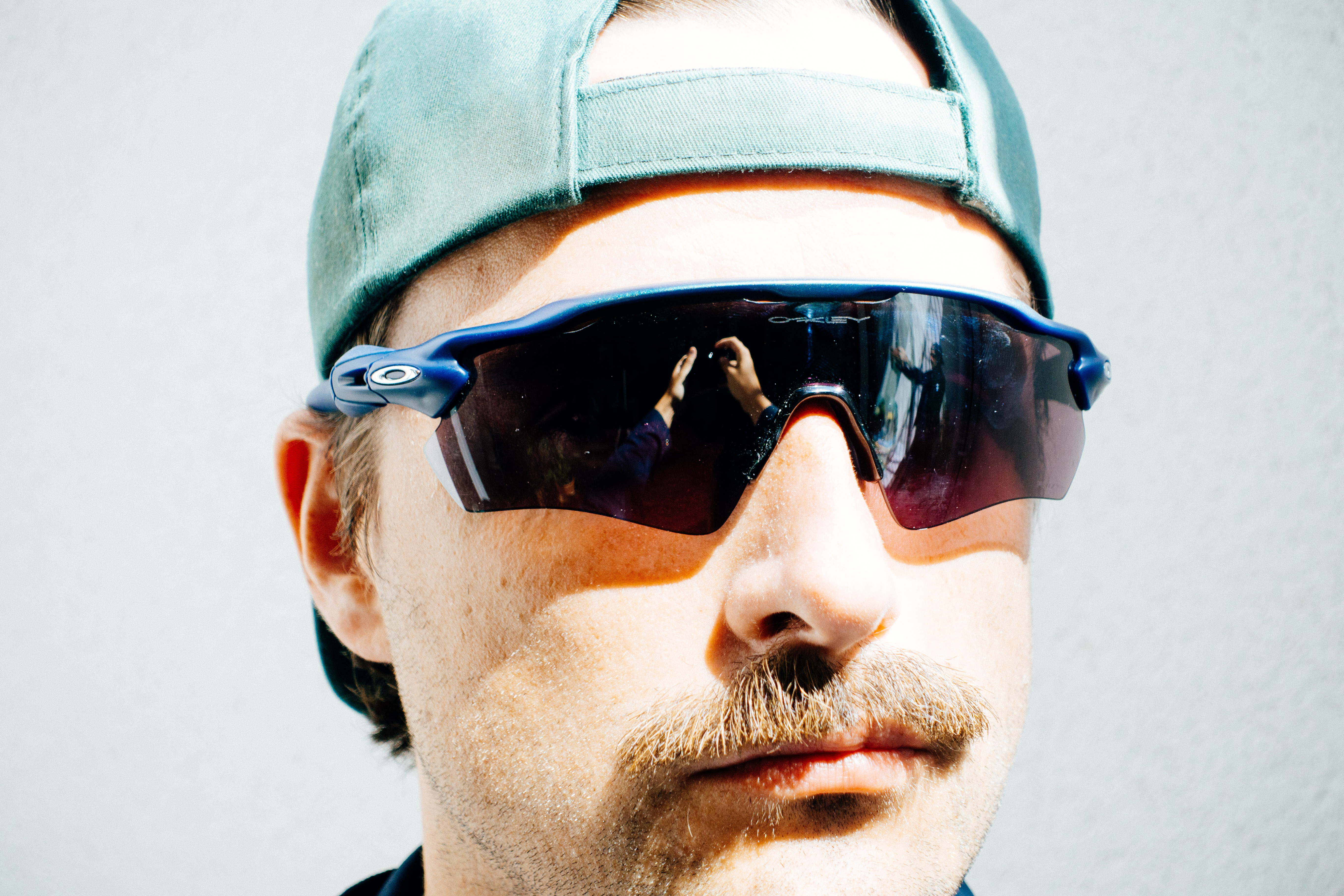
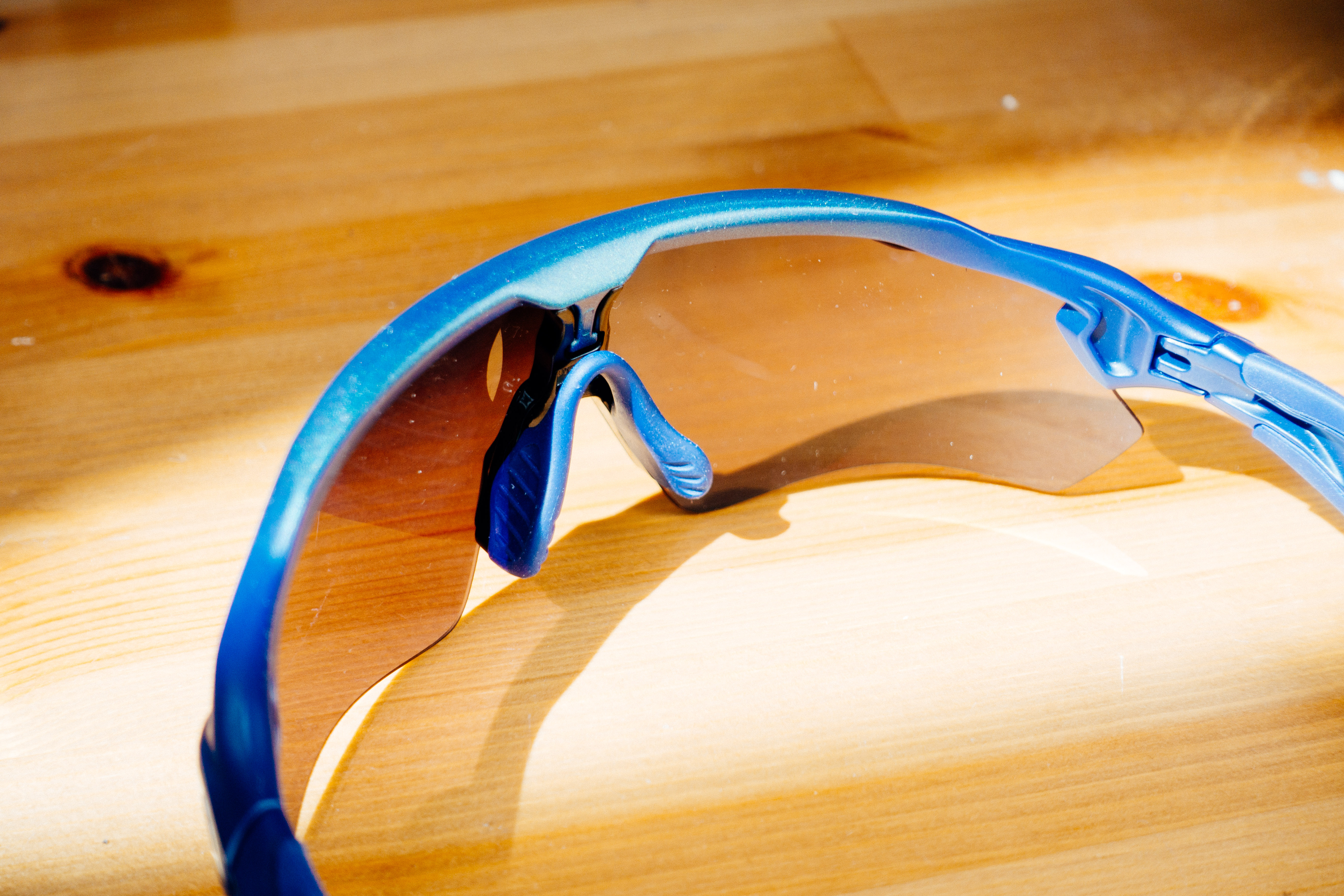
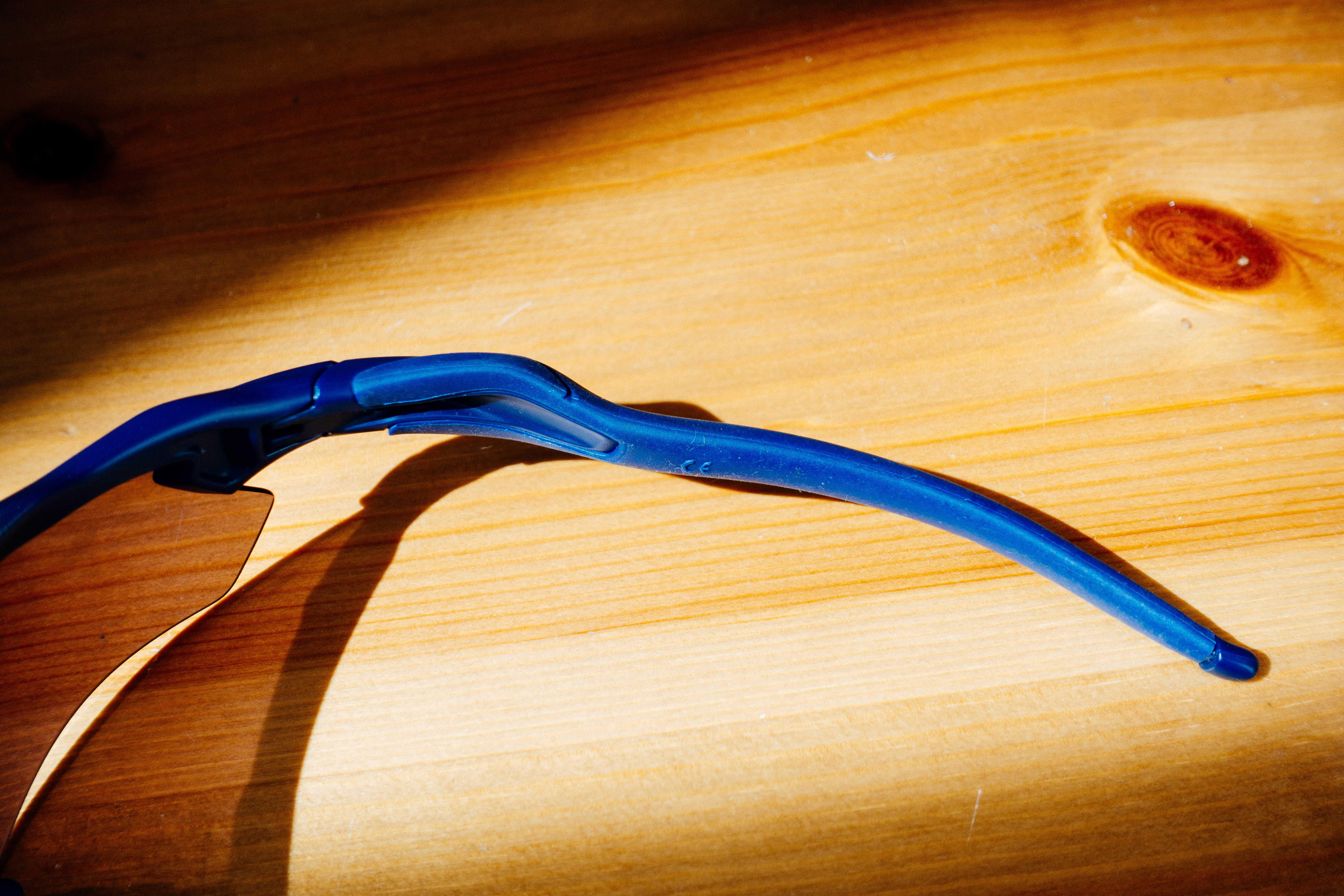
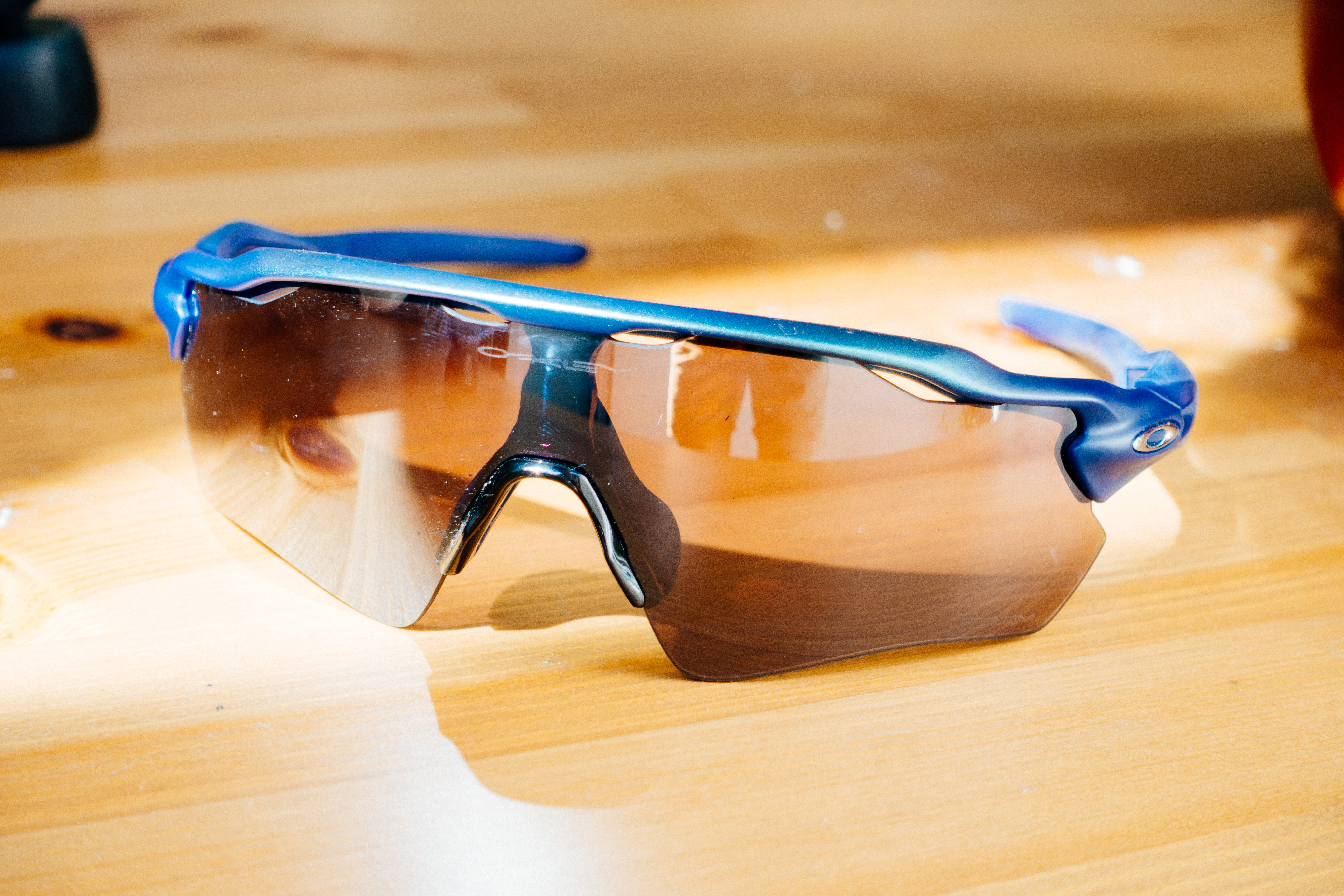
Specifications
Reasons to buy
Reasons to avoid
The Radar EV Path aren't really my cup of tea, but they do exist in a space in the market that transcends purely cycling, and offer a true multisport offering that will no doubt appeal to many. This is reflected in a truly dizzying array of lens options available, from the brilliant Prizm Road to golf and watersport-specific options.
They also offer an aesthetic package that doesn't necessarily scream 'cyclist', which may be a bonus to some of you, particularly if you engage in sports other than cycling too.
They're certainly a less arresting visual package than the whopping mono lenses of the POC Devour and the Oakley Sutro Lite, though the smaller lens does offer a more limited field of view, particularly at the top of the lens where the frame does encroach a little on things when in a full aero tuck. I found the frame did basically sit against my eyebrows too, which was a little annoying.
All this aside you're still getting brilliant Oakley optics, and a retention only really topped by the Encoder. If you're into more than just cycling (maybe you do insane things like running too, no judgement) and want something that works well while in an upright position, these are hard to overlook.
My Oakley Radar EV Path review goes into why I think these still have a place amongst the best on the market.

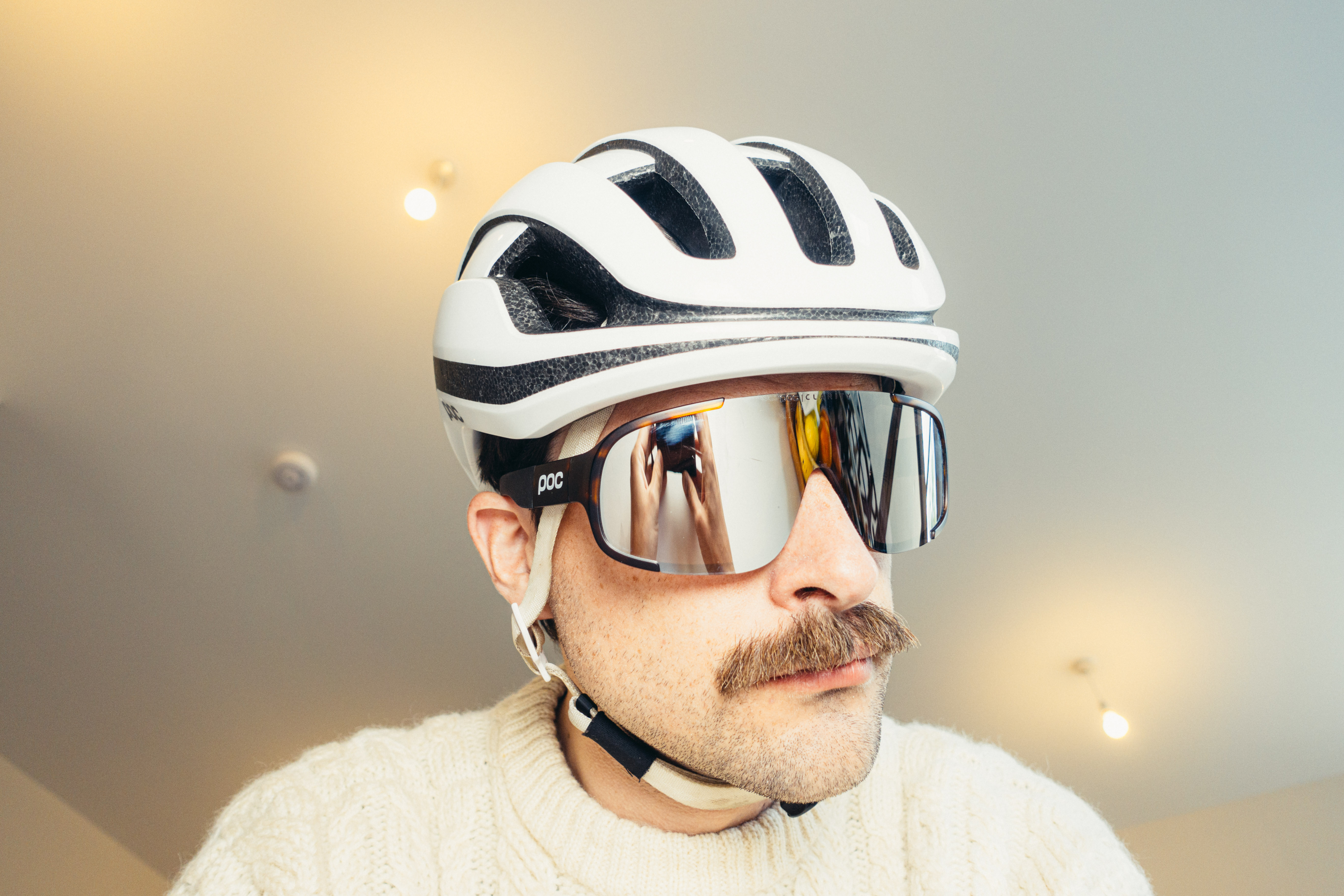
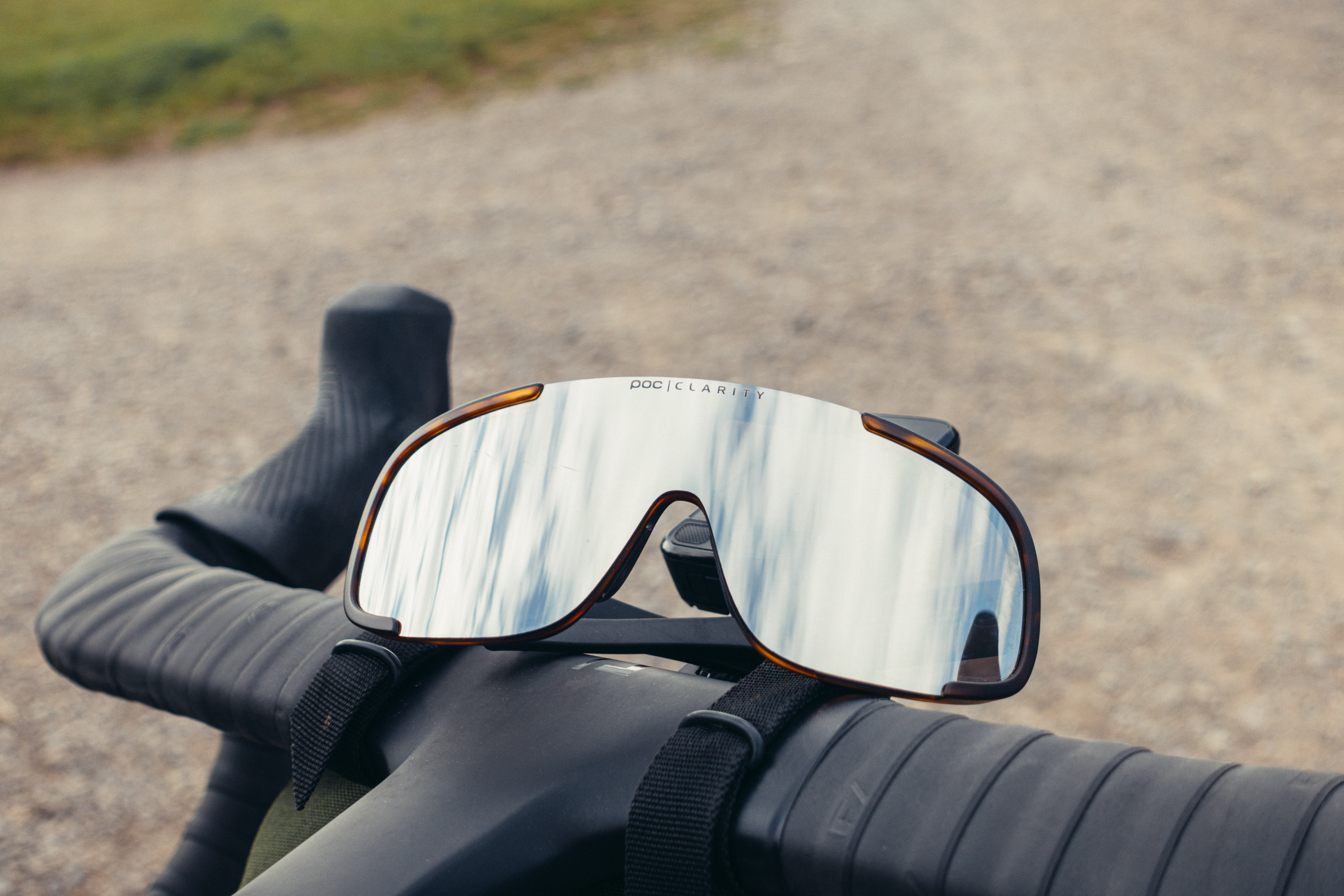
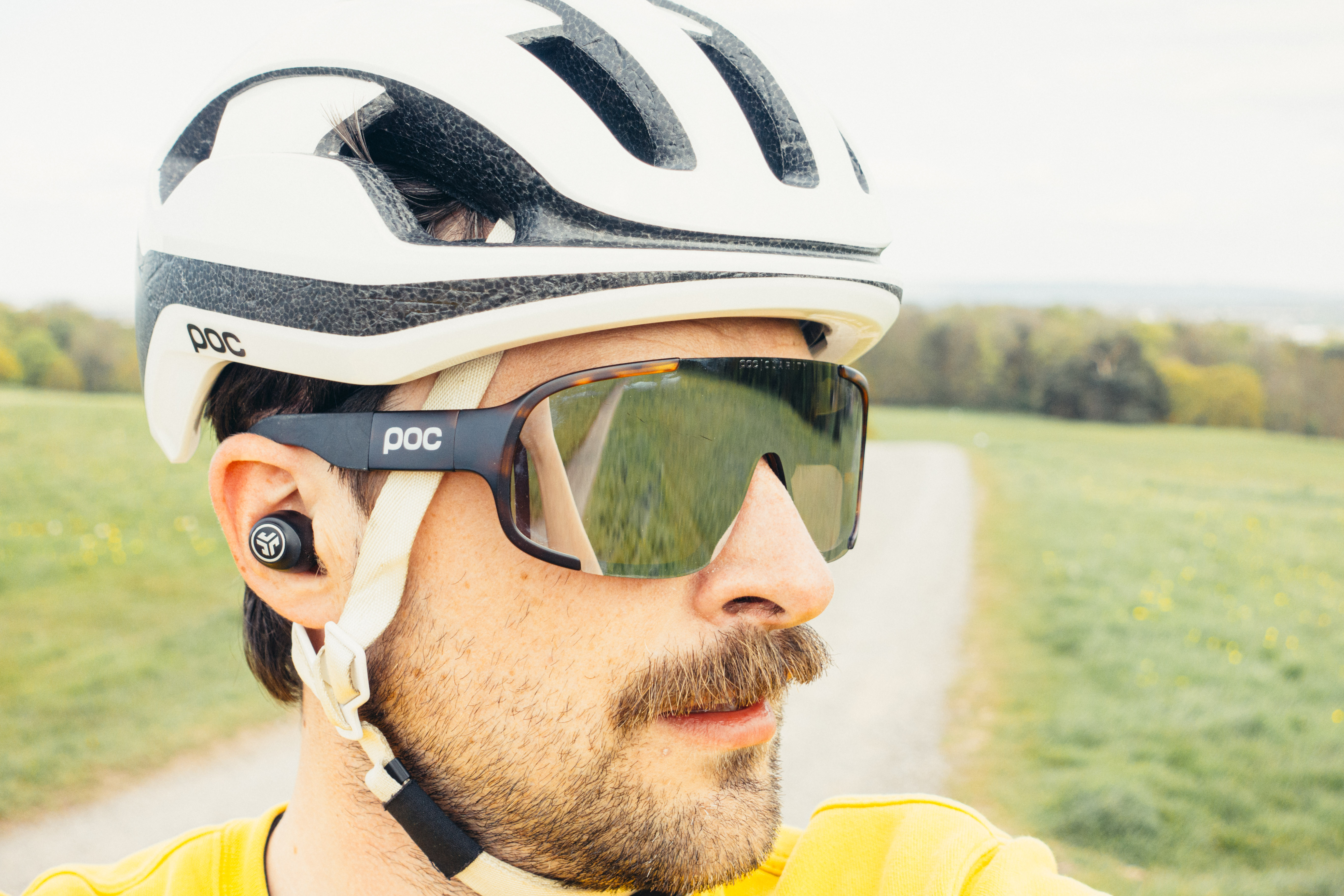
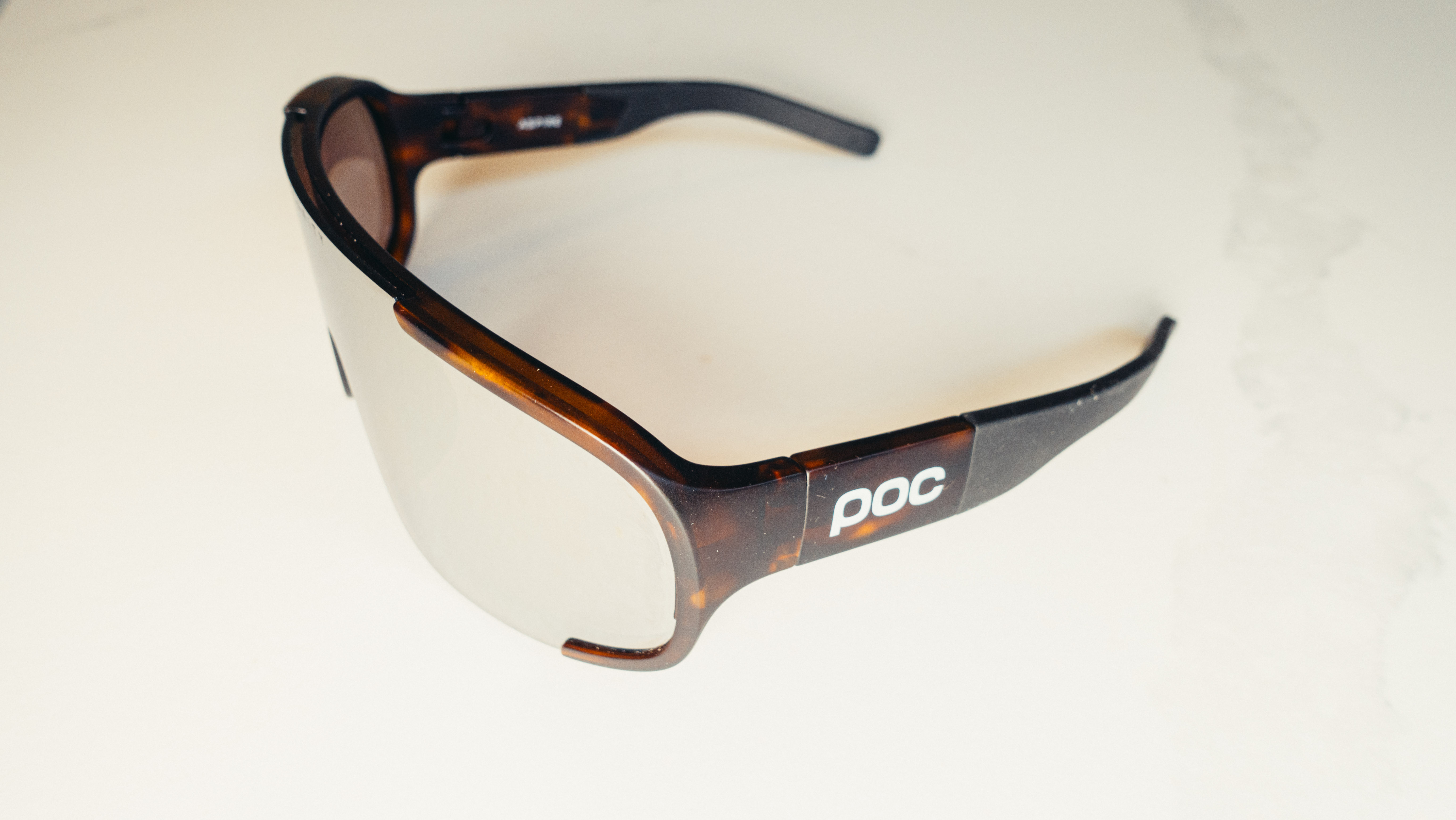
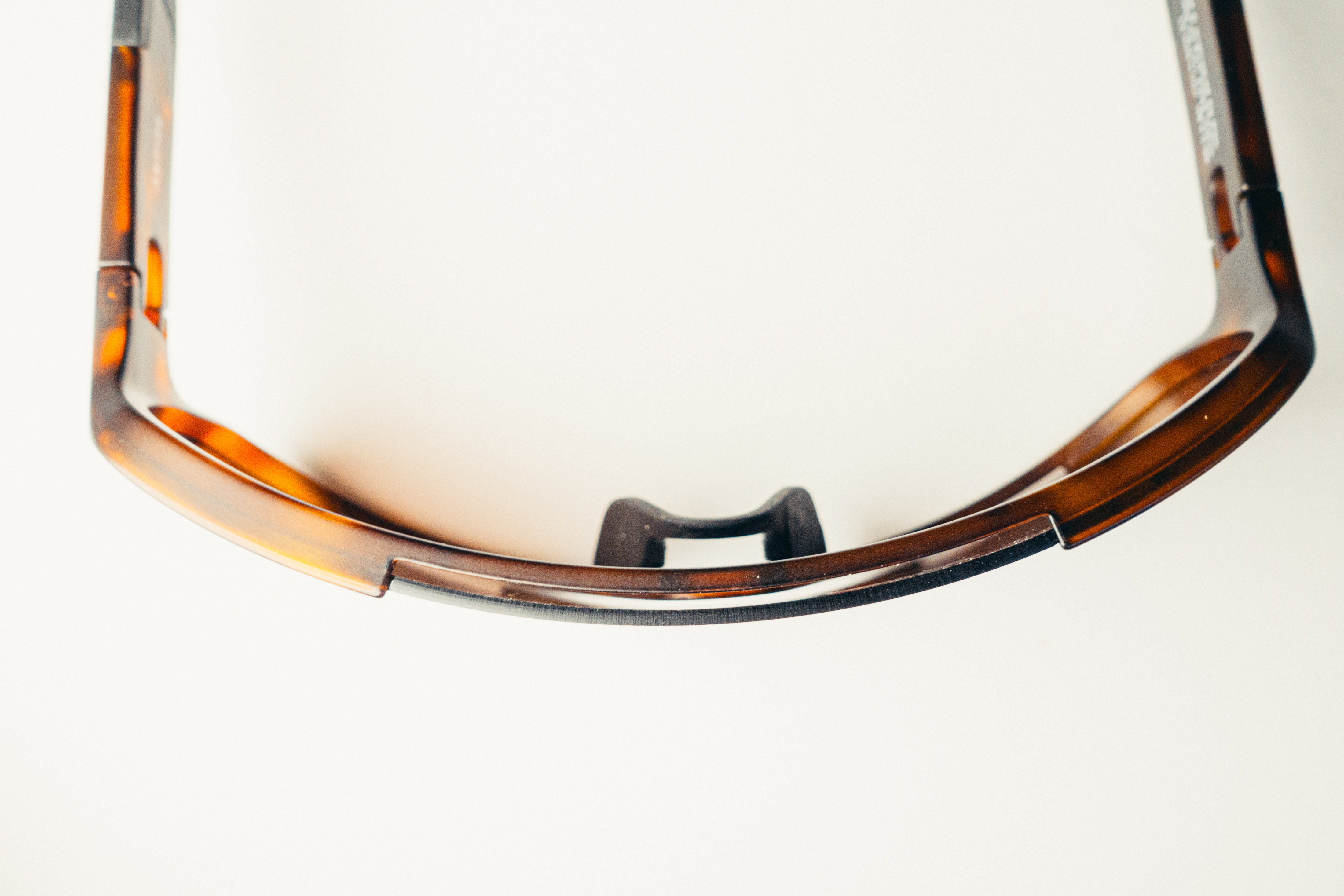
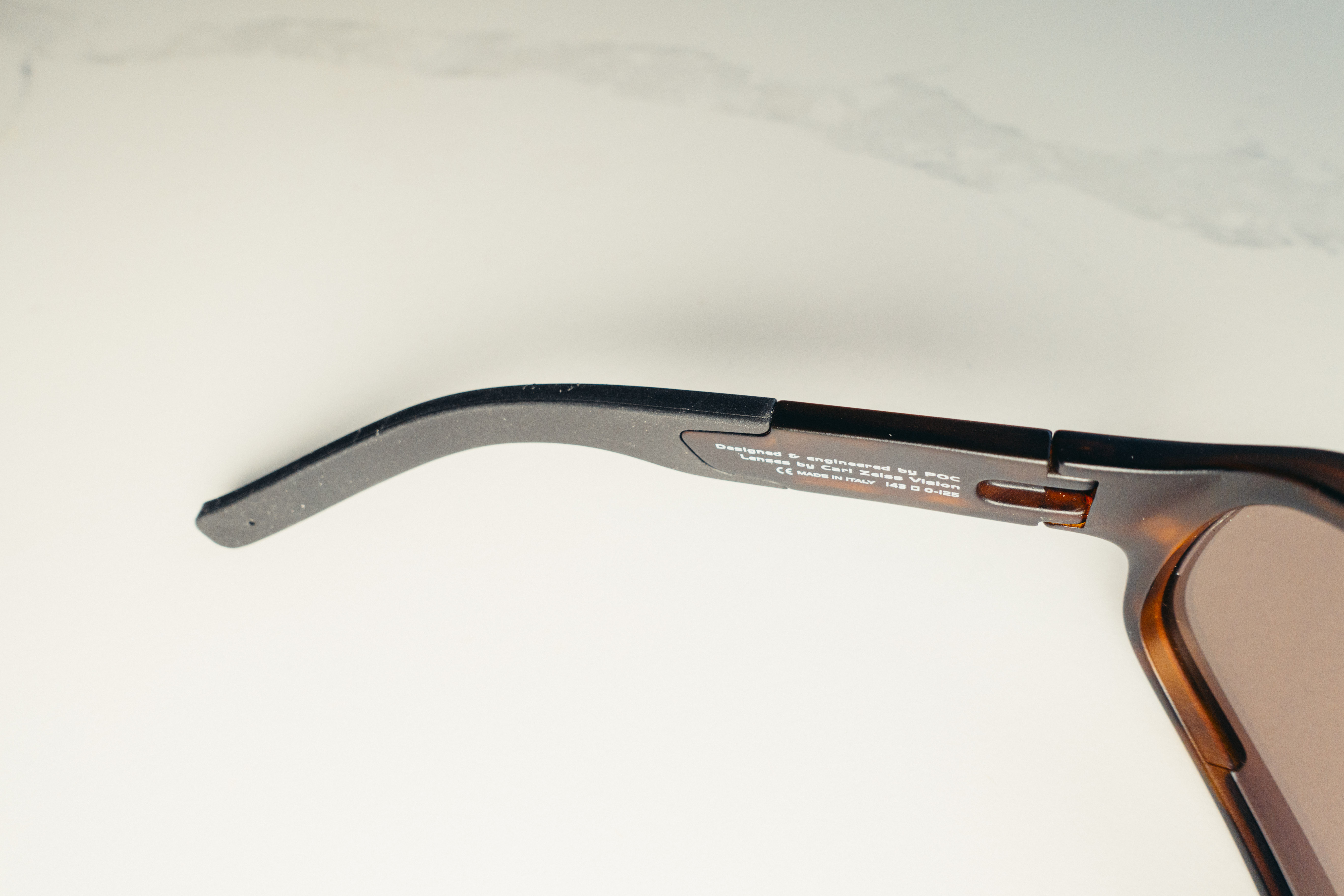
Specifications
Reasons to buy
Reasons to avoid
Cycling glasses from POC all have a similar aesthetic; a big lens with rounded edges that are noticeably wider than the competition. The Demos have size, the Elicit have low weight, and the Propel have aero. The Aspire are the generalist, and though they have some drawbacks I think they're the coolest looking sunglasses on the market, especially in the tortoiseshell that I've got. This may be thanks to their use by the EF Pro Cycling teams, but whatever it is it works for me.
The large lens, full frame, and thick, tuneable arms make them one of the heaviest pairs on test, and while the retention isn't quite so good at the nose, the bendable arms can be shaped to fit even my tiny pea head easily, so they don't go anywhere.
The Clarity lenses are second only to the Prizm range for me, and offer a huge field of view. Not so uninterrupted as that of the frameless Elicit, but not far off. The size and lack of vents do mean I tend to not take them out on absolutely roasting days, as they can be a little stuffy, but most of the time they're fine as they sit quite far from the face.
Lens swapping isn't the easiest, and they don't come with a clear lens like some other POC options, but much like with Prizm lenses, I tend to not feel like I need to swap until it's basically time to just take them off and stow them in the helmet. It also goes without saying that they play very nicely with POC helmets. One thing about POC lenses particularly is that I've found they're more prone than others to pick up fingerprints and smudges.
If these look like they might float your boat then head to my POC Aspire review for all the details.
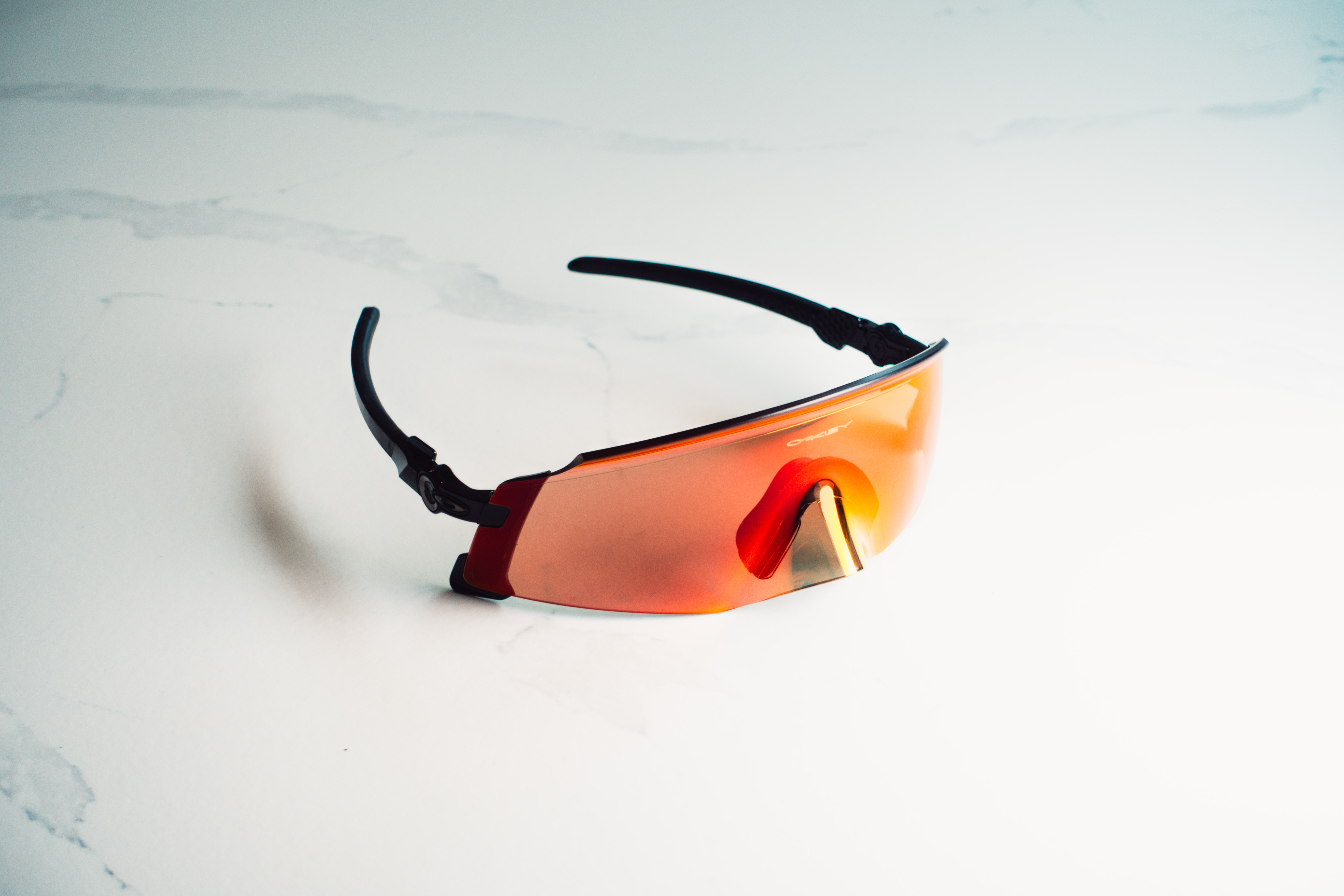
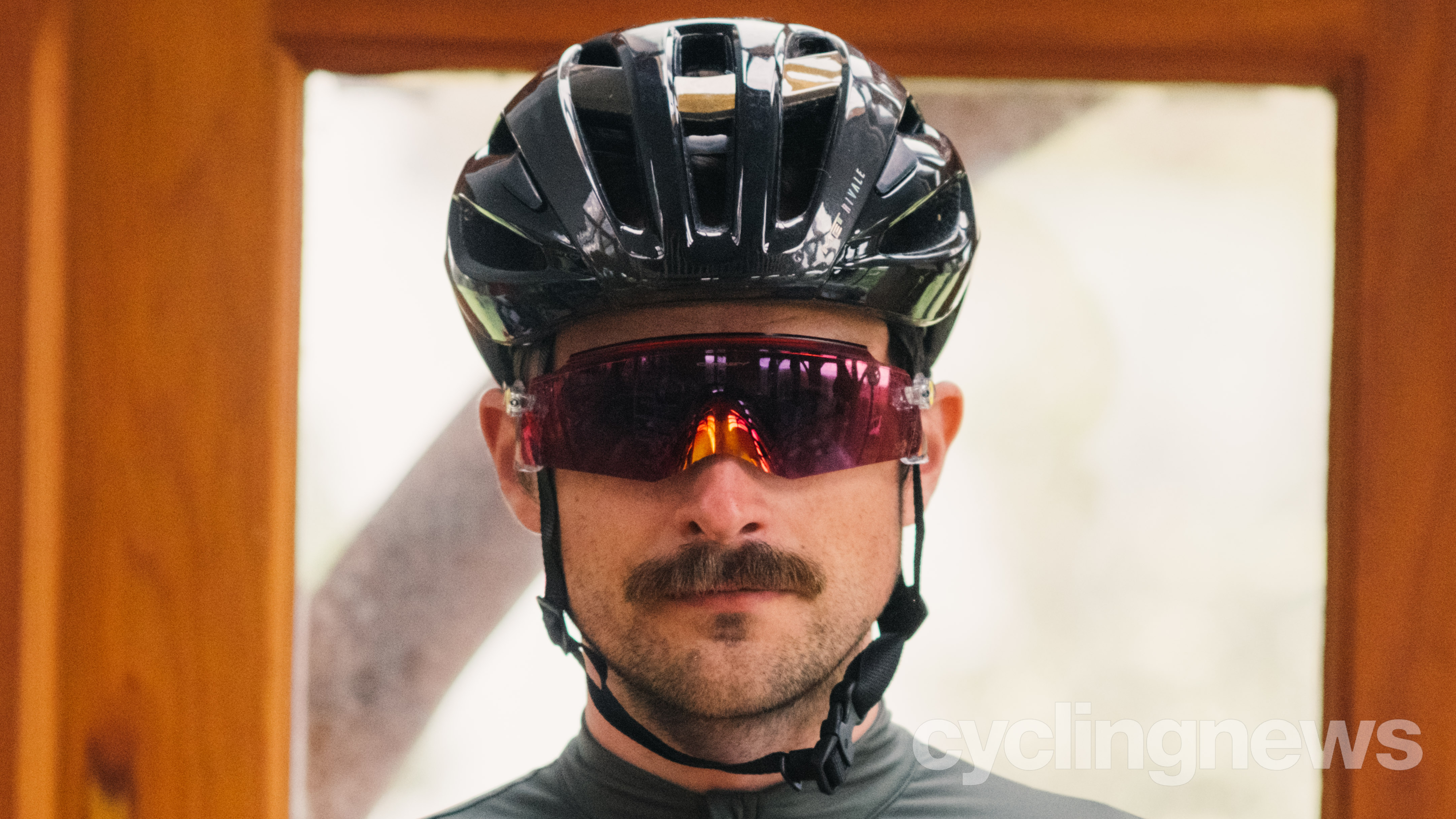
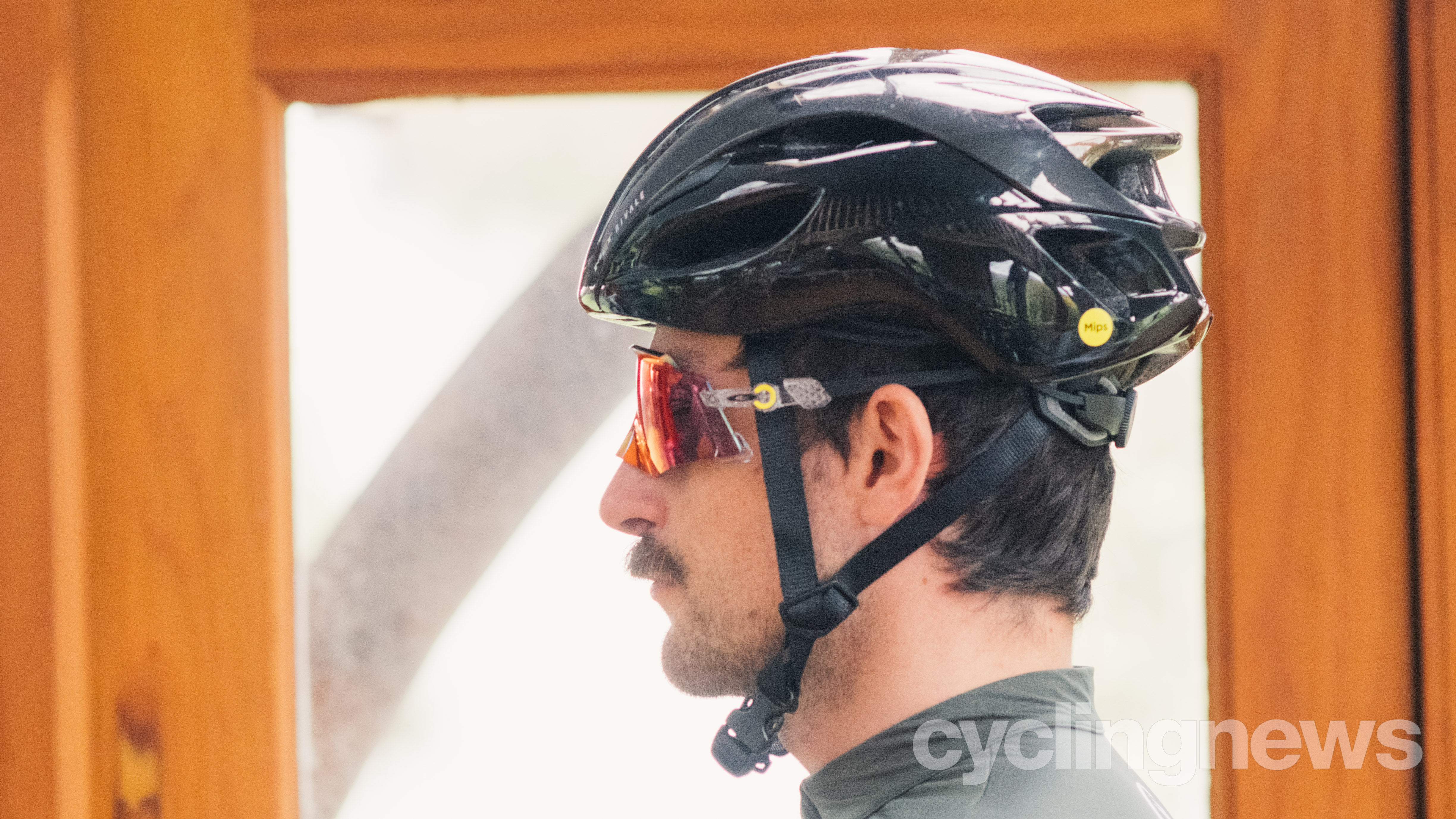

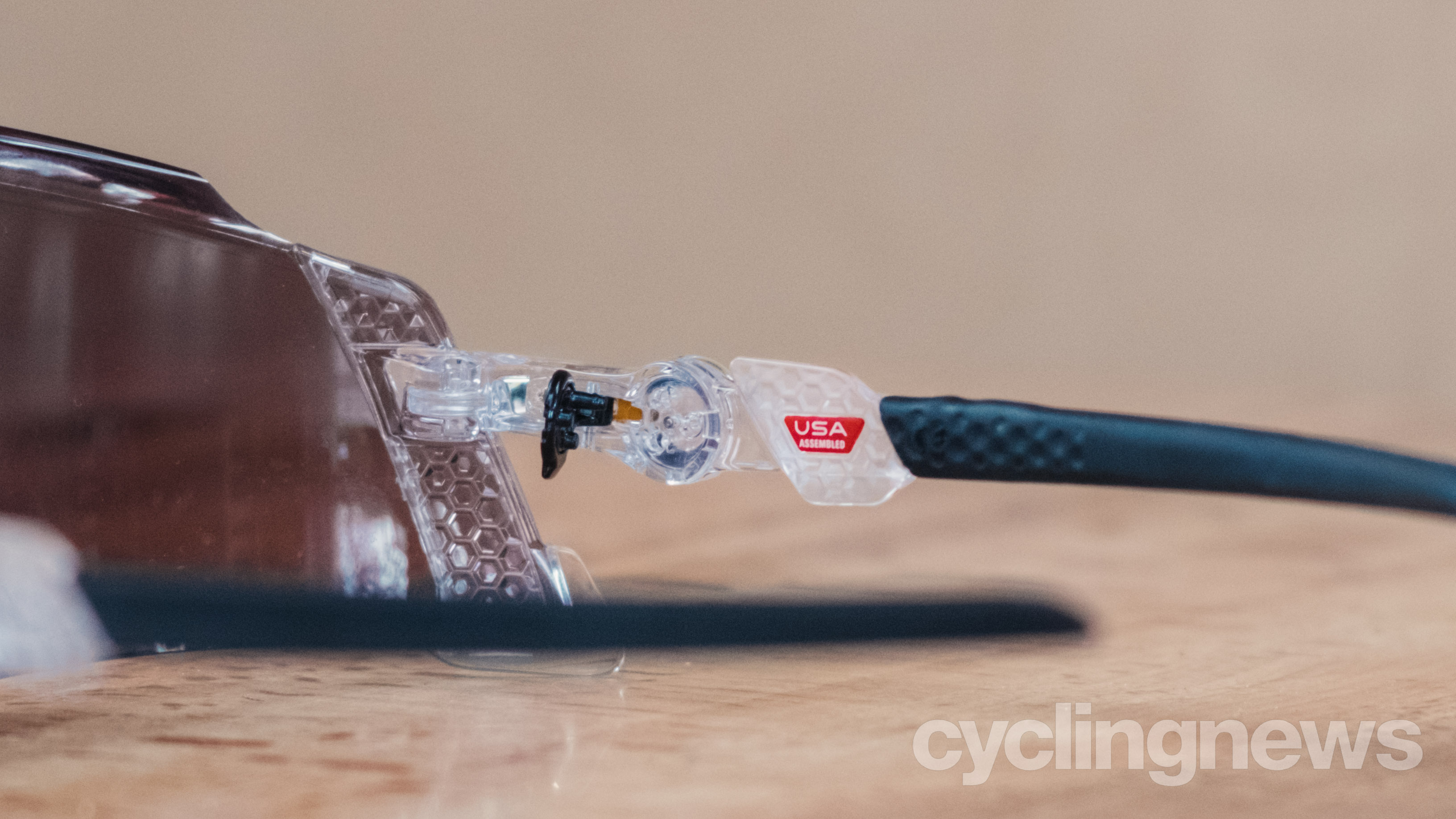
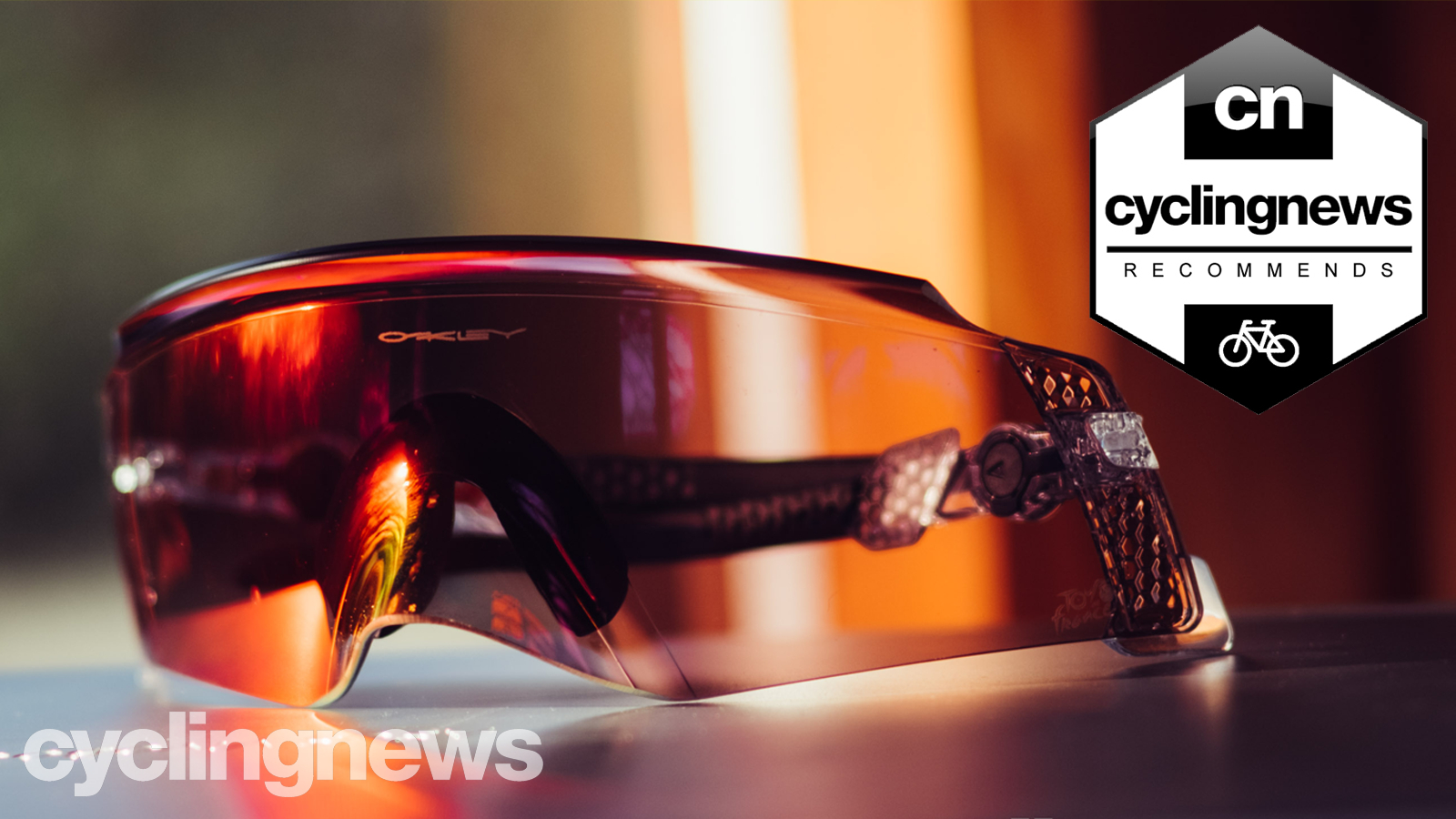
Specifications
Reasons to buy
Reasons to avoid
I think any fan of pro cycling is lying to themselves if they say they don't enjoy a bit of 'pretending to be a pro racer'. Whether it's sprinting for town signs or dressing the part, it's very much part of the fun, and while the Kato wasn't my favourite pair of cycling glasses they are used by a great swath of the peloton and have found particular favour among the sprinters.
The wrap is enormous, meaning they have a peripheral vision only really matched by the equally wrapped Poc Propel. The Prizm Road lens is just as brilliant as it is on any other model, though around the nose shield, there is a small bit of distortion.
The lens takes some adjustment; because of the nose shield, you need to adjust the rake angle of the lens so the gripper, and not the lens itself sits on your nose. It's fiddly, but once it's done it's fit and forget.
My main issue with the Kato is that they're very breezy. I sometimes found my eyes watering on long, fast descents, and so if you are torn between these and the similar-looking Encoder then I suggest the latter.
However, aesthetics are a big part of cycling glasses, and if these appeal to you then they are still a decent set of shades, and won't let you down, especially if they make you feel like Jasper Philipsen.
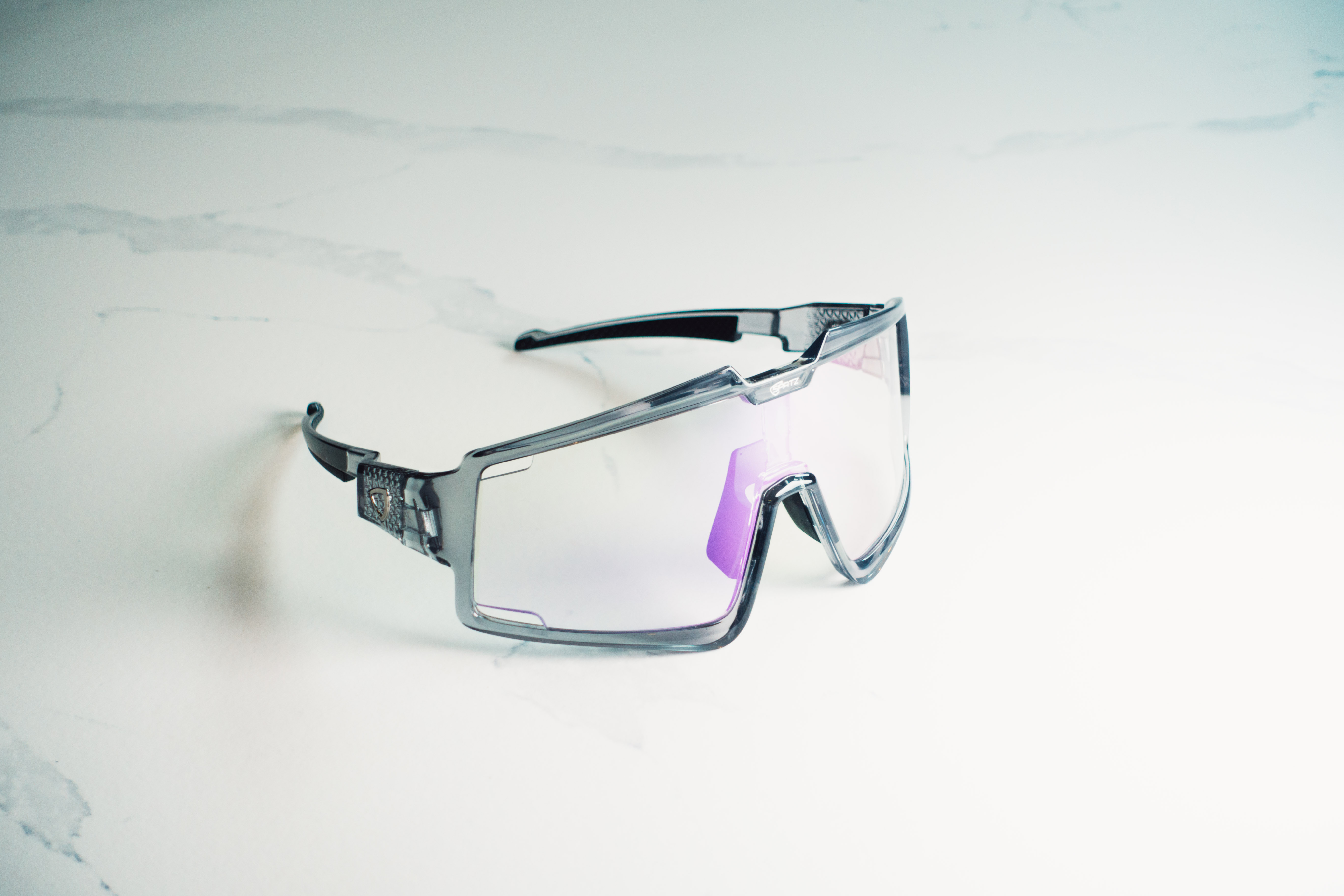
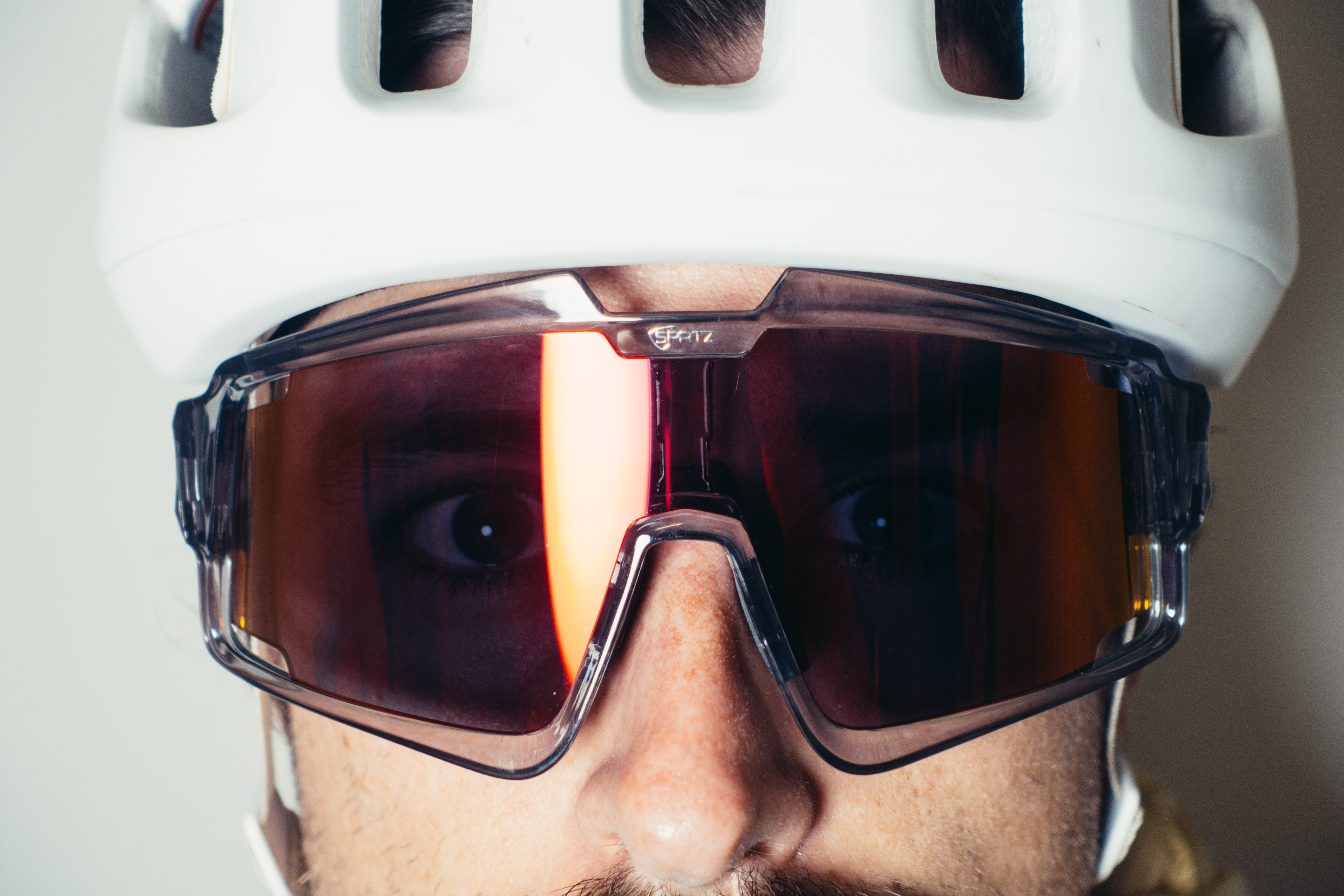

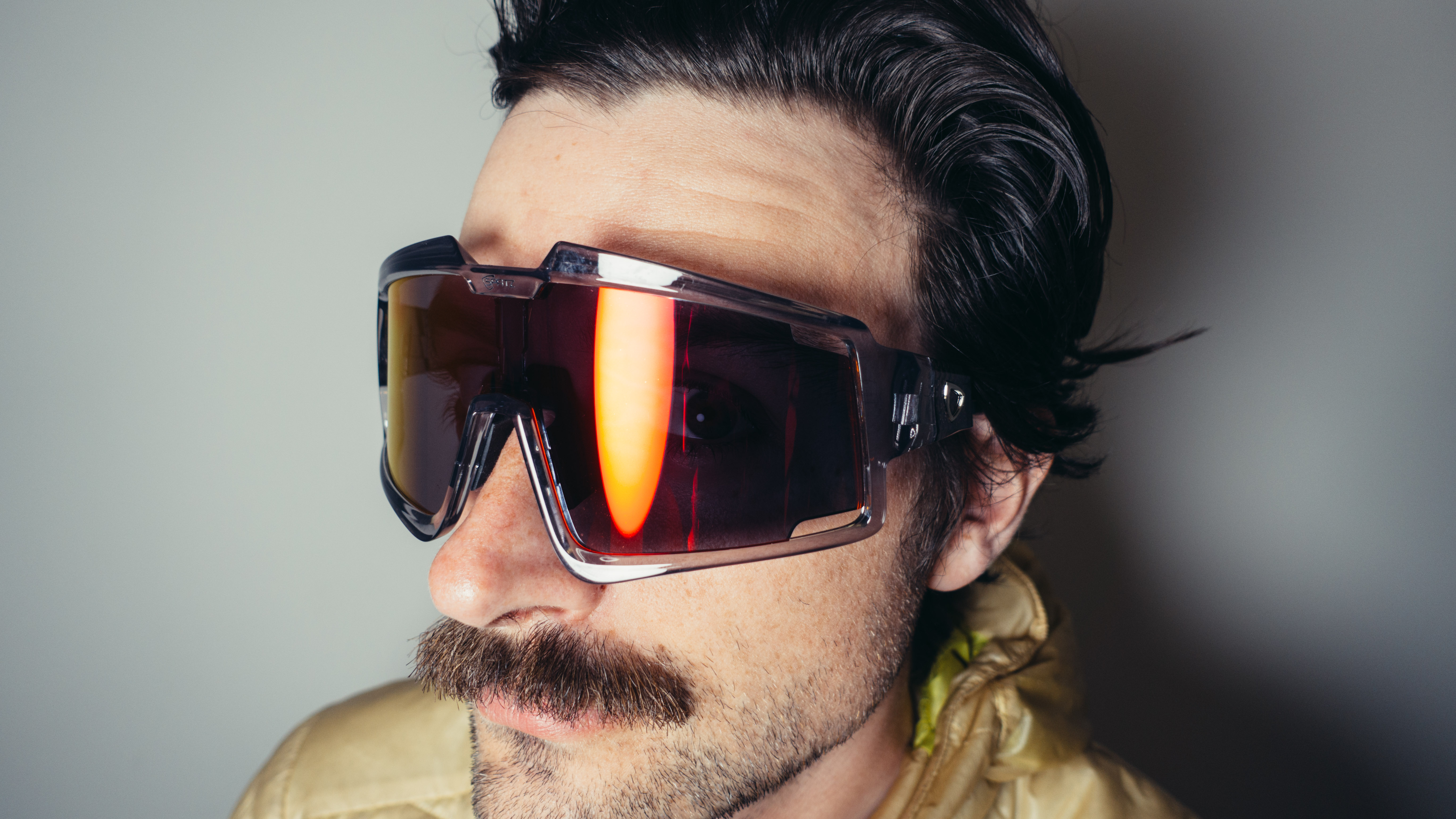
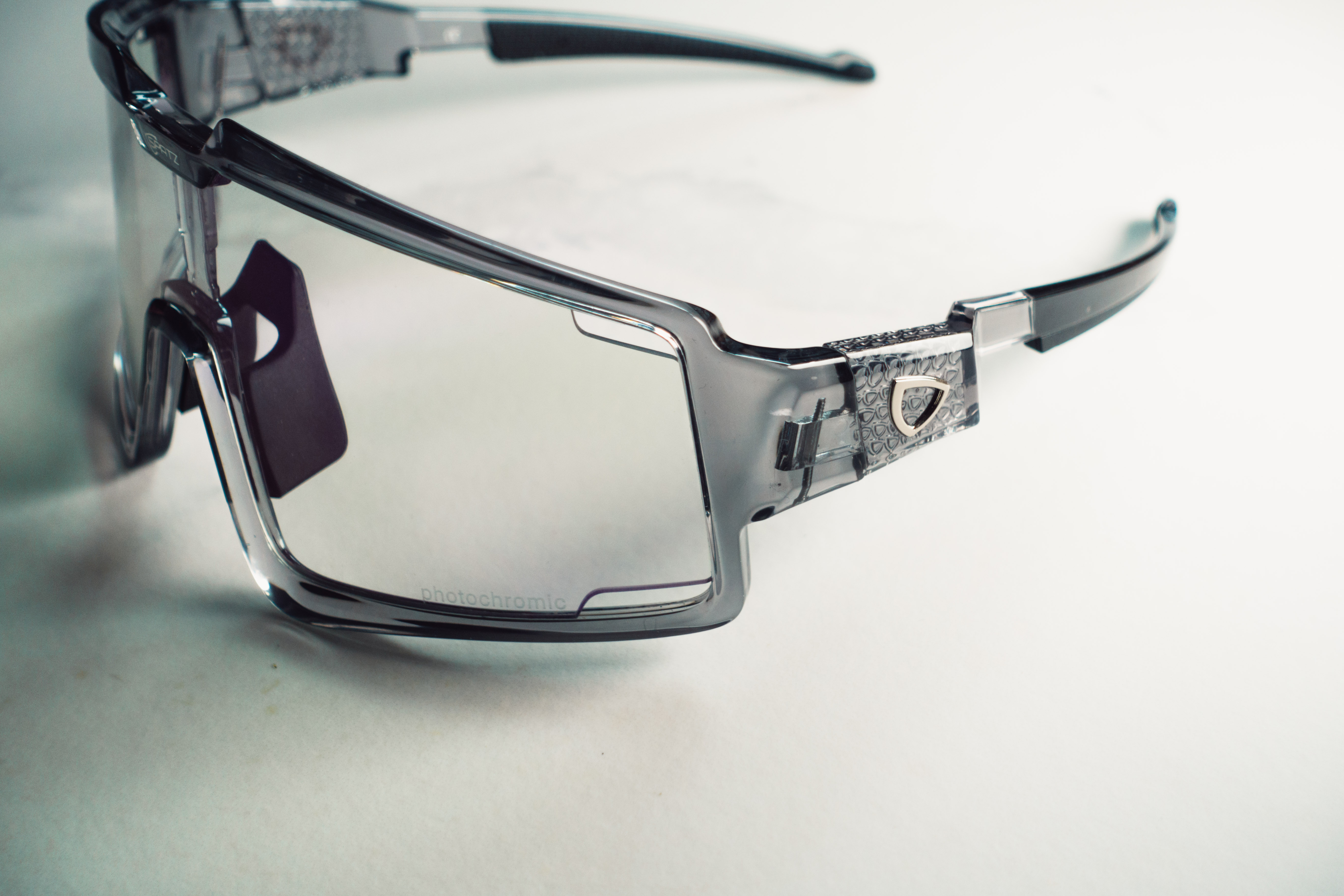
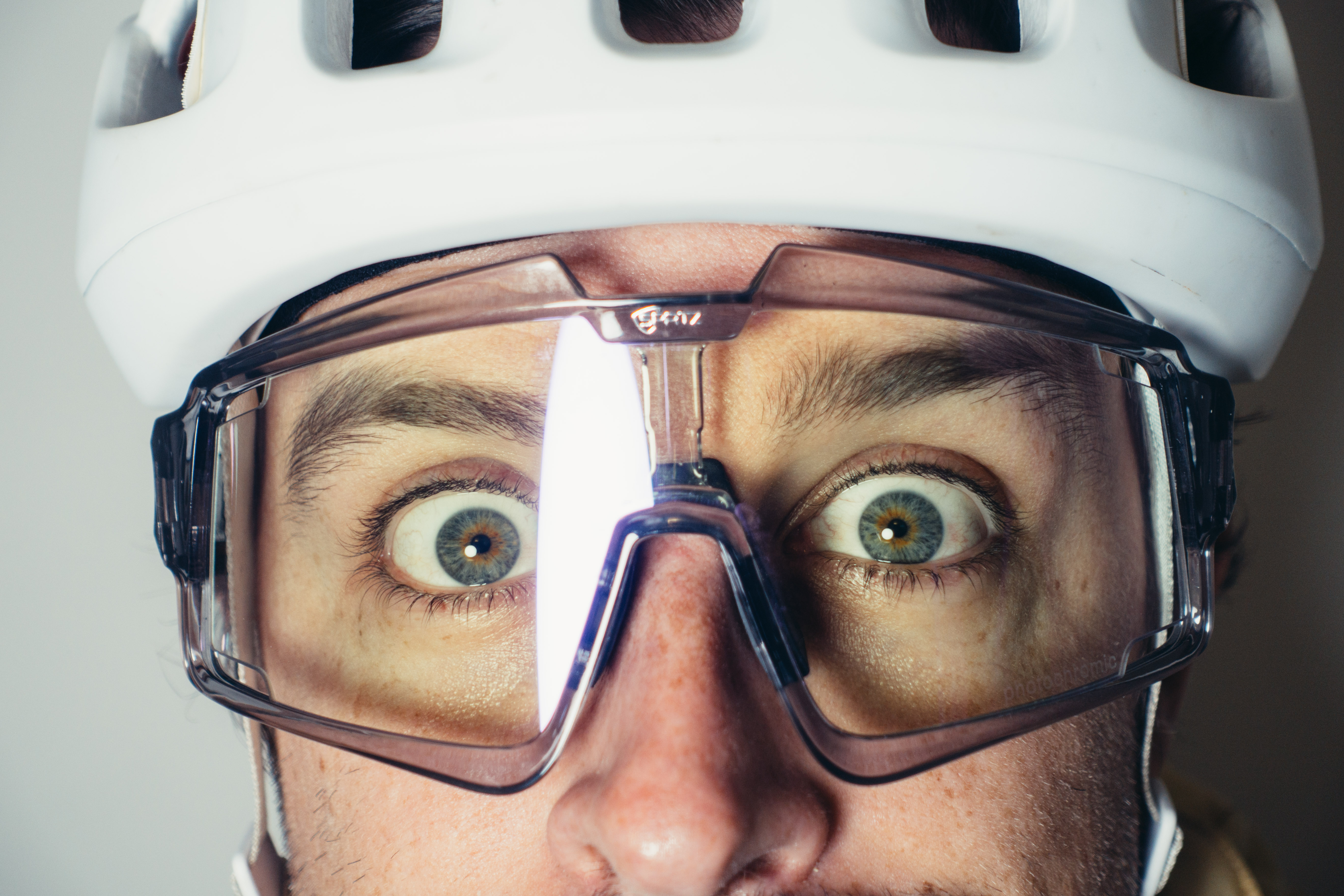
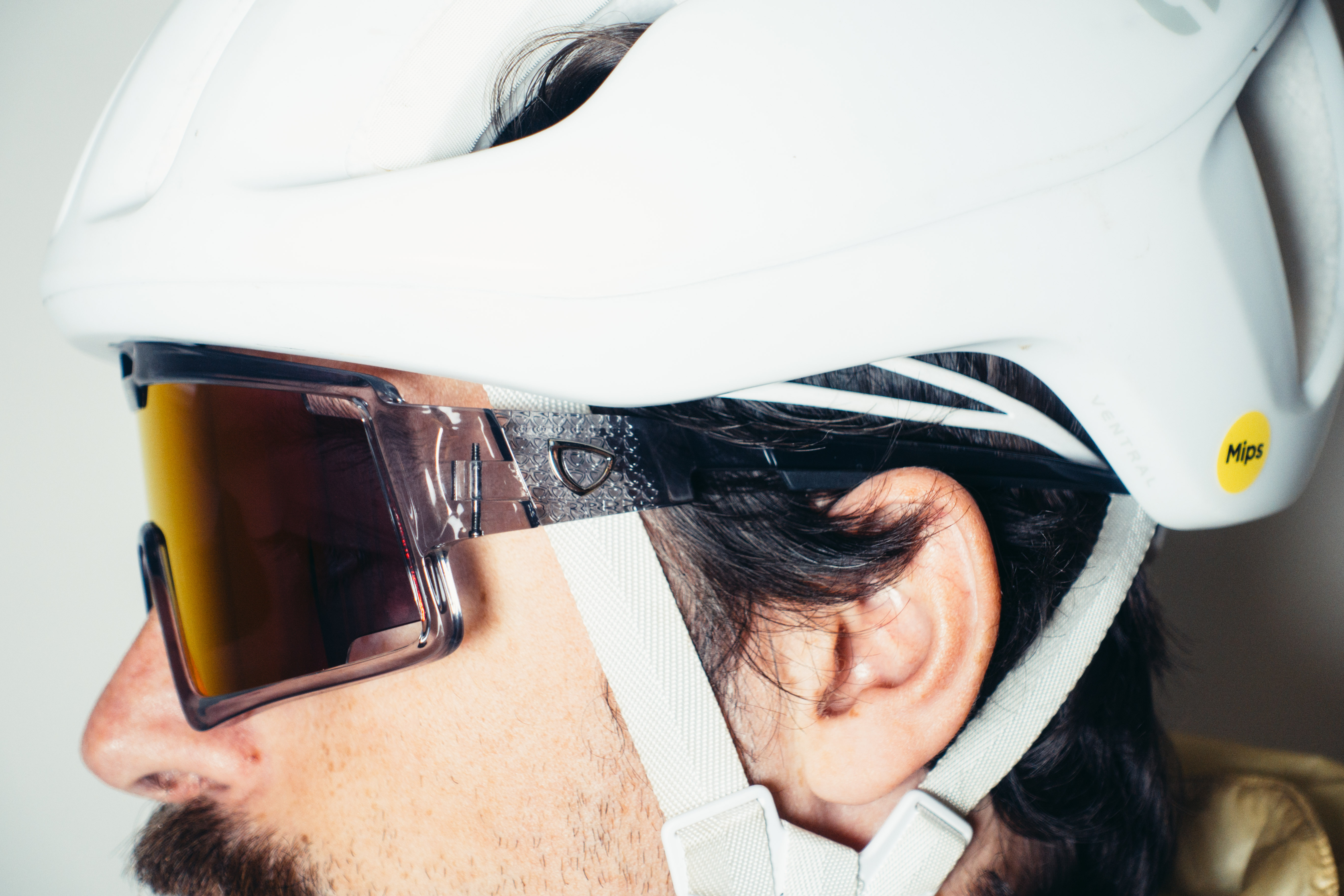
Specifications
Reasons to buy
Reasons to avoid
Normally I eschew photochromic lenses. Modern lenses are so good nowadays that they feel slightly unnecessary, but the Spatz Shield made me reconsider. Spatz is better known for making overshoes for riding in torrential rain, but it's now expanded into eyewear, and I'm happy to report it's done so successfully.
The Shield is another very big option, up there with the Demos, and the thick transparent plastic full frame design means they feel extremely sturdy. This, combined with the thick arms at the temple make them the most solid feeling of any I've come across.
So good is the Photochromic lens that I haven't bothered using the included Iridescent Red option. The red lens looks to be a pretty standard affair, but from the brief tests I've done, it does lack the contrast of top-tier options. If however, you want a lens that changes with the conditions then this is the pair to opt for.
The photochromic lens has a subtle purple tint that, when they are fully transparent, just takes any edge off things, and feels a little like those blue light-blocking glasses. It's subtle, but when it's overcast it makes a difference and will stop you squinting.
While massive, they do sit quite far from the face and do get a little breezy, but not to the point it becomes a real annoyance. The lens swap too isn't the easiest, mostly as the frames are so sturdy, but it's far from a pain too.
To find out all the ins and out of these head to my Spatz Shield sunglasses review.
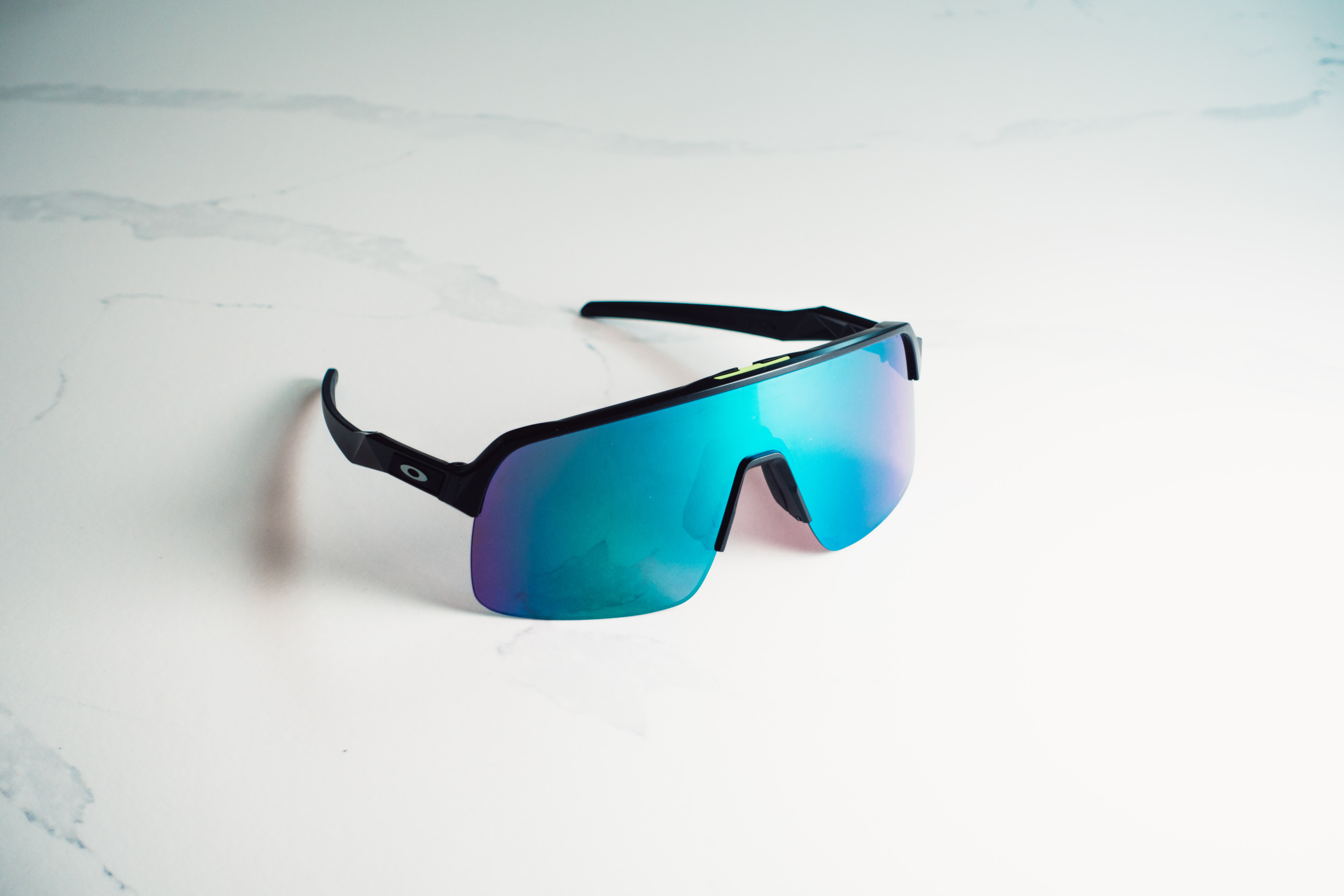
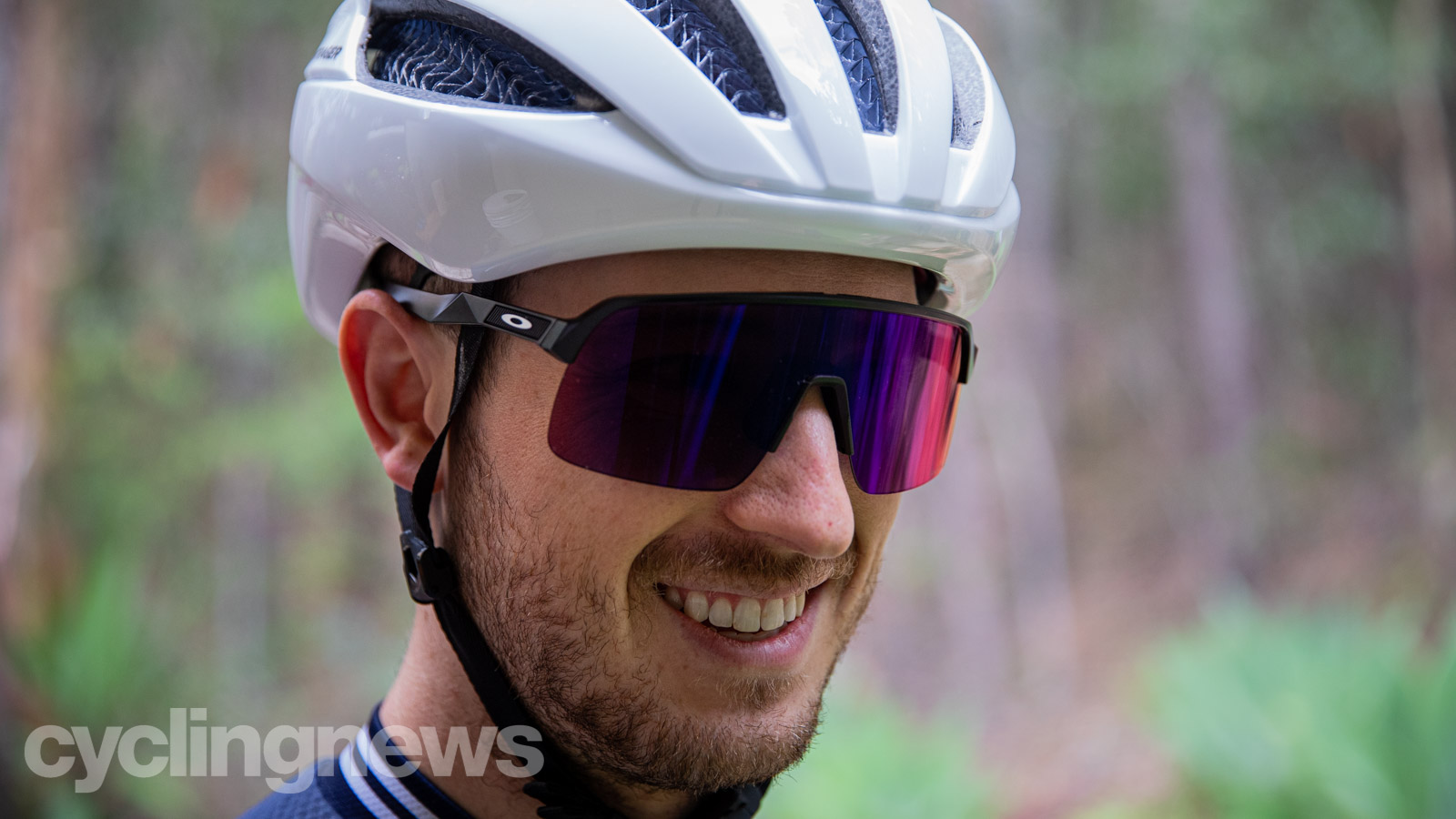
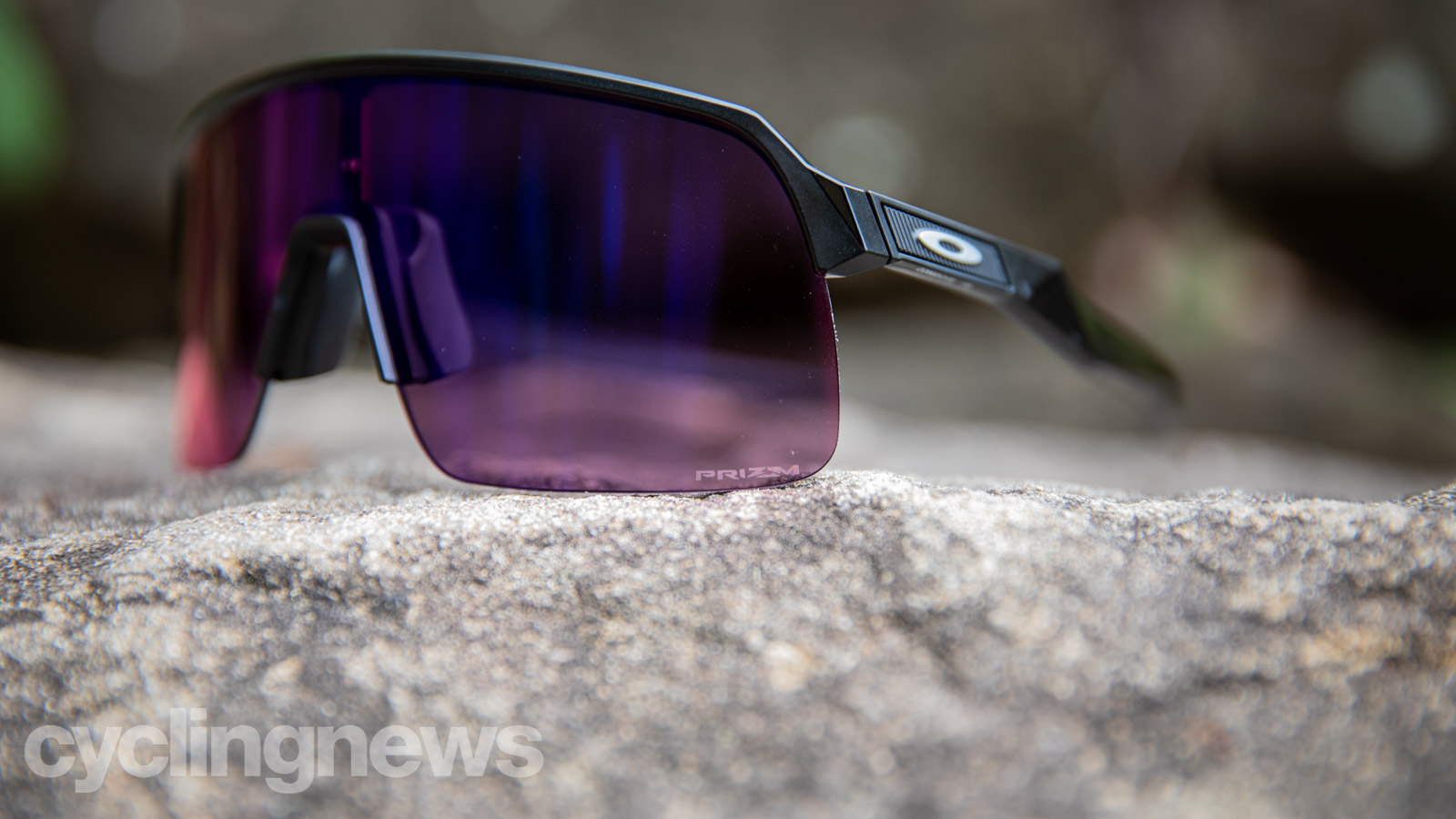
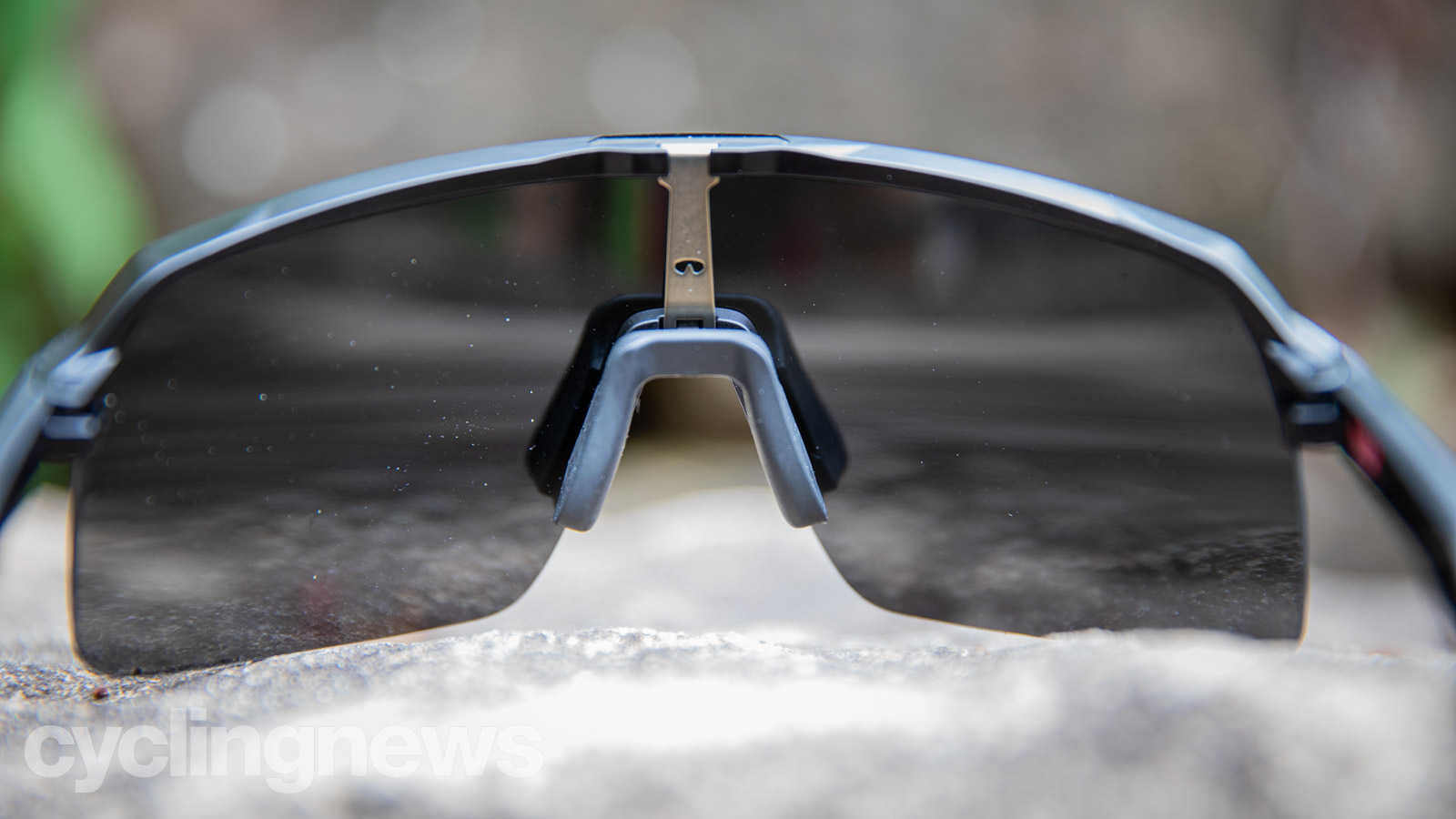
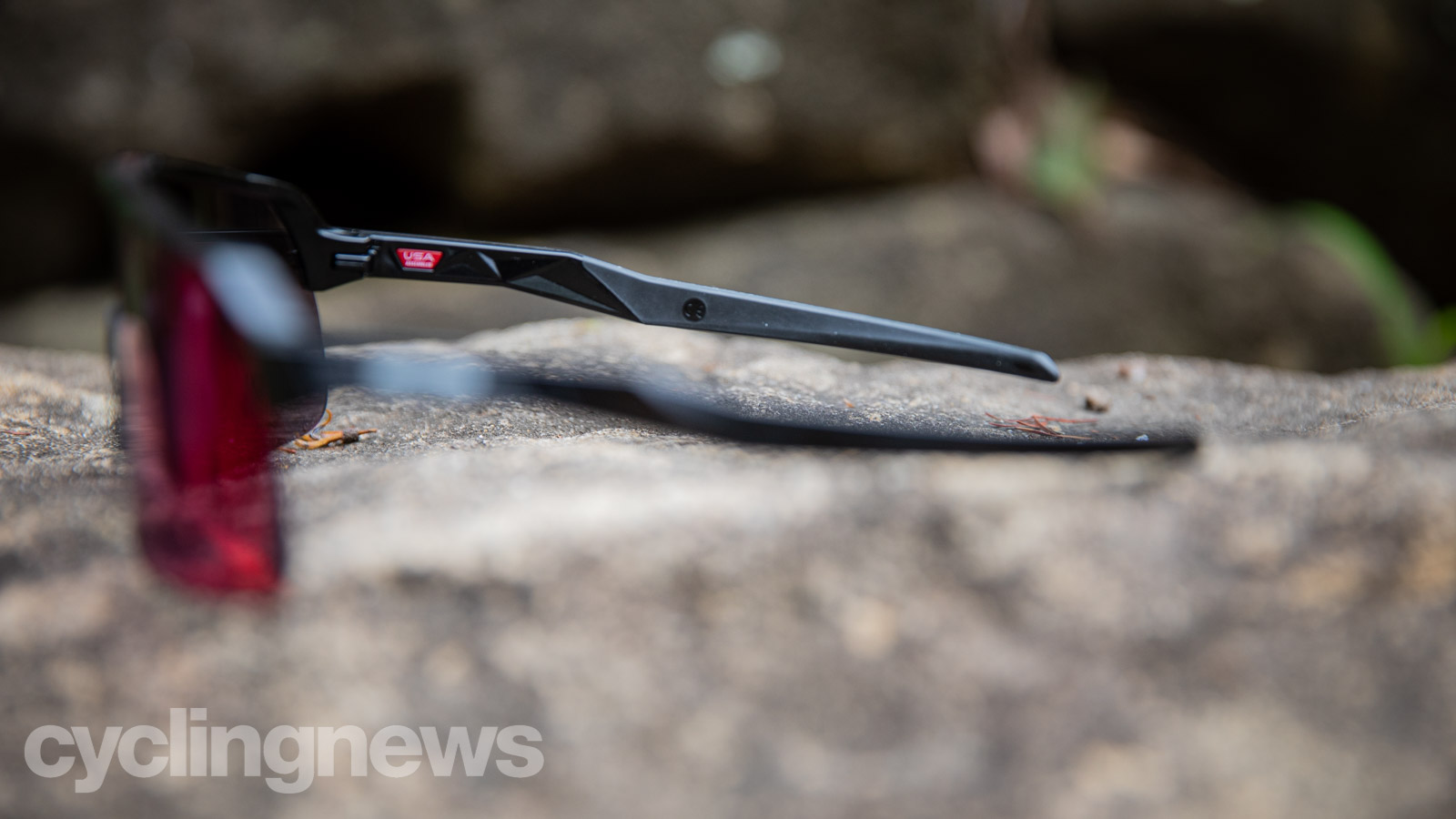
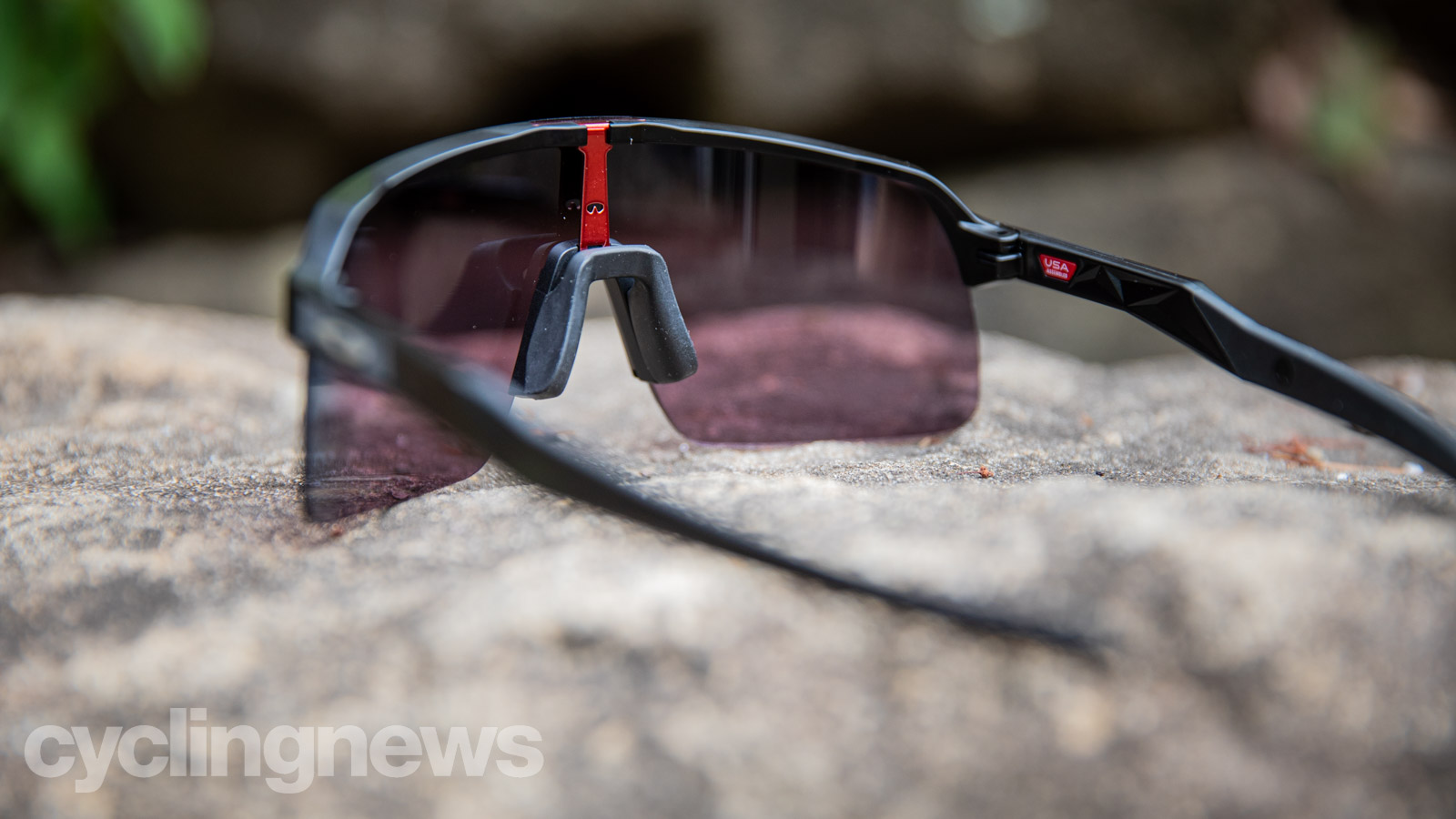
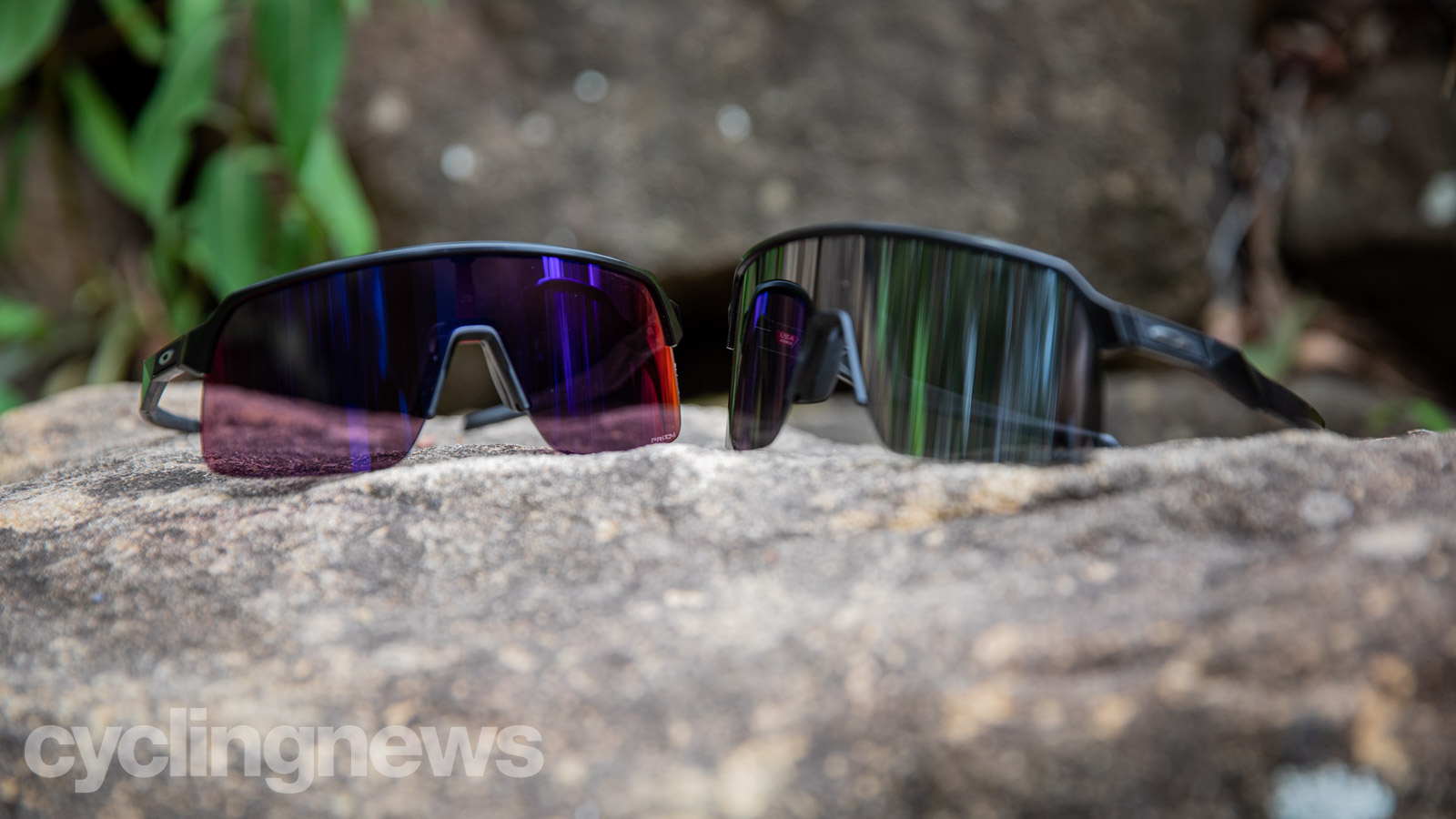
Specifications
Reasons to buy
Reasons to avoid
While the Jawbreaker set something of a benchmark for cycling performance eyewear, the Sutro for some time set the standard for "having a massive lens". While it's not the biggest, smaller than the POC Devour and even the 100% S3, it offers many of the same advantages, primarily an enormous field of view.
Having used both the Sutro and the Sutro Lite (and the Sutro Lite Sweep), my advice is to go for the Sutro Lite. The Lite, as well as ditching half the frame, also adds arm grippers, and so the retention is drastically improved.
I have a pair with the Prizm Sapphire lens, and while it isn't as contrasty in low light as the Prizm Road option, it's better in very bright sun.
Aesthetically I think the Sutro Lite is a great look, but they do fall down on some performance metrics. The lack of lens venting is one, as is the inability to easily swap lenses (again, just get the Prizm Road lens, trust me). They sit far enough from the face though, that venting isn't a huge issue. The only real bugbear I had with the normal Sutro was the lack of arm grippers and the Lite more than fixes this.
They are big, though. If you have a small face then they may well swamp you, and may also start interfering with the brow of your helmet.
There's even a titanium version too, rivalling the POC Elicit Ti for the bling factor. We've got a full review of the Sutro Lite, if you want to know more.
Best lightweight cycling glasses
Not just for the weight weenies and those riding the best lightweight bikes, having a truly featherweight pair of cycling glasses comes in handy in far more important ways than just shaving a couple of grams.
Most options are frameless, and in my experience are a better choice in hotter climates. The low weight is great, but they are generally a little more airy, so they're what I reach for if it's muggy, or if I'm doing a ride with protracted climbs to allow a little more airflow to my face.
The tradeoff is that they tend to feel a little less secure on the face, so are less suitable for gravel riding in particular.

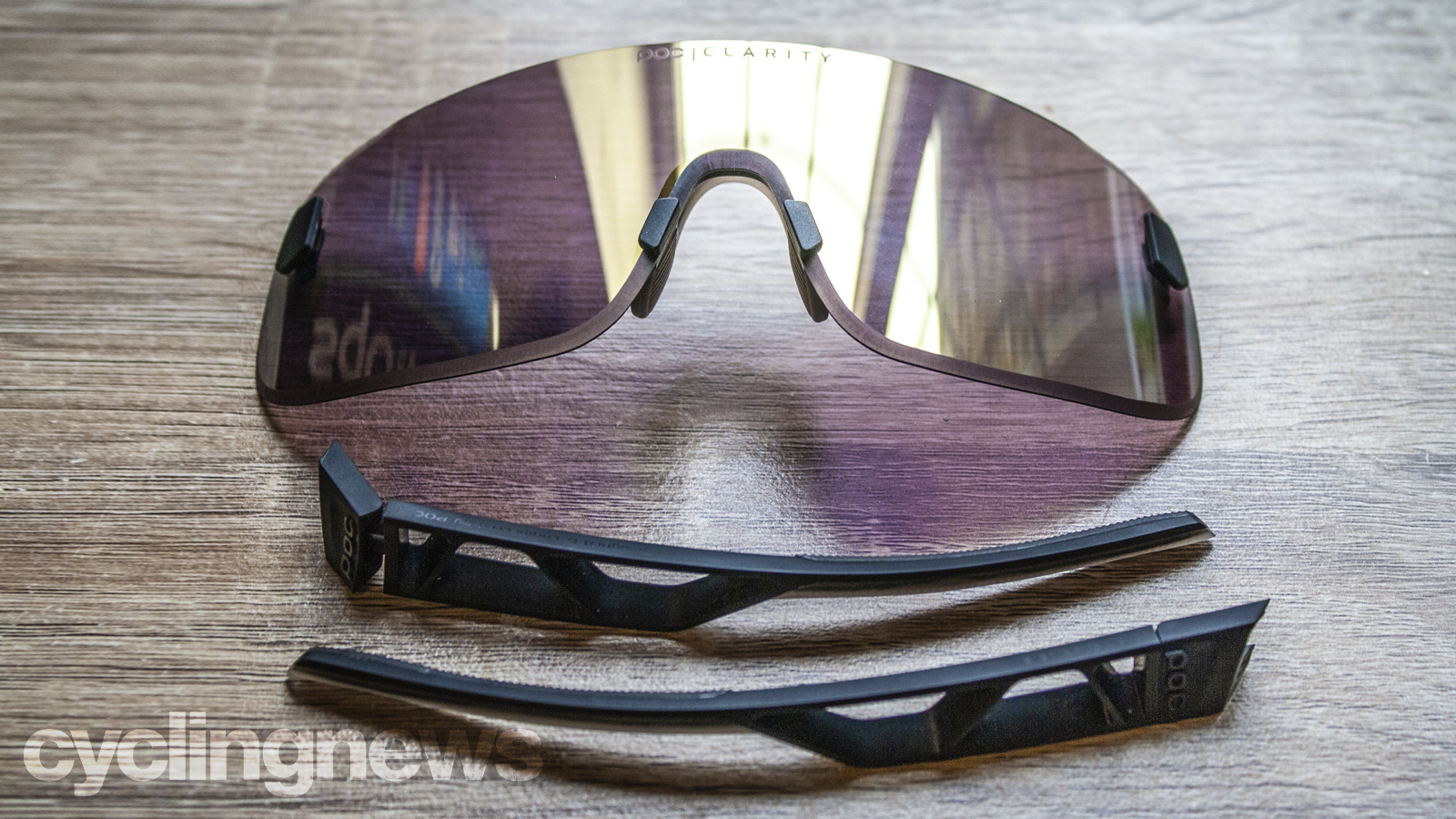
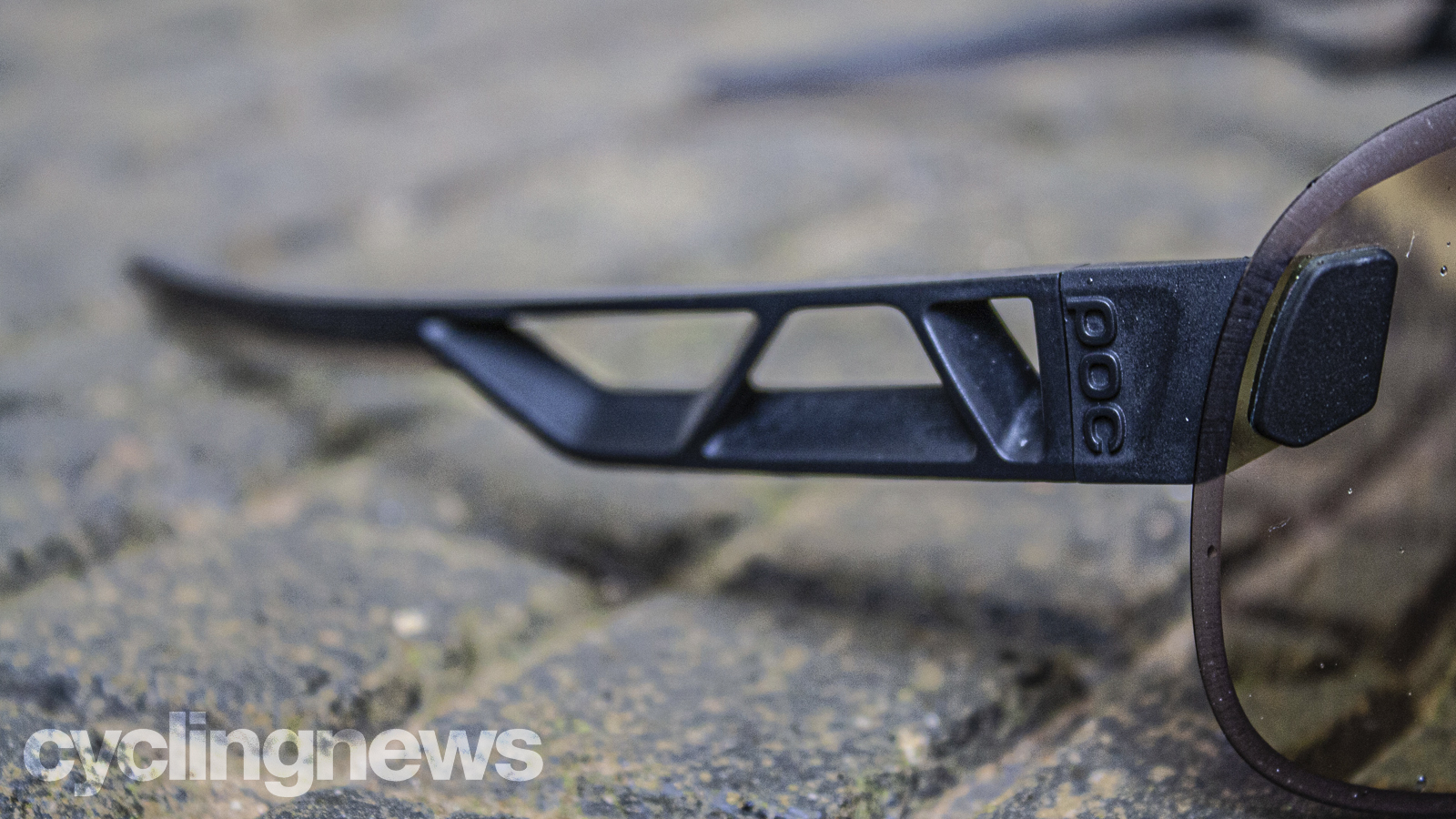
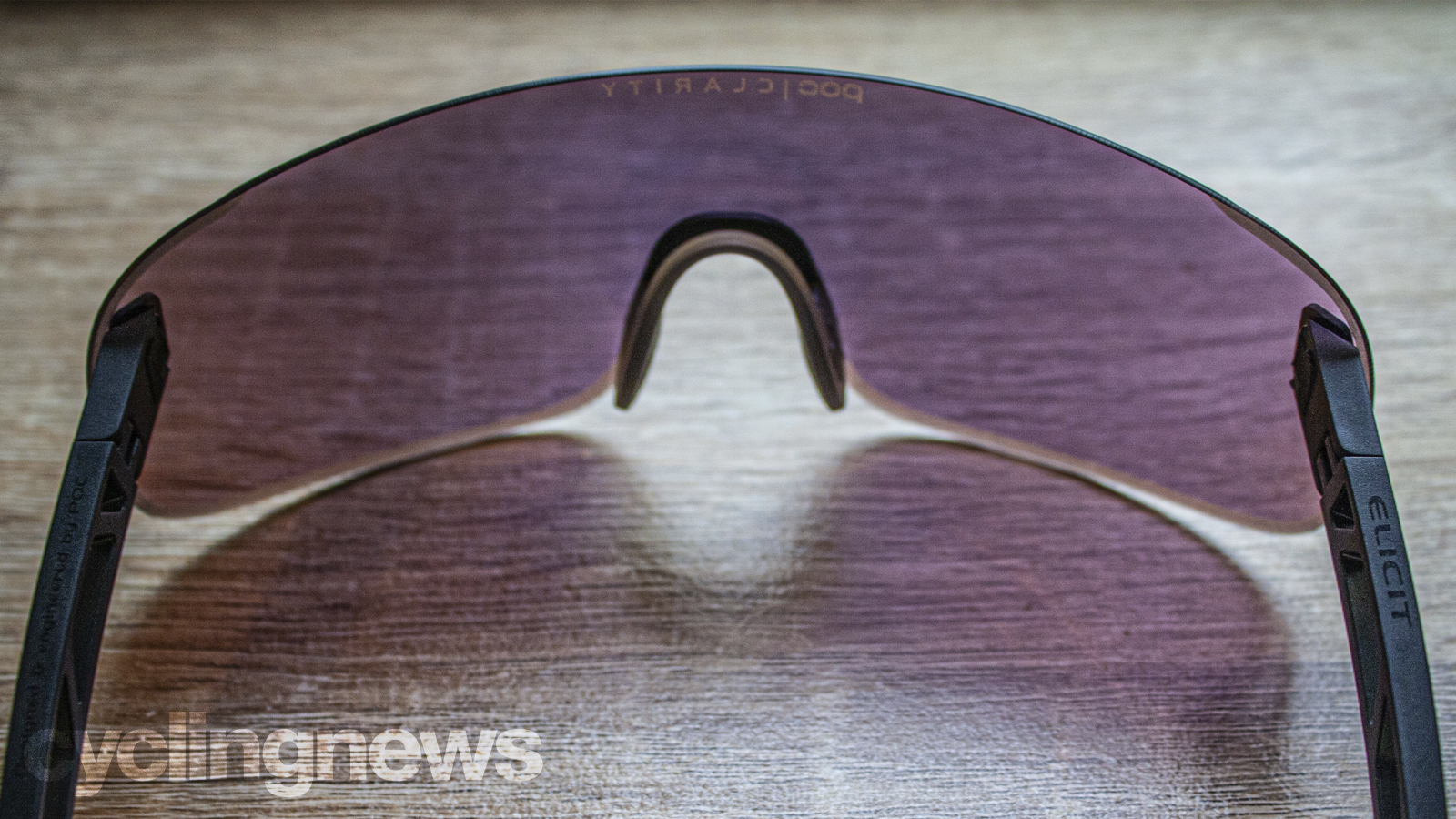
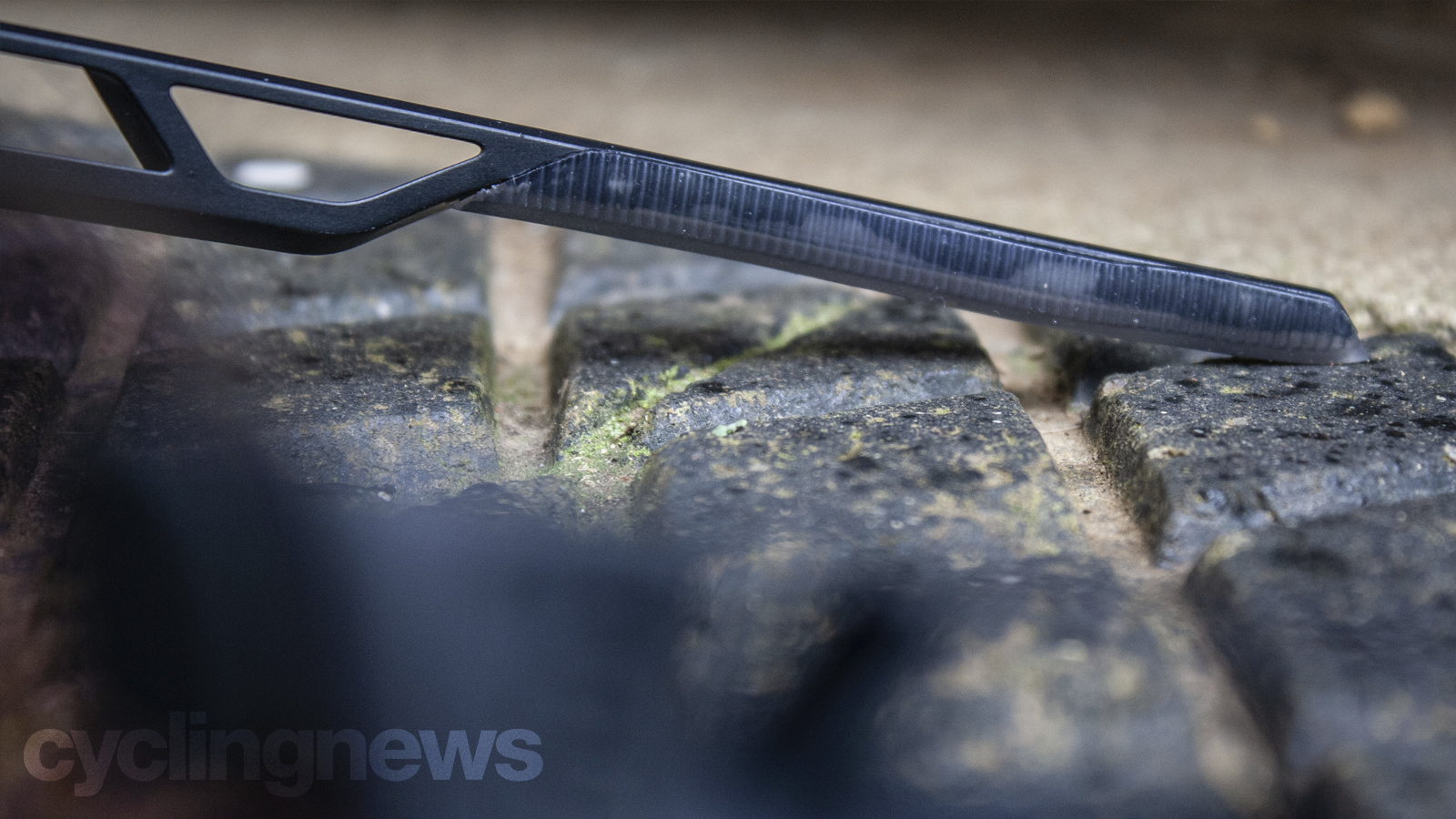
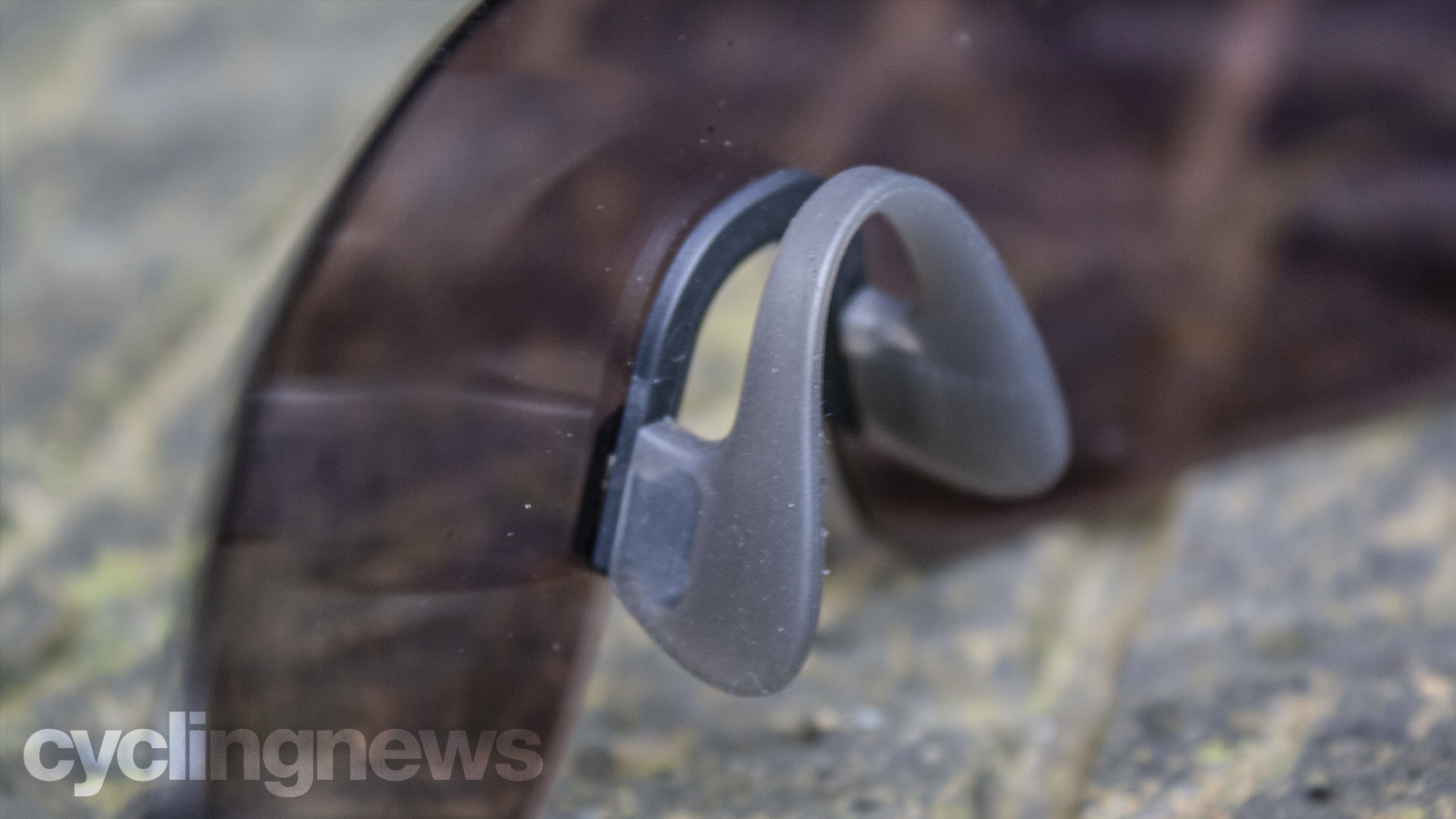
Specifications
Reasons to buy
Reasons to avoid
If you want a featherweight pair of cycling glasses then these are, in my opinion, the best in the business. They're a little more expensive than the Hypercraft from 100%, but the lenses and field of view are better.
As with most frameless pairs the retention isn't so secure as with a frame, so on a small head they feel looser, but they do a good job with quality arm grippers and a replaceable nosepiece. The rounded edges to the lens, along with its size, meaning the edges feel like they almost blend seamlessly into the periphery, adding to the feeling that you're not really wearing any glasses at all.
If you want to go bling then there is a titanium version, and those do grip even better and are lighter, but at least the arms on these plastic versions hinge.
As per the other POC options, the lenses are excellent, though prone to smudging. The benefit for me is that thanks to a large lens that sits far from the face and no frame, they are lovely and airy on scorching days without any real issues letting wind get to your eyes. They don't feel nearly as stuffy as the Aspire, but they also are a little more fragile feeling.
The lens swap is simple, with both the main lens and the included clear spare featuring a socket that the arms simply slide onto. Think of it less as a lens swap and more as an arm swap. Check out our POC Elicit Clarity review for all the rest of the details.

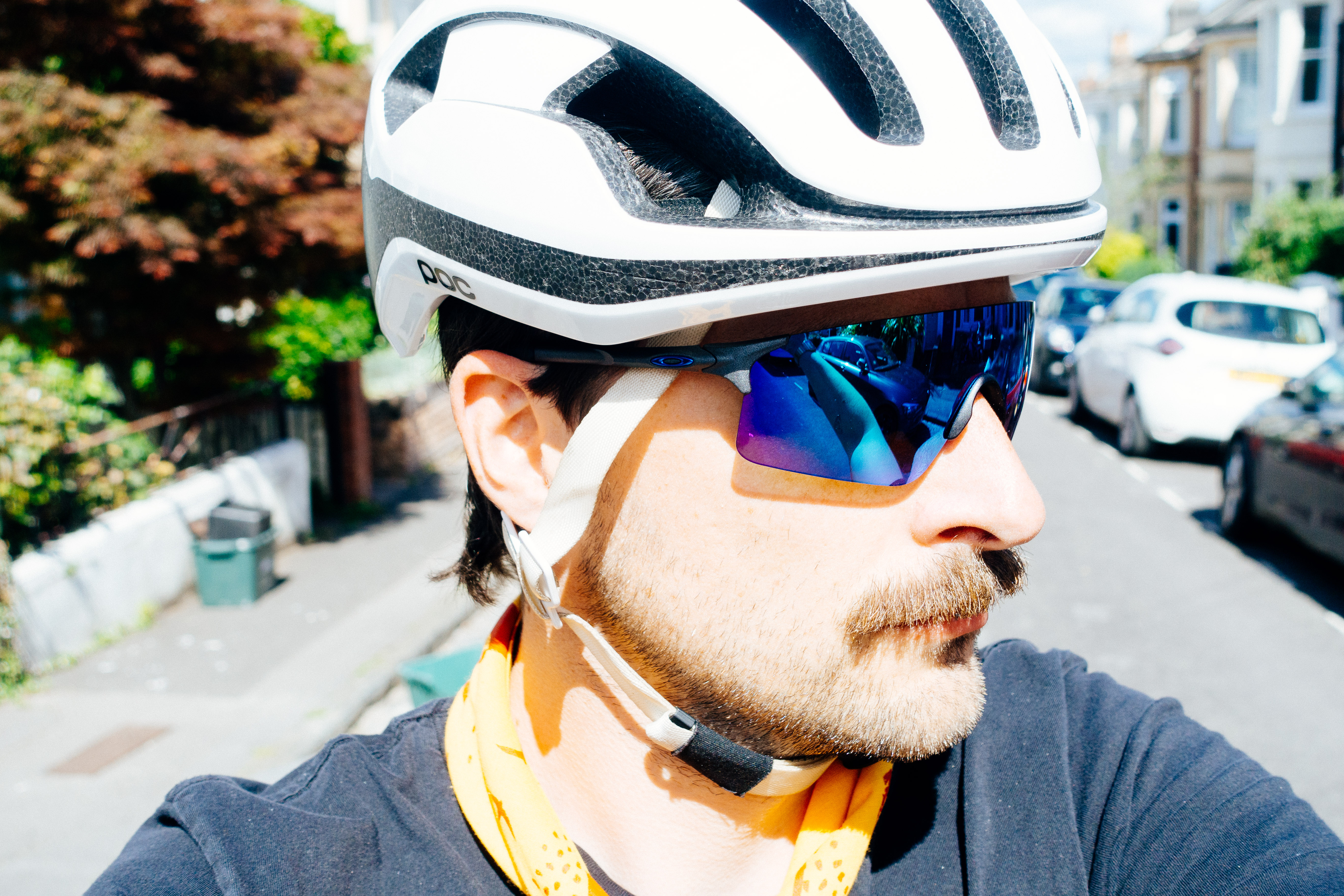
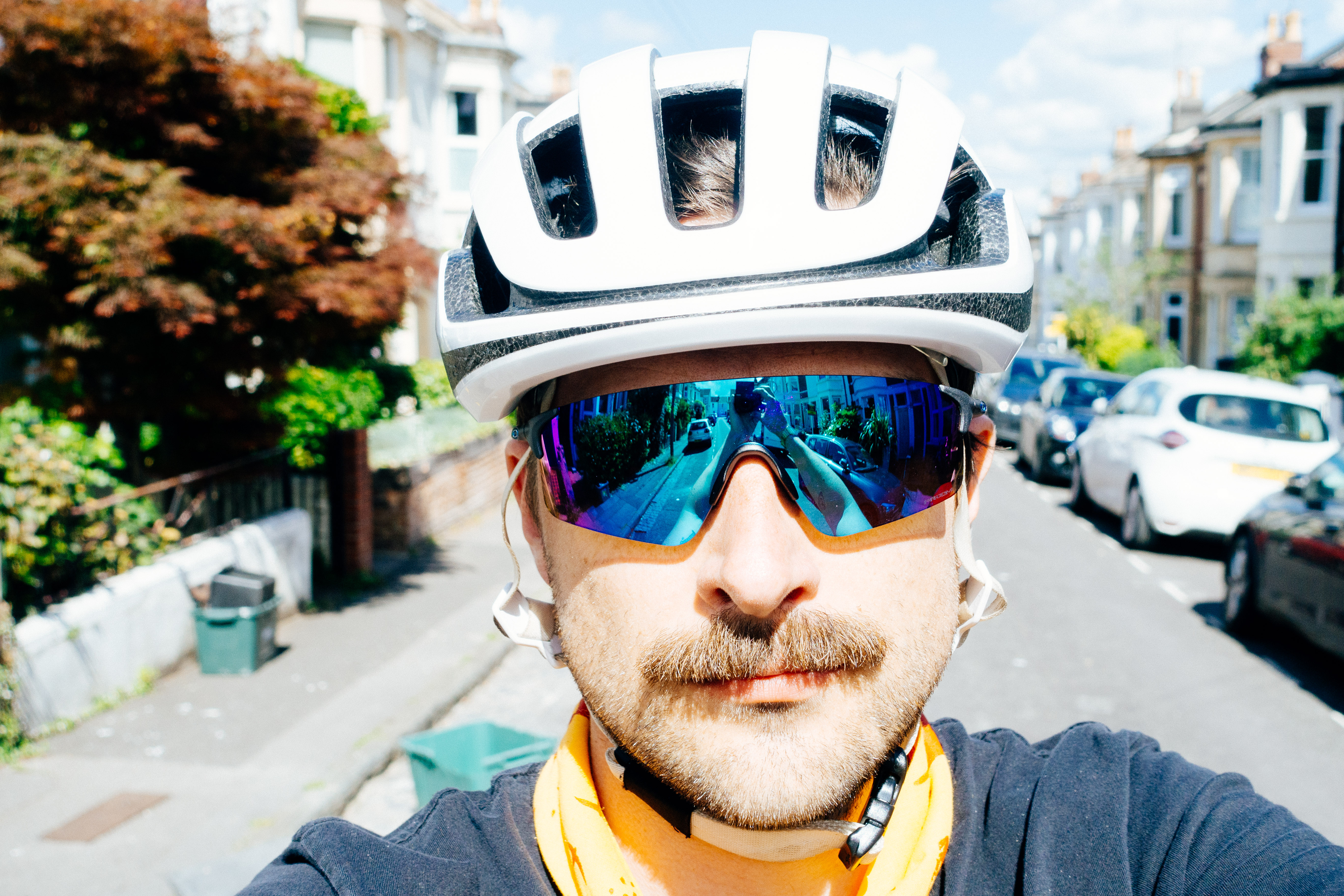
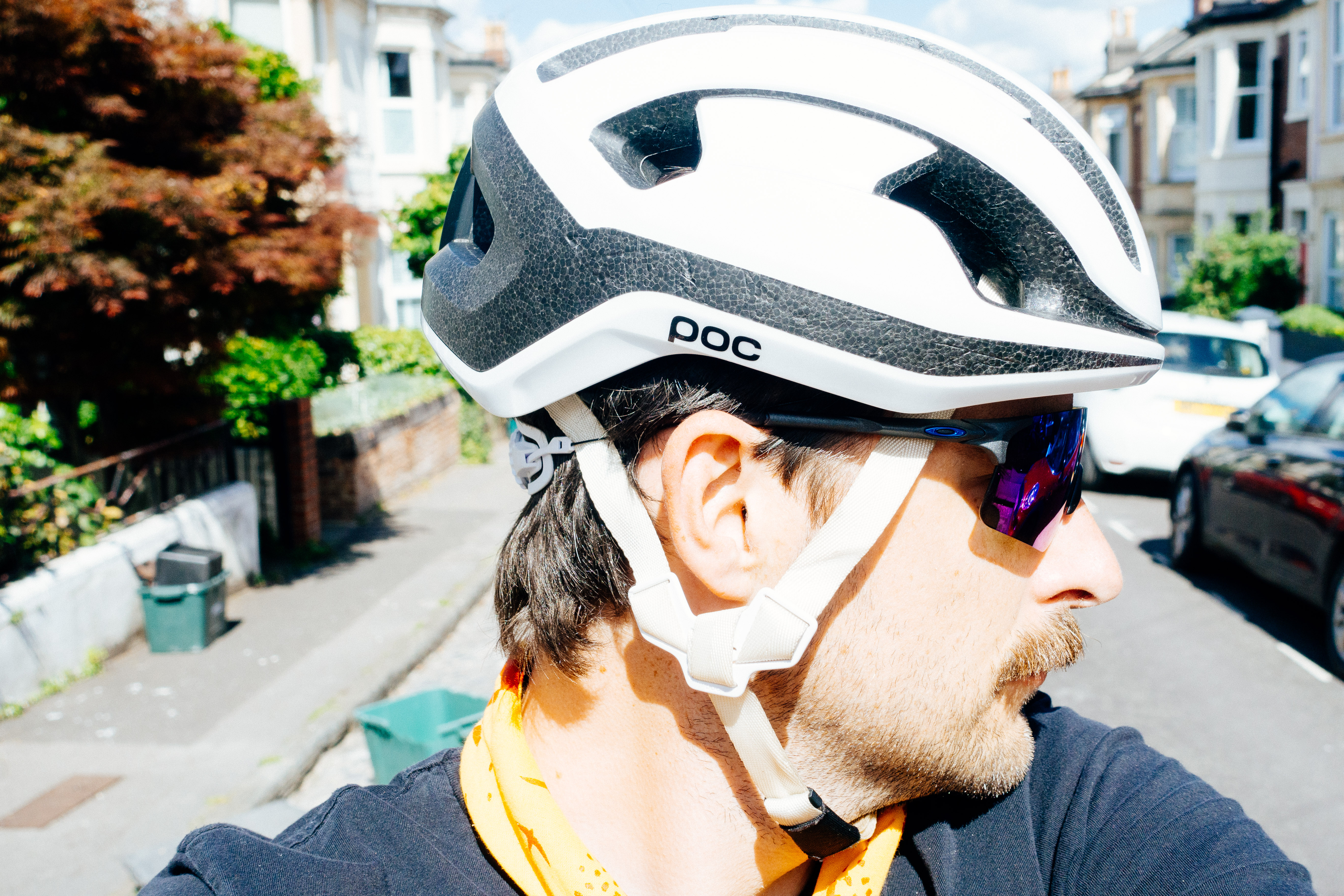
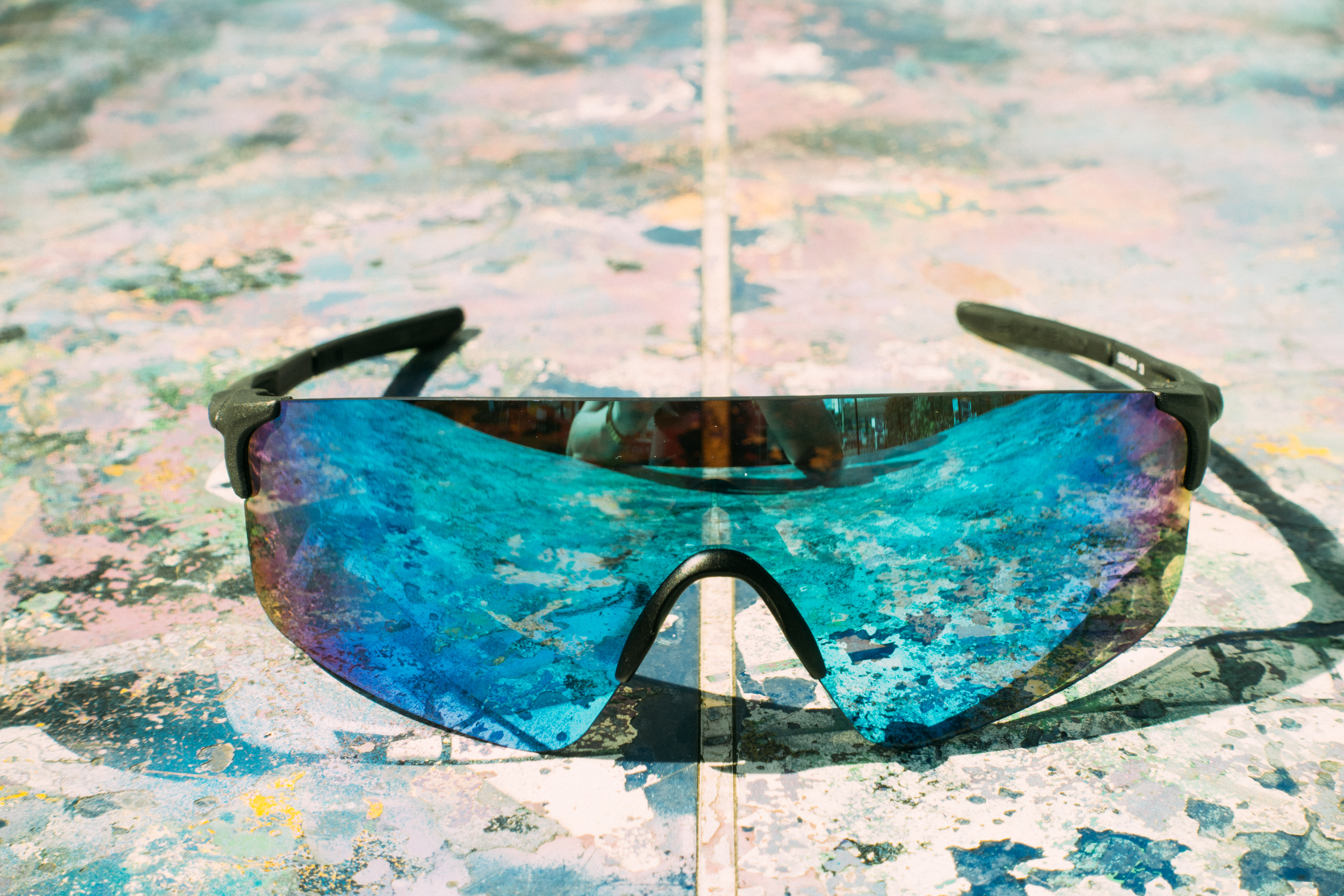

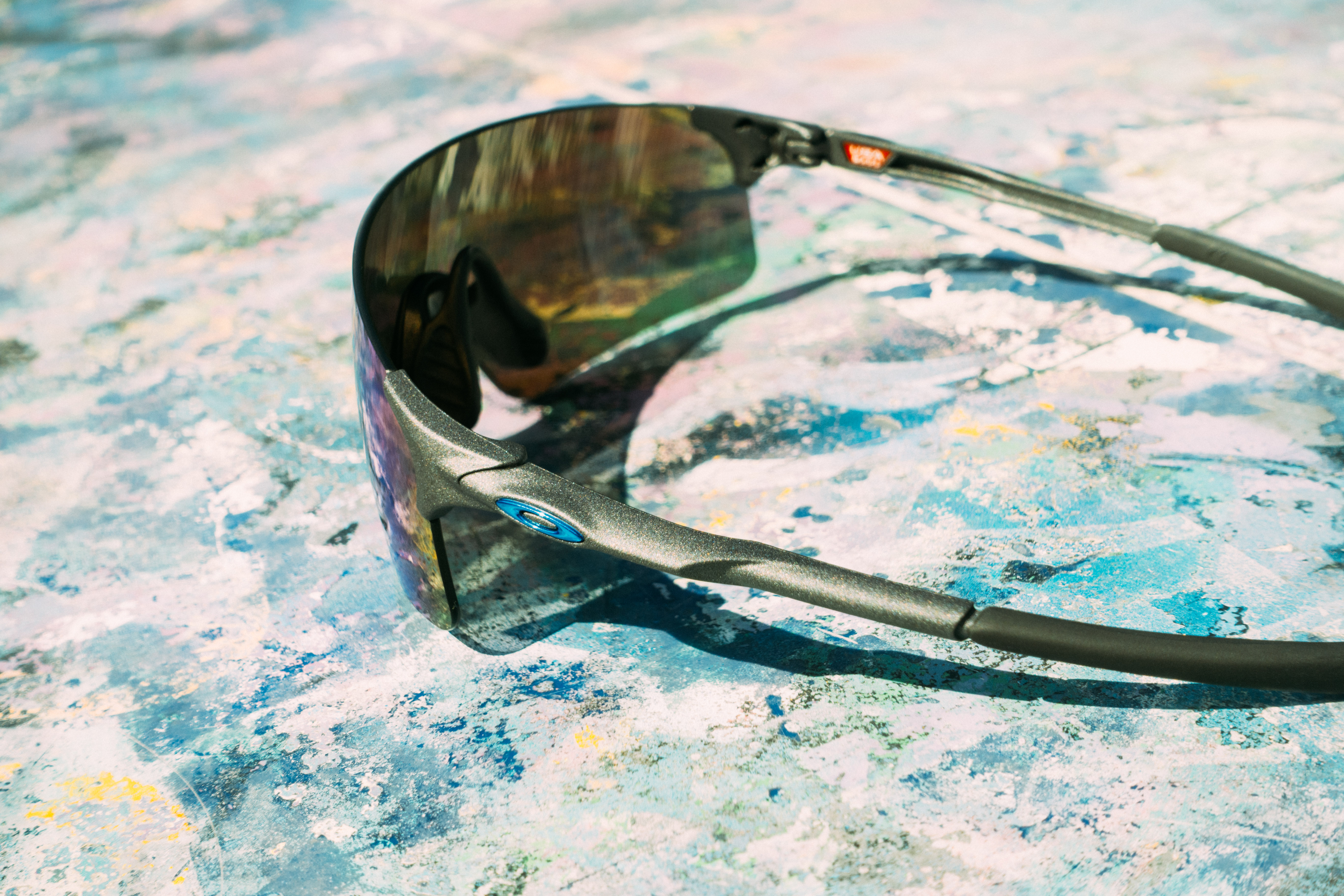
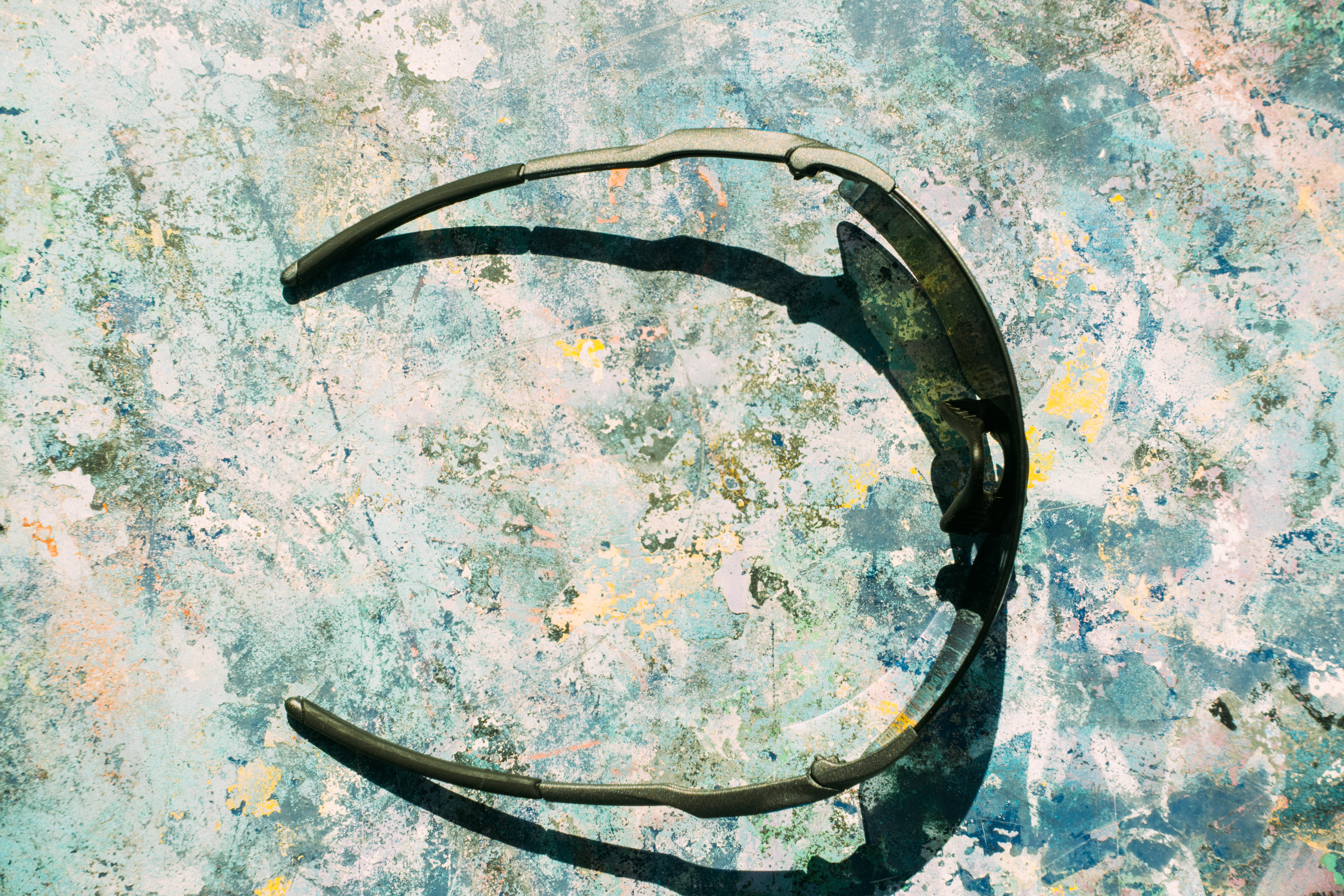
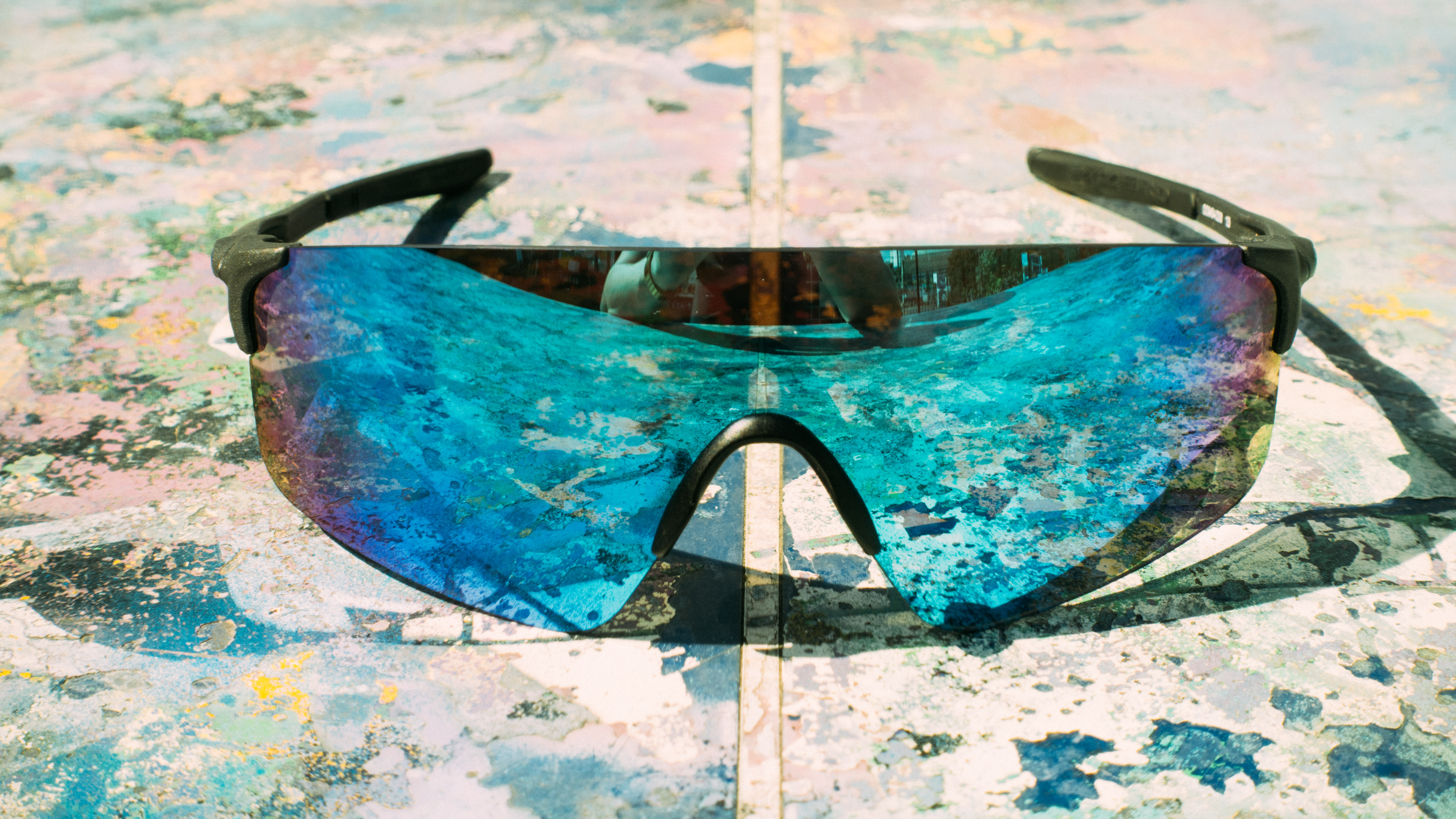
Specifications
Reasons to buy
Reasons to avoid
As per the Radar EV Path, the EVZero Blades from Oakley cover those of you who want a more 'normal-looking pair of cycling glasses, but with a flyweight package. They are the lightest on test by a fraction of a gram, but lack the retention of the rest of the Oakley range; the mono lens doesn't have enough structure to hold them in place on smaller faces, though the arm and nose grippers do an admirable job all the same.
Despite the more pronounced wrap the field of view is noticeably smaller than the other lightweights, more on a par with the Radar EV Path, except without the bulky upper ridge to disrupt the line of sight.
Despite the less sturdy feel you do still get fantastic optics, and despite the fact the lens flexes a little when you wear them it didn't produce any noticeable distortion. As ever, I suggest you go for the Prizm Road option if you're primarily going to be road cycling, but these likely have a larger multisport appeal (those pesky runners again) so pick your poison accordingly.
After a long time testing my EVZero Blades review details why I think they're the best for small faces.

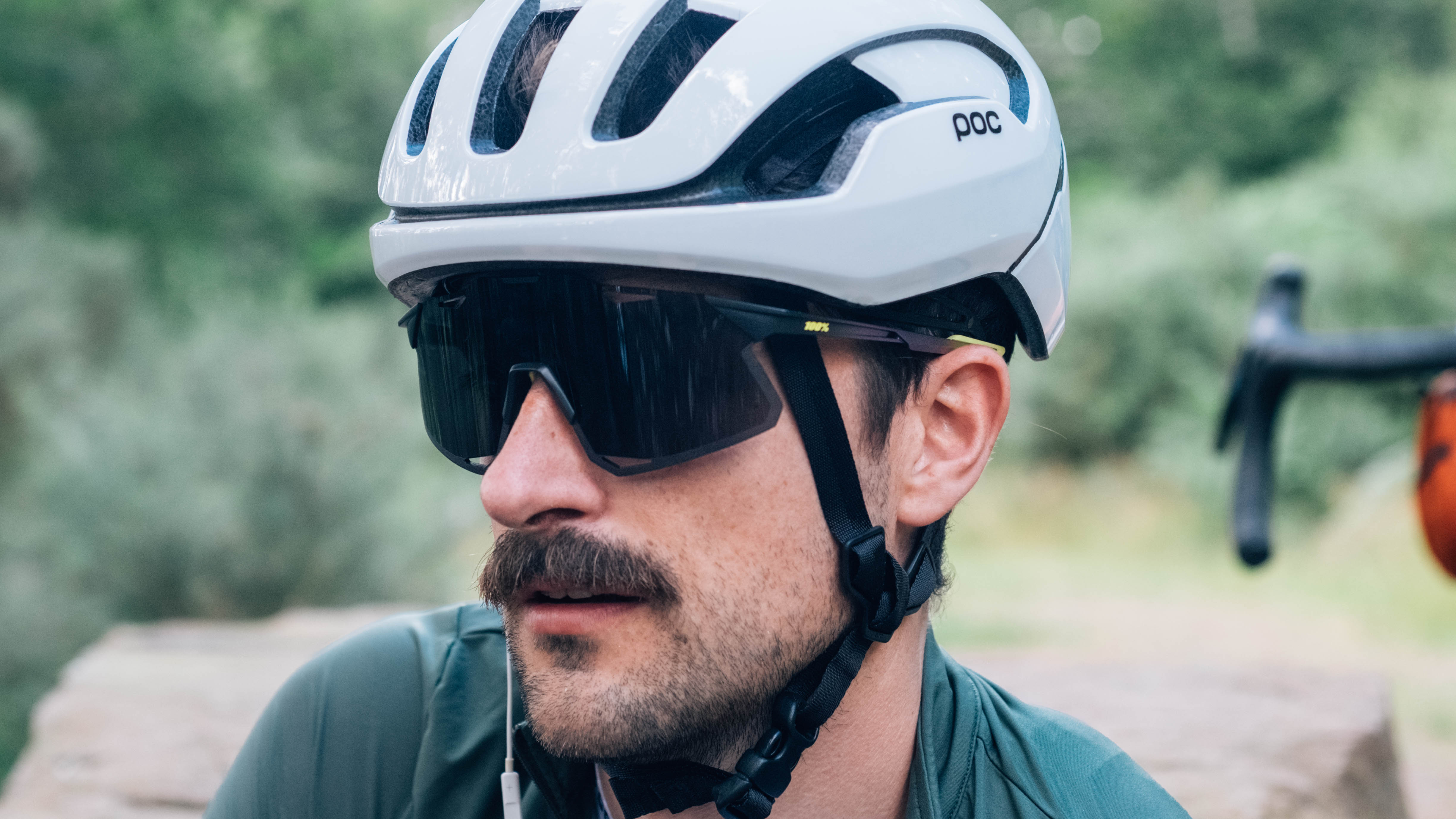
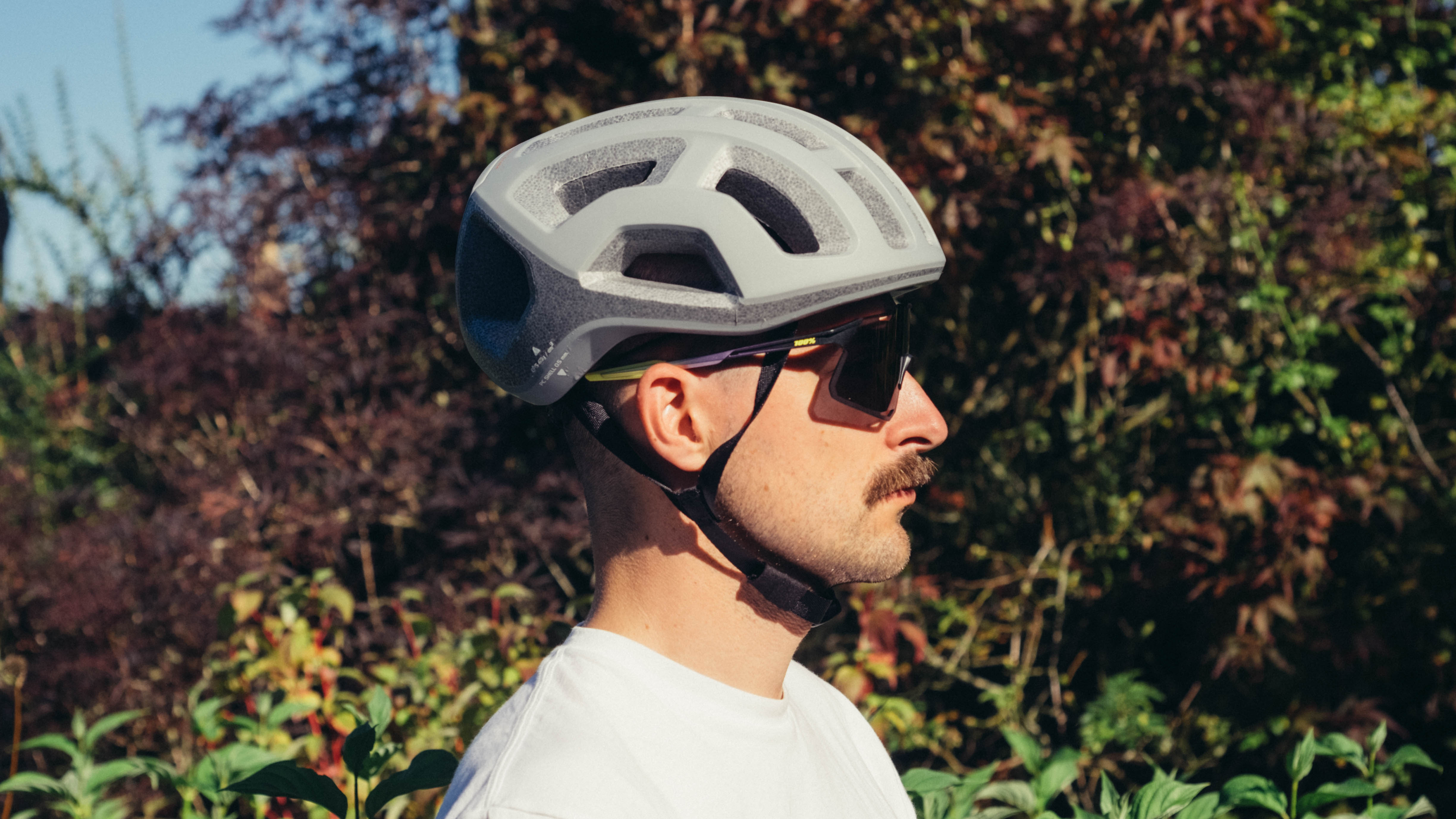
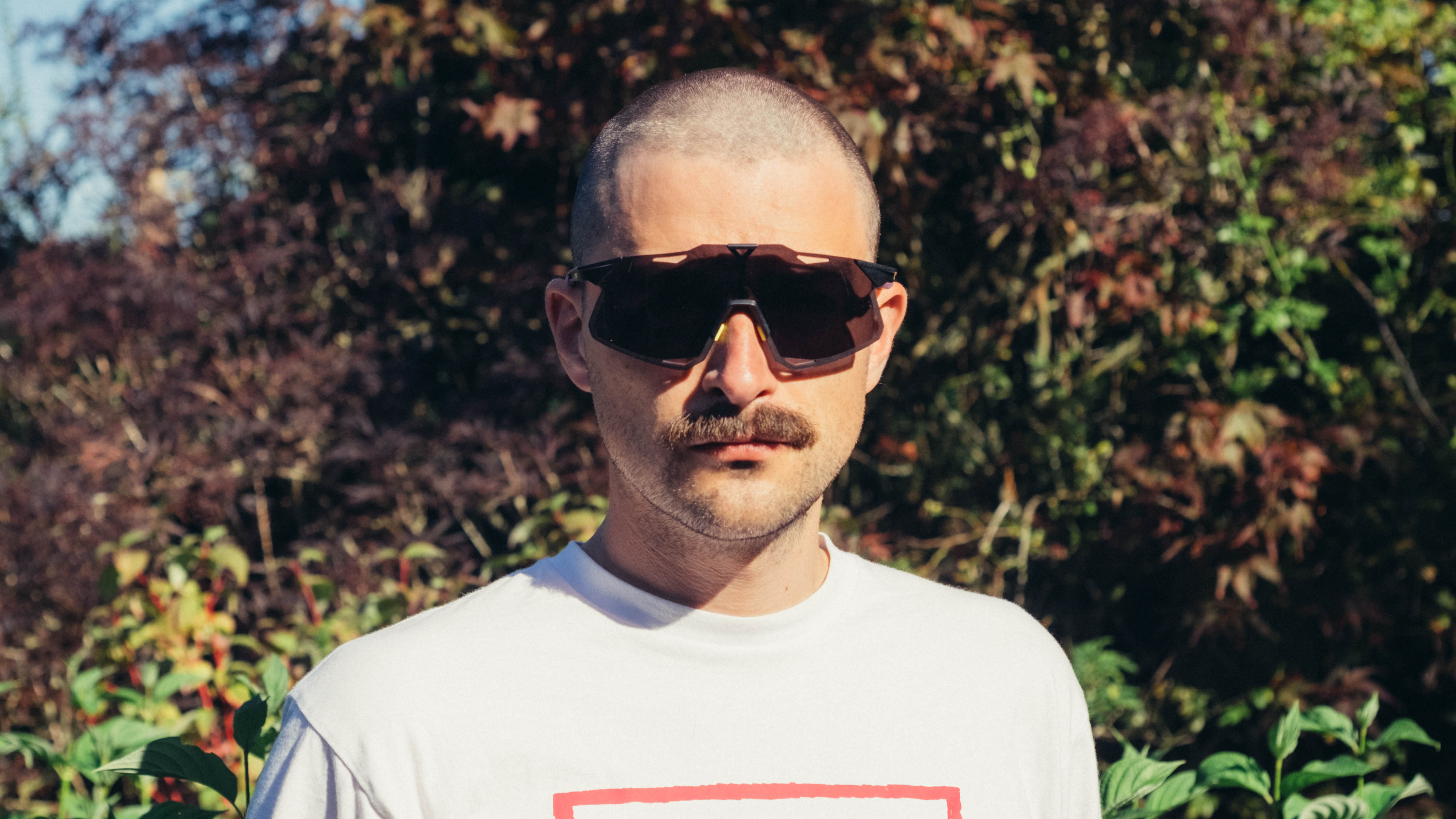
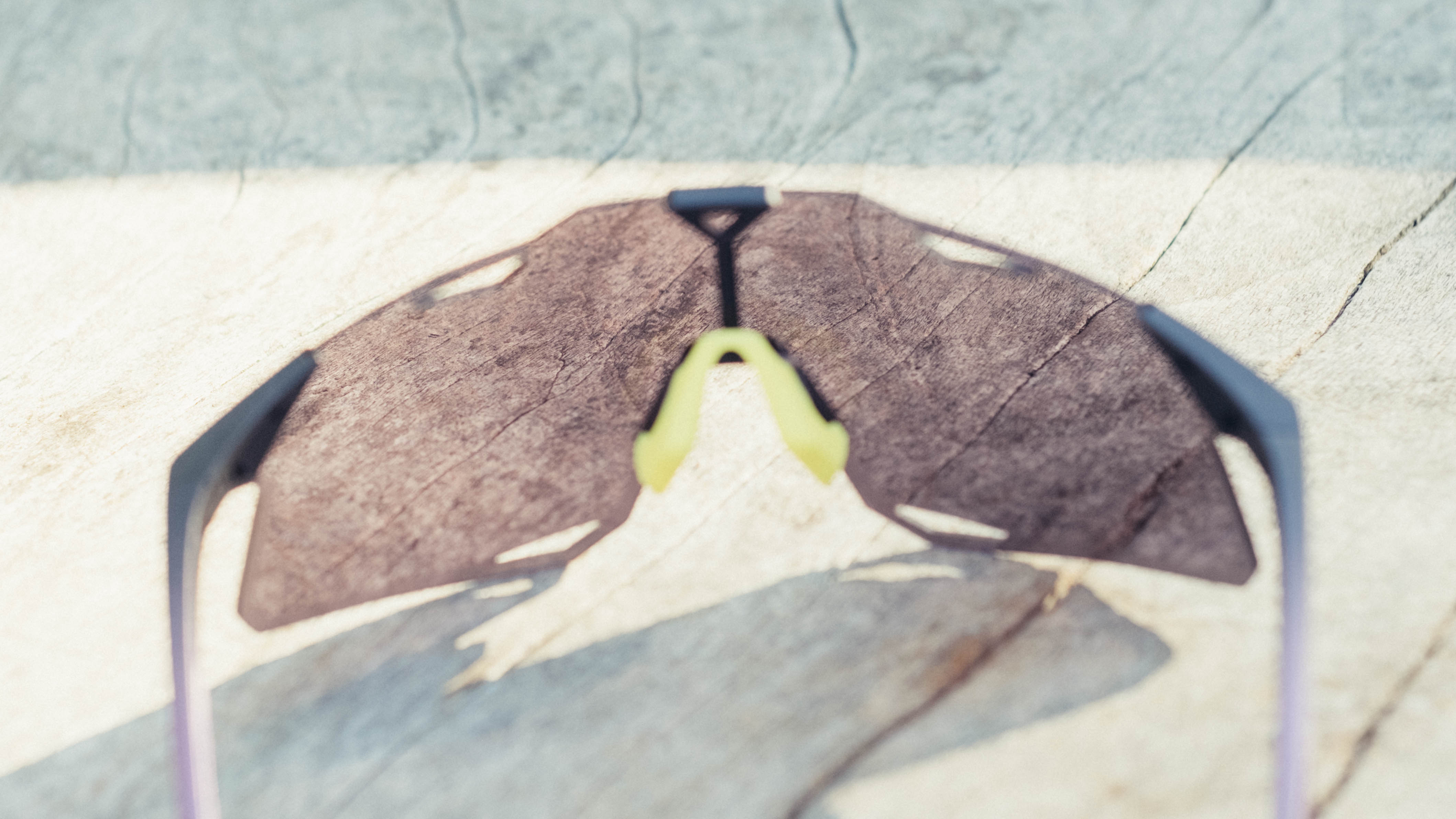
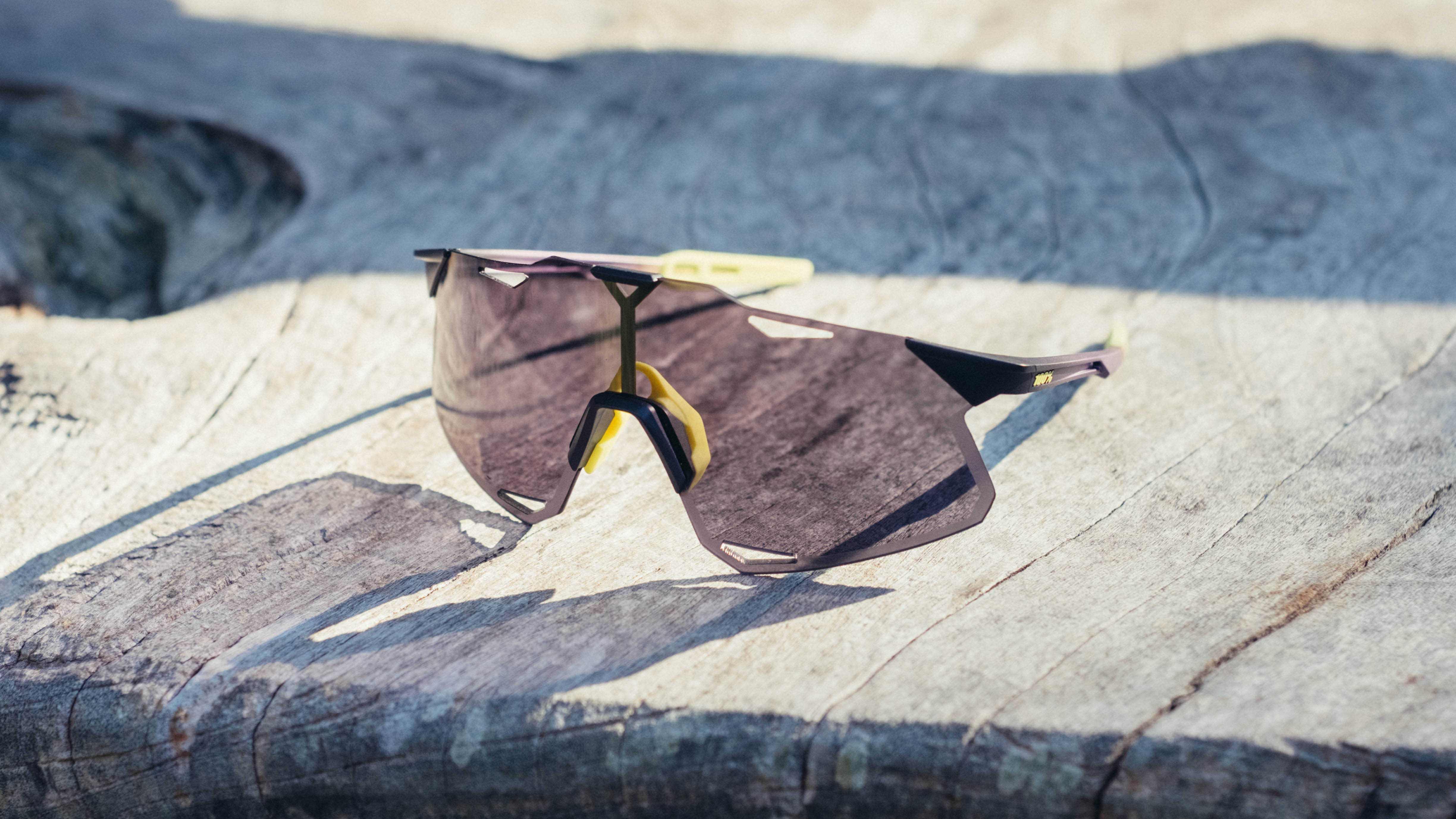
Specifications
Reasons to buy
Reasons to avoid
Lens positioning is important. A lens that is low-slung on the face works well for more upright positions, but as soon as you get long and low on the bike in an aero position you very quickly start looking through the upper boundary of the lens.
If you're a rider who rides in an aero position for the majority of the time then I suggest you go for the Hypercraft from 100% over the POC elicit. The lens sits noticeably higher on the face by comparison, and while the optics aren't quite so good they are comparable in many other ways.
A clear lens is included, and while the swap is easy it does feel a little like you're breaking the arms off. Retention is similar to the Elicit too, though the waspish, narrow arms are less comfortable on longer rides. As per the S3, too, the longer arms with a minimal wrap can interfere with helmet cradles if you're small of head.
Another big selling point over the Elicit is the price; especially on sale, the Hypercraft are a lot cheaper, making them a more attractive proposition if you want a set of lightweights for more occasional use.
There is a full review encompassing all that I liked and disliked on site already, so have a browse if these tickle your pickle.
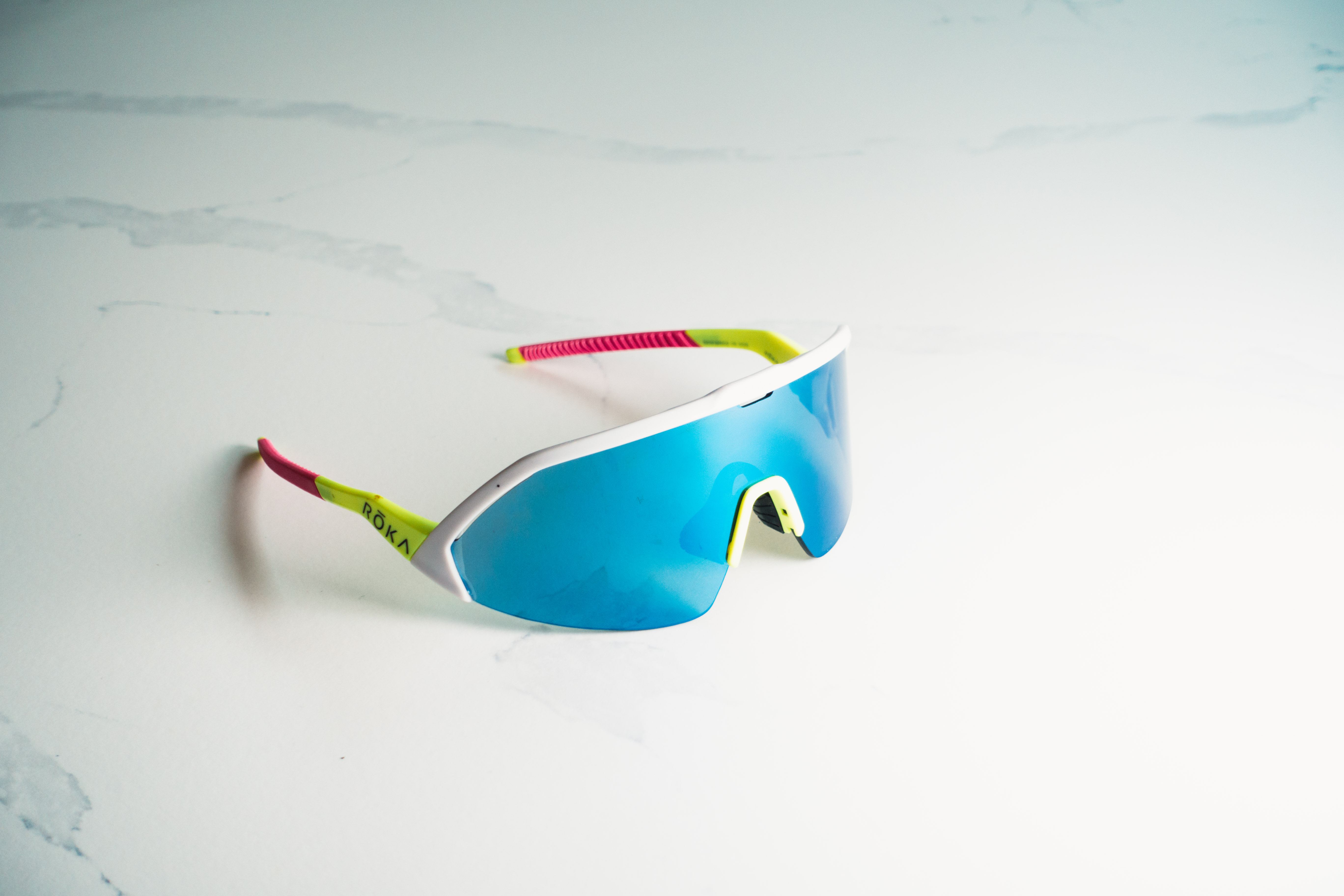

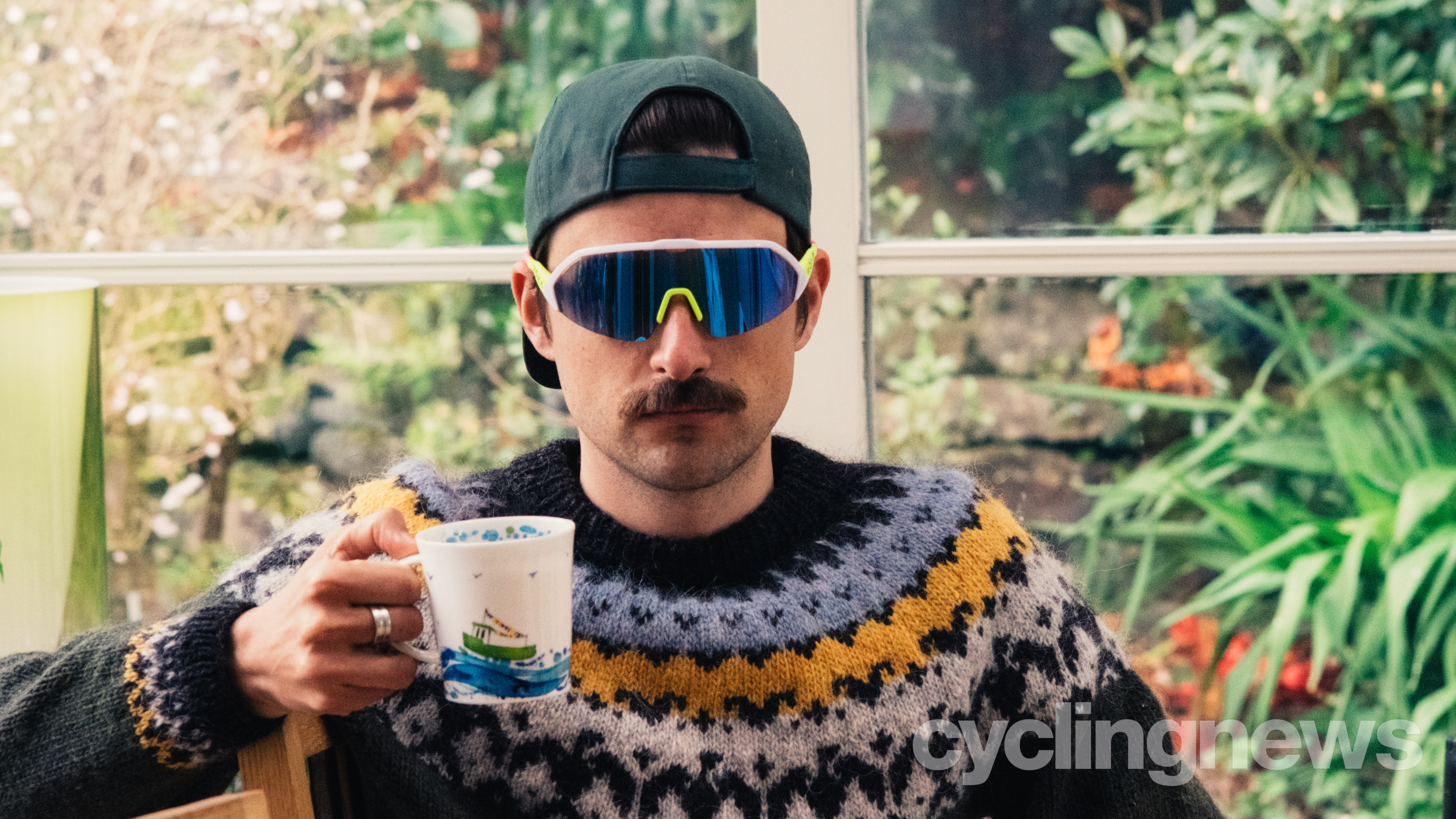
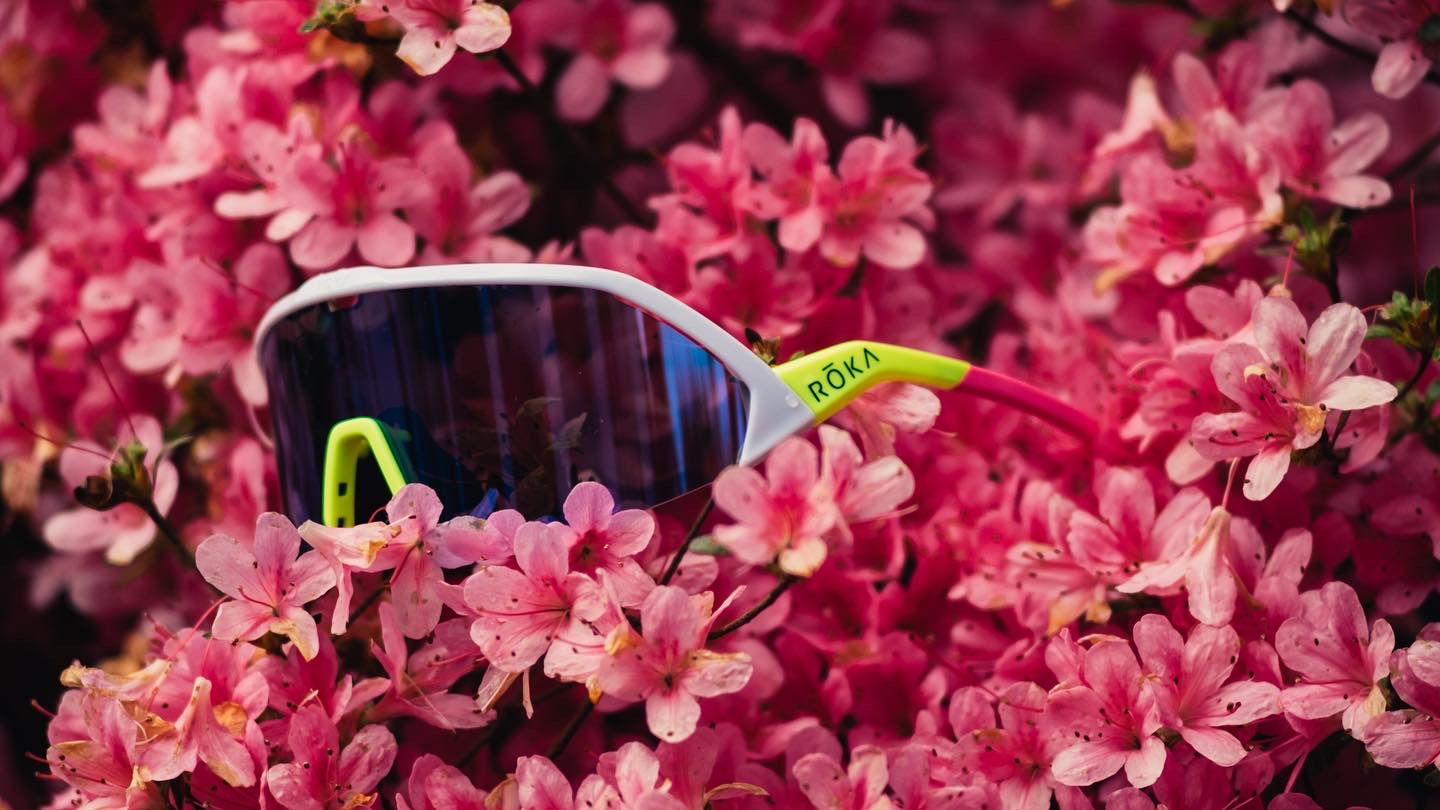
Specifications
Reasons to buy
Reasons to avoid
Considering they are a half-frame, the Roka Matador Air are still extremely lightweight. Used by the SD Worx team they offer a different visual package, with arms that join the lower half of the lens. This is claimed to offer benefits whereby the arms don't interfere with helmet straps, but I've never found that to be an issue on any of the countless pairs I've tested. Nonetheless, it still looks cool in my eyes, especially in my beautiful/hideous "Miami waterfront in the 80's" custom colourway.
The optics and field of vision are slightly left wanting, particularly in low light, compared to other options at this price point, but they do offer unmatched retention for lightweight, and stellar comfort. The combination of low weight, good grippers, and just the right level of arm compression means I could happily wear them 24/7 (I sleep on my back so it's fine).
These are definitely a pair better suited to smaller heads in my opinion, and while they don't come with a clear lens the lens swap is very easy. Given how long I've been using them I've written up a full review for your perusal if these seem like something that'd suit you.
Best budget cycling glasses
I've put together a separate guide to the best cheap cycling glasses, but from this guide two pairs really stood out to me as punching well above their price points, so I've included them here. The lenses and build aren't going to match a really top-end set, but for the price they're incredible, and if you're just getting started they're a great jumping-off point into the world of dedicated eyewear.

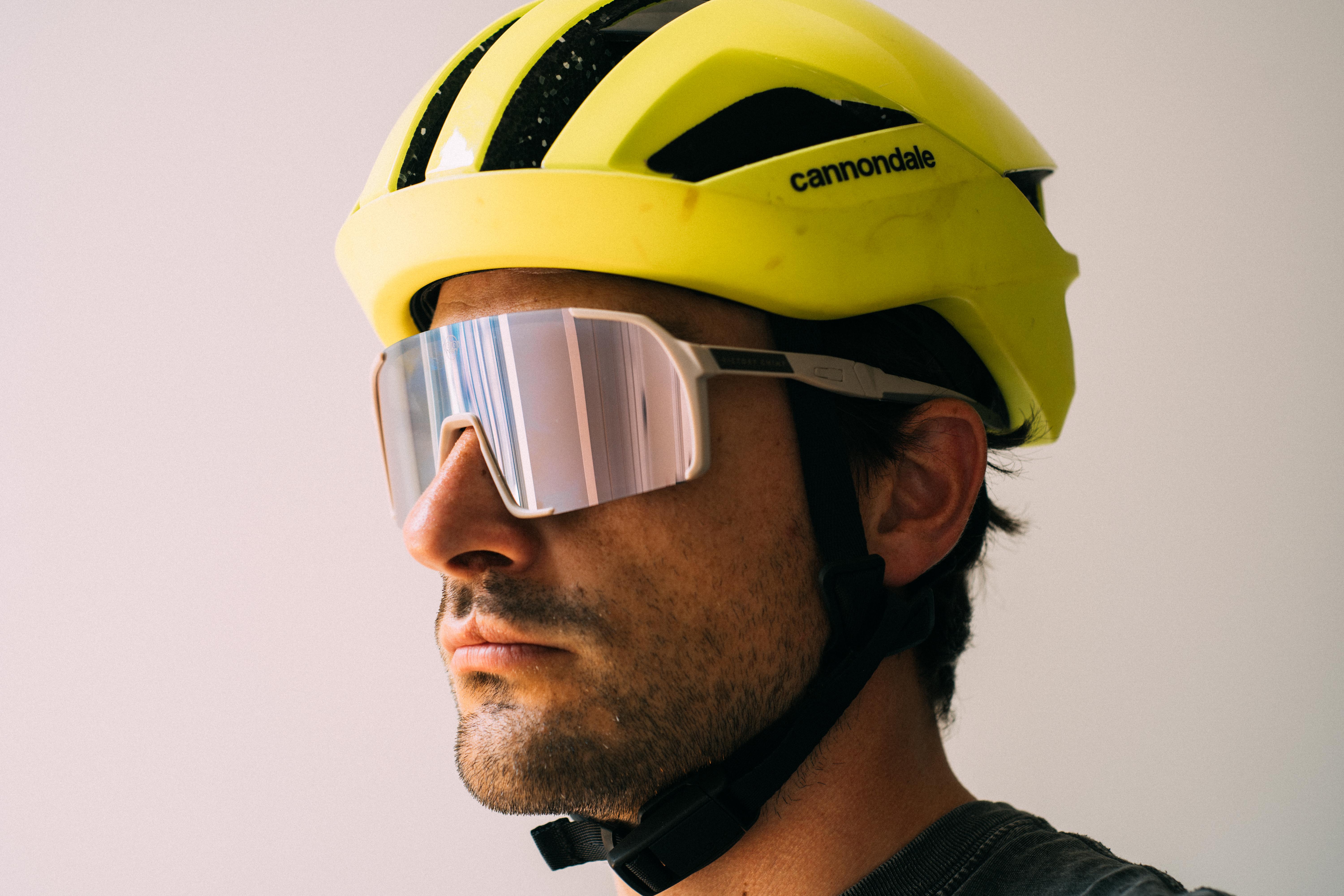
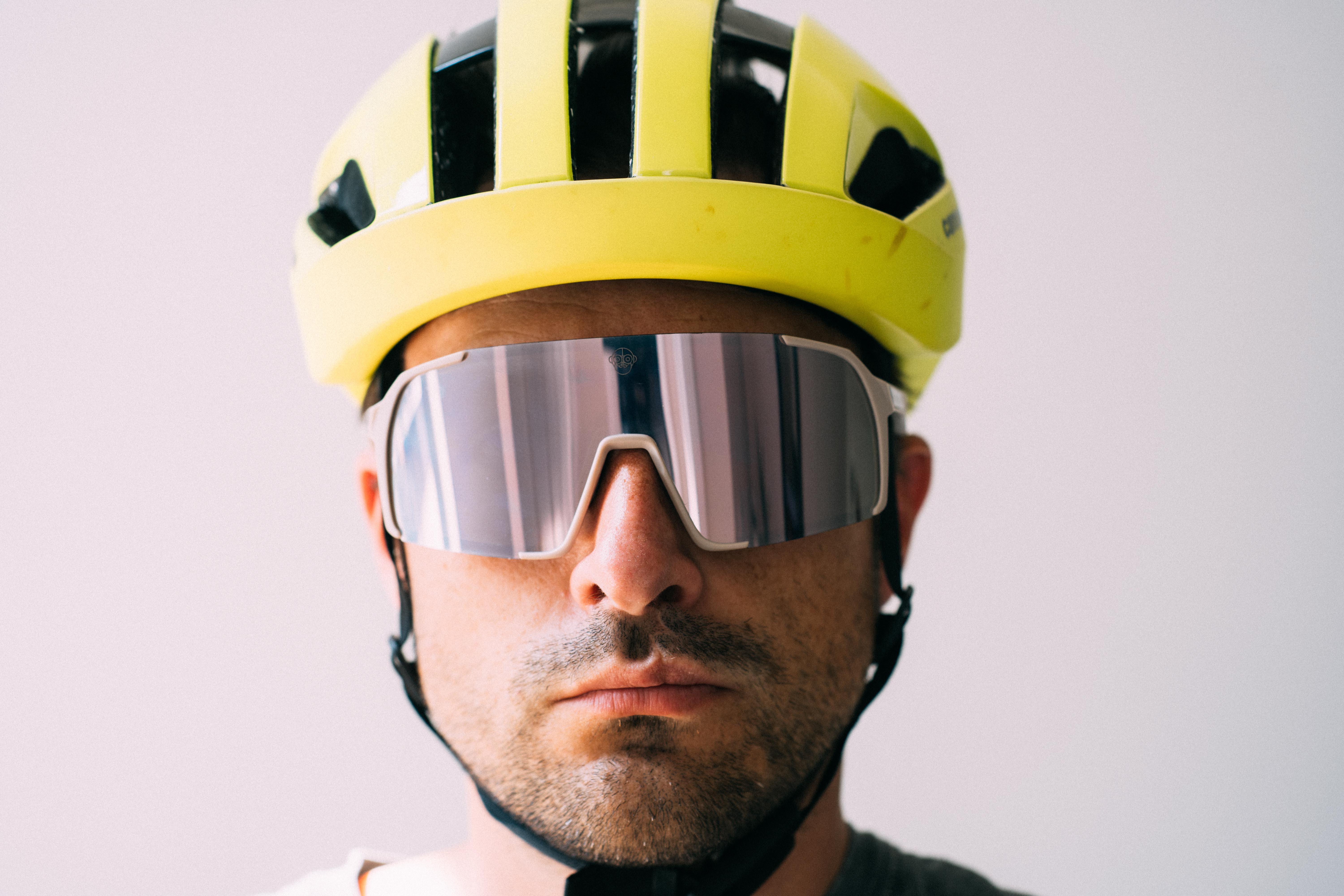
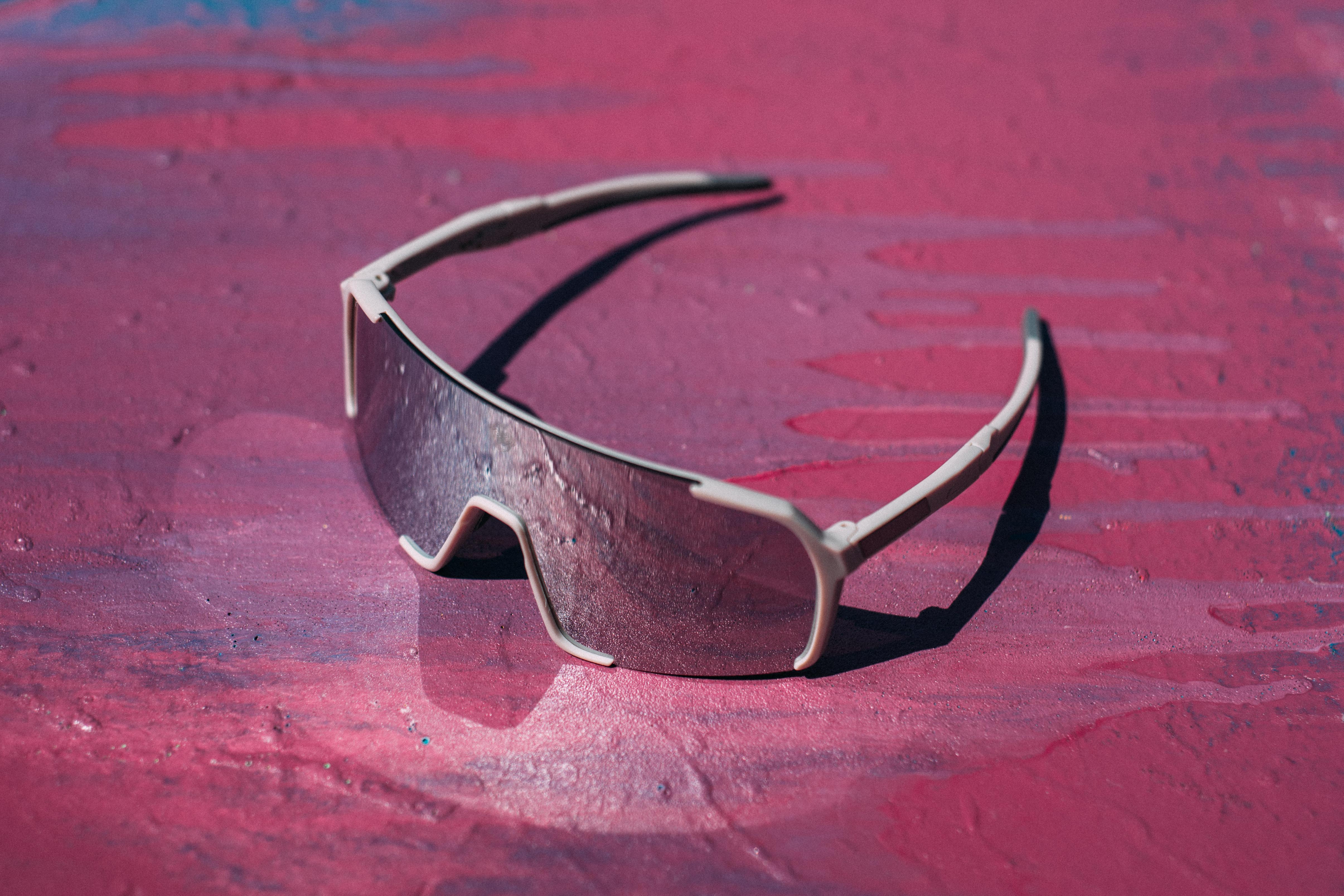
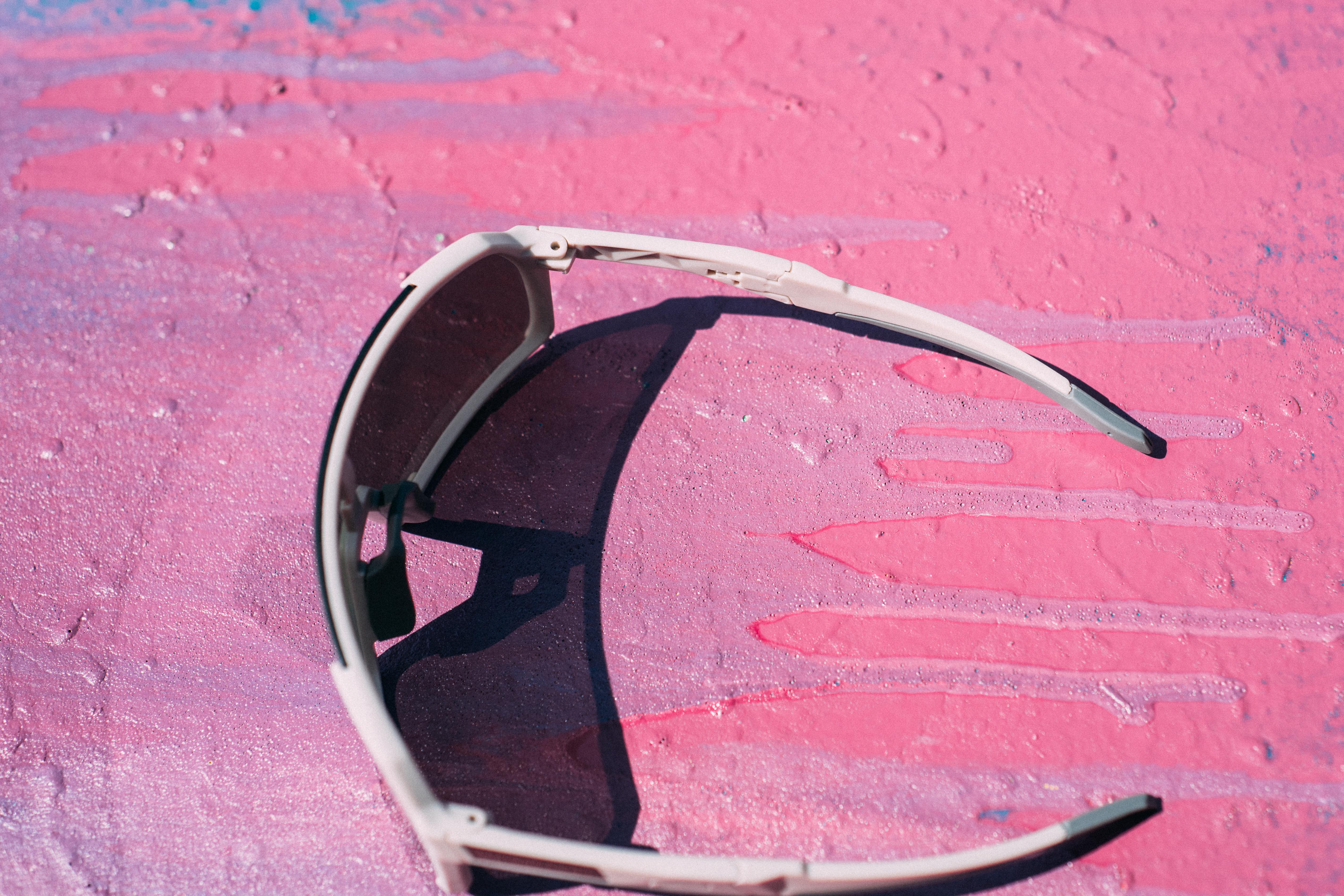
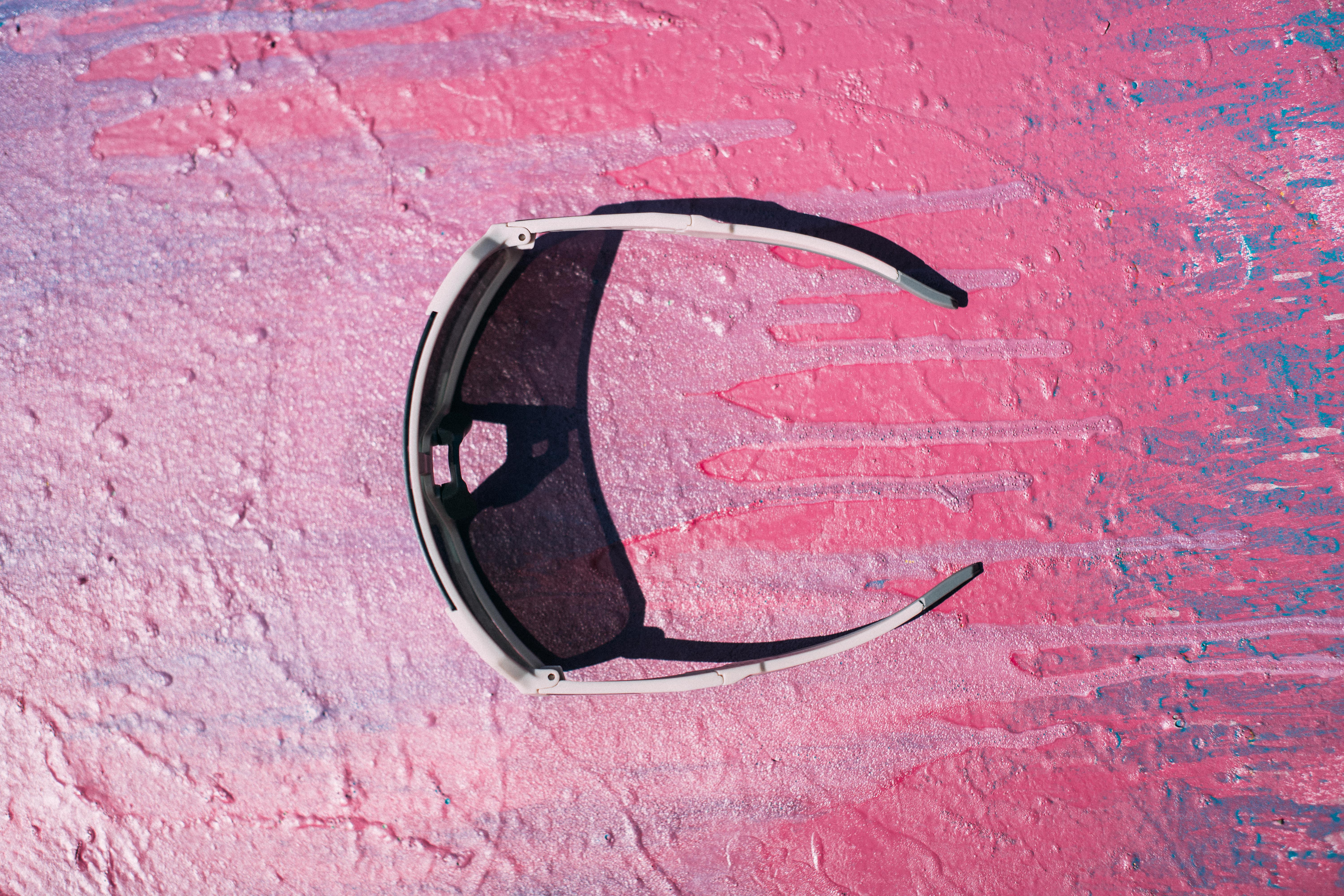
Specifications
Reasons to buy
Reasons to avoid
In terms of value, nothing beats these APE Optics Vega Evo from Victory Chimp. As well as looking far more premium, for under £40 ($50ish) you get a mirrored lens, a clear one, and a polarised one, as well as a prescription lens insert. For a little more you can get a photochromic lens included too
Aesthetically the Vega Evo apes (yes, pun intended) more premium models with a full frame that's partially occluded by the lens making it appear semi-frameless. The colour palettes are modern too.
The main lens is decent enough, though, like many cheaper cycling glasses, it has this slight colour shift quality to it while you look through. It's not hugely detrimental, and in sunlight, you'll be fine.
In low light, you'll want to swap out to one of the other lens options though, but that's the beauty of these; like the far more premium 100% S3 you are covered for year-round riding.
The materials feel a little cheaper than higher-end models, but that's because they are, and you'll be saving a pretty large wedge of cash to make up for it.
My Victory Chimp Vega Evo review should fill you in on all the details if you want more info.
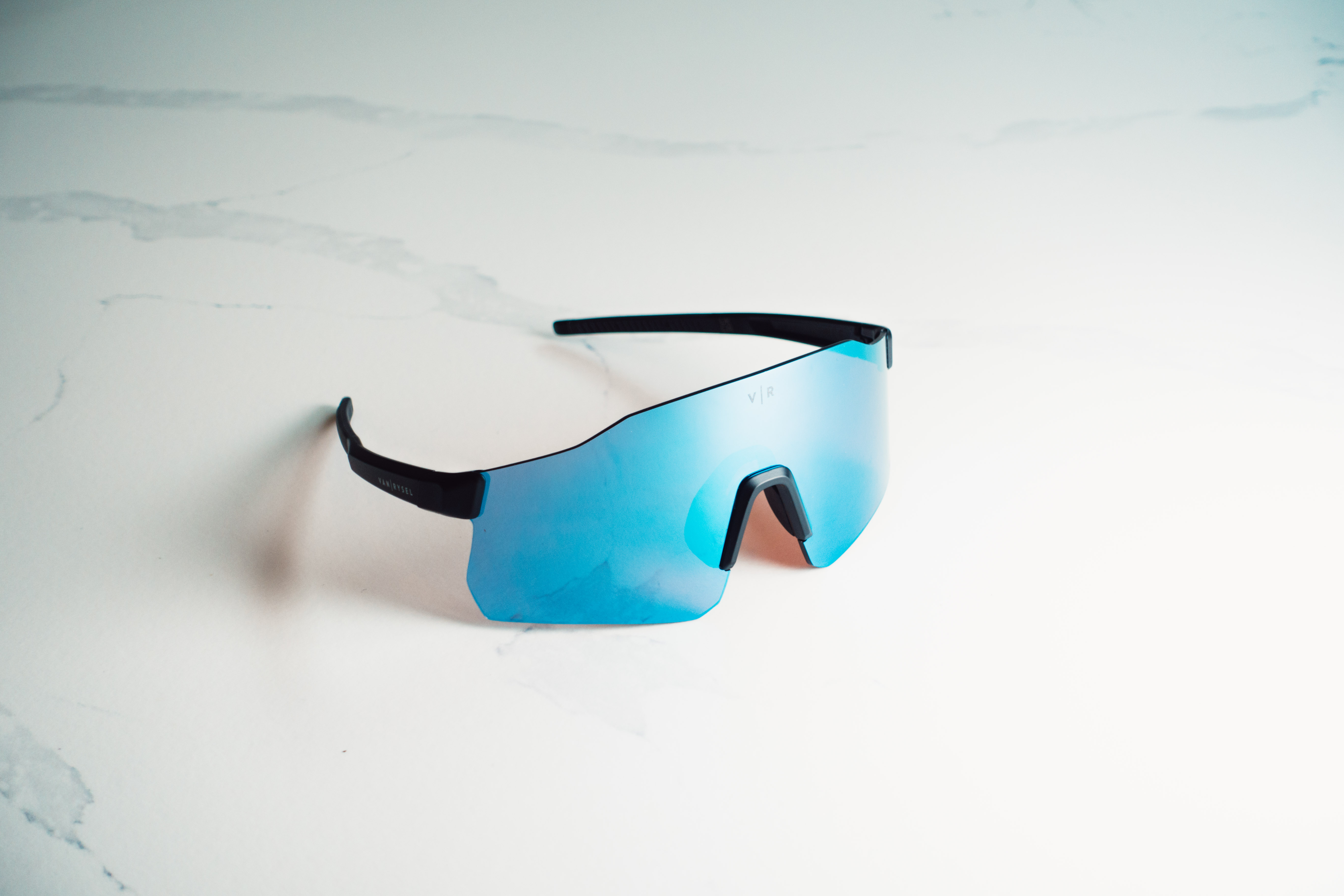
14. Van Rysel RoadR 920
Specifications
Reasons to buy
Reasons to avoid
If you want to look like a WorldTour professional for the lowest price then the RoadR 920 from Van Rysel, Decathlon's in-house brand, is the way to go. Used by the Decathlon AG2R squad they pack a pro aesthetic into a budget package.
The lens is better than that of the Victory Chimp pair, with an orange-red base tint and, in this case, a blue mirror exterior coating. The downside is that the lens is fixed, not swappable, and so you can't run a clear lens in the dark.
Like most frameless cycling glasses except the Kato and the Encoder, the lack of a frame means they are more flexible. The low weight though makes them super comfy, and while they don't grip as well as some, if you've not got a tiny head you'll be just fine.
Again, like the APE, the materials for the arms feel cheaper, but you're shelling out anywhere from 1/2 to 1/4 the price of some options on the market, so if you're looking to save some money it's an easy decision to make.
Best specialist cycling glasses
There were a few pairs of sunglasses that I've been testing that I loved, but defied categorisation. Giant lenses, aero gains, side flaps, and some more casual options. I have loved using all the options below, but I appreciate that, more than any others on the list, these are definitely a more specialist, more considered purchase.
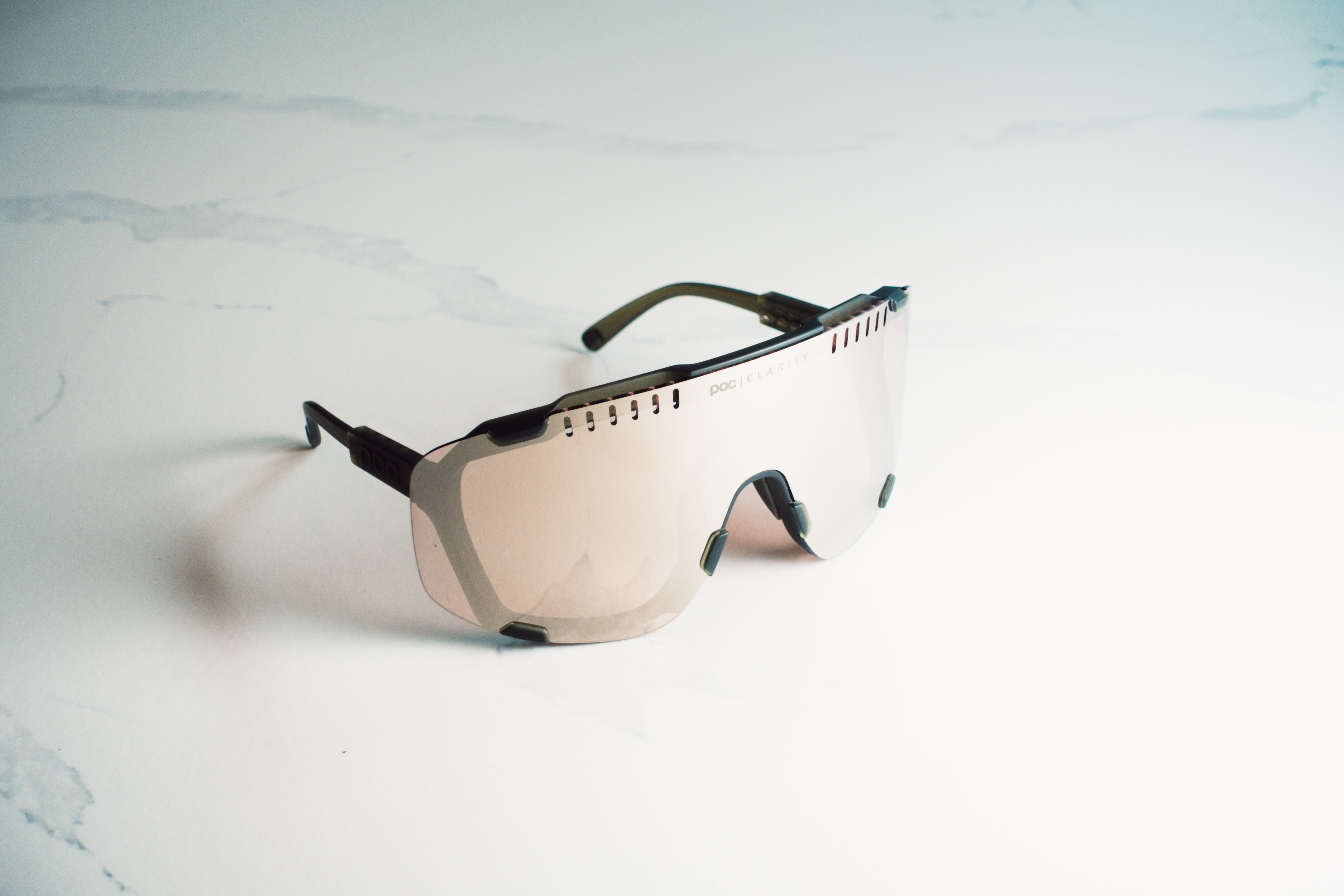
Specifications
Reasons to buy
Reasons to avoid
There's been a slow arms race in the world of cycling glasses as to who can make the biggest pair. POC has, with the Devour, created something akin to a nuclear bomb, in that they are just truly gargantuan.
The sheer size of the lens has many benefits. You get a huge field of view, but more than that you get unmatched protection from the elements, be they sun, rain, wind, muck, or anything else. The feeling of protection the Devour offers is only really matched by actual goggles. This is why, for bad weather riding in winter, they are my go-to.
With such a whopper of a lens comes some drawbacks, however. The height makes it far more likely to interfere with your helmet, and unless it's the right setup these do often get pressed into my nose, especially over bumpy terrain. The lowers also touch my cheeks when I smile, but that's not an issue because cycling is a serious pursuit and nobody would be mad enough to enjoy themselves while riding, right?
These are a wild pair of sunglasses, and for some of you they will be perfect, but they have a very out-there look, are noticeably heavy, and the hooked rather than grippy arms mean they won't necessarily stay the optimum distance from your face. Curious? We've got a full review to fill in all the gaps.
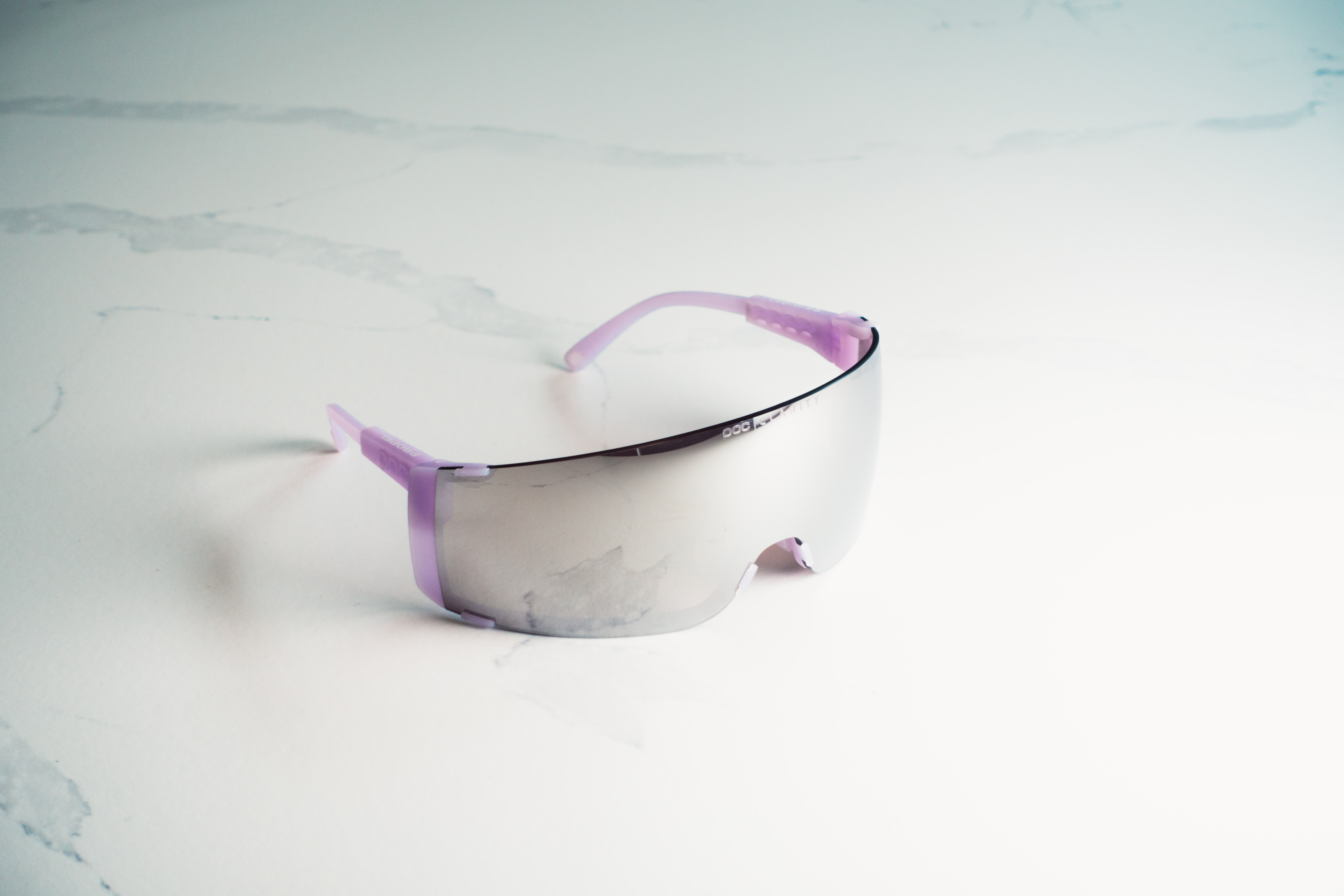
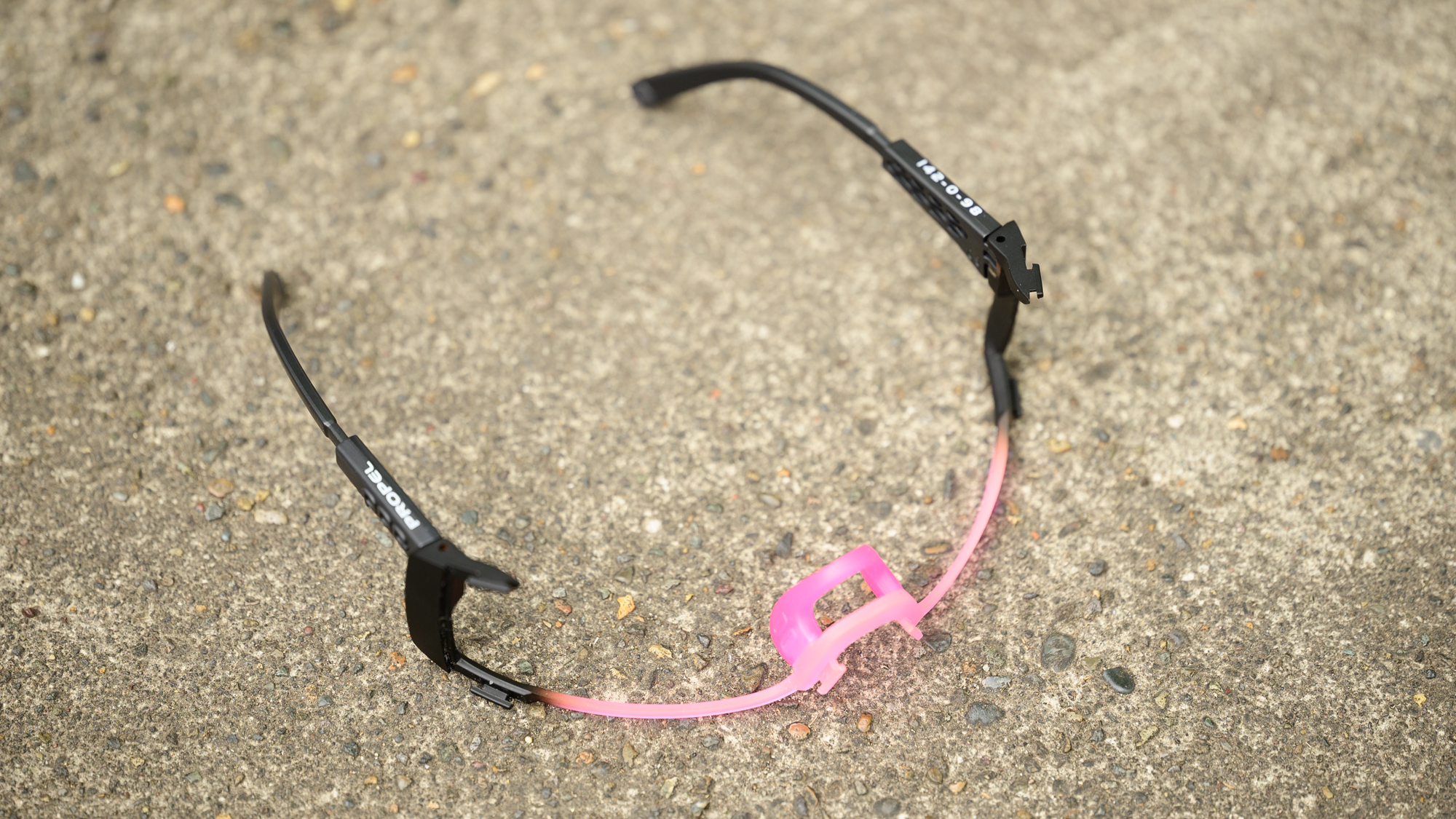
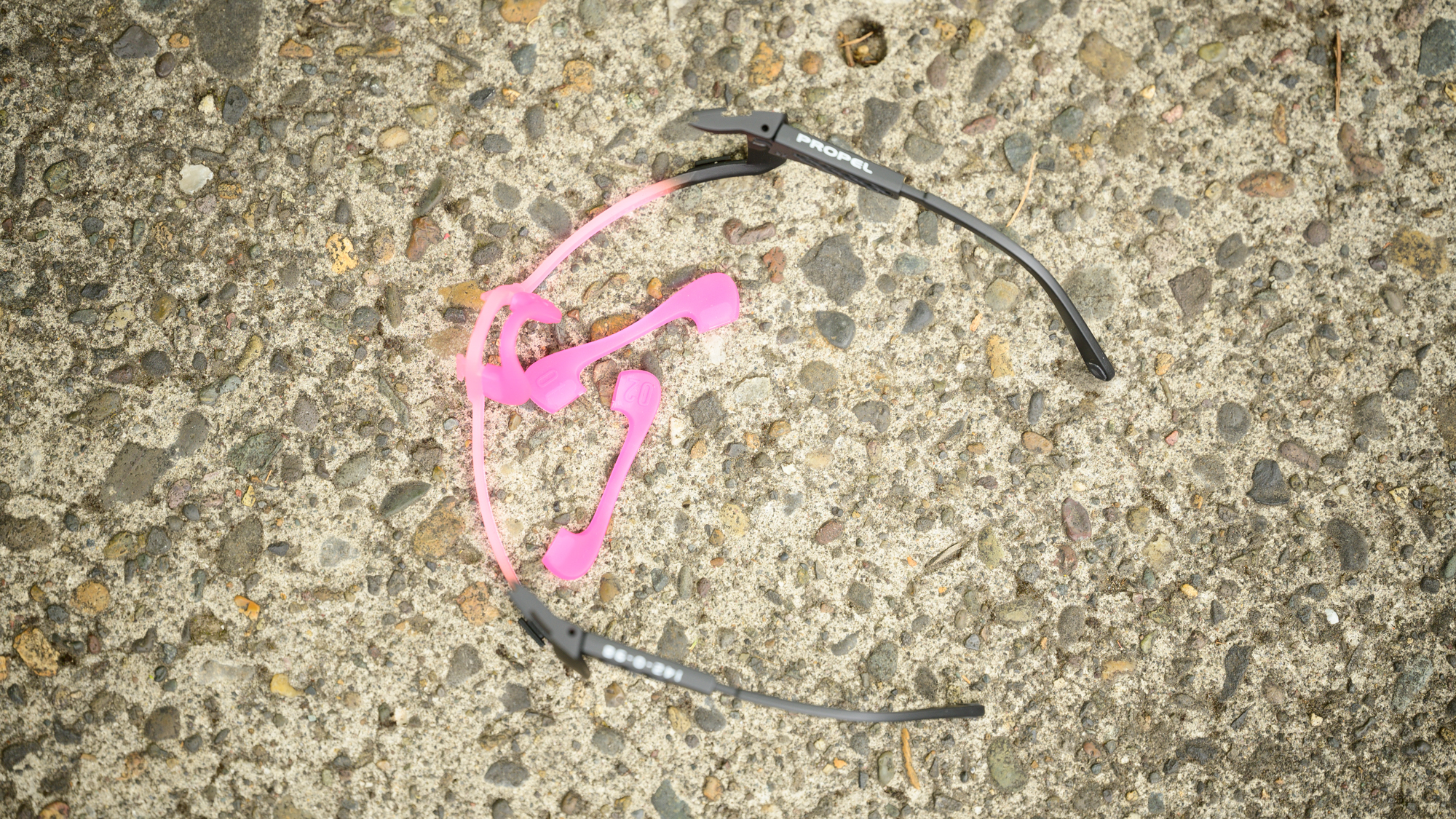
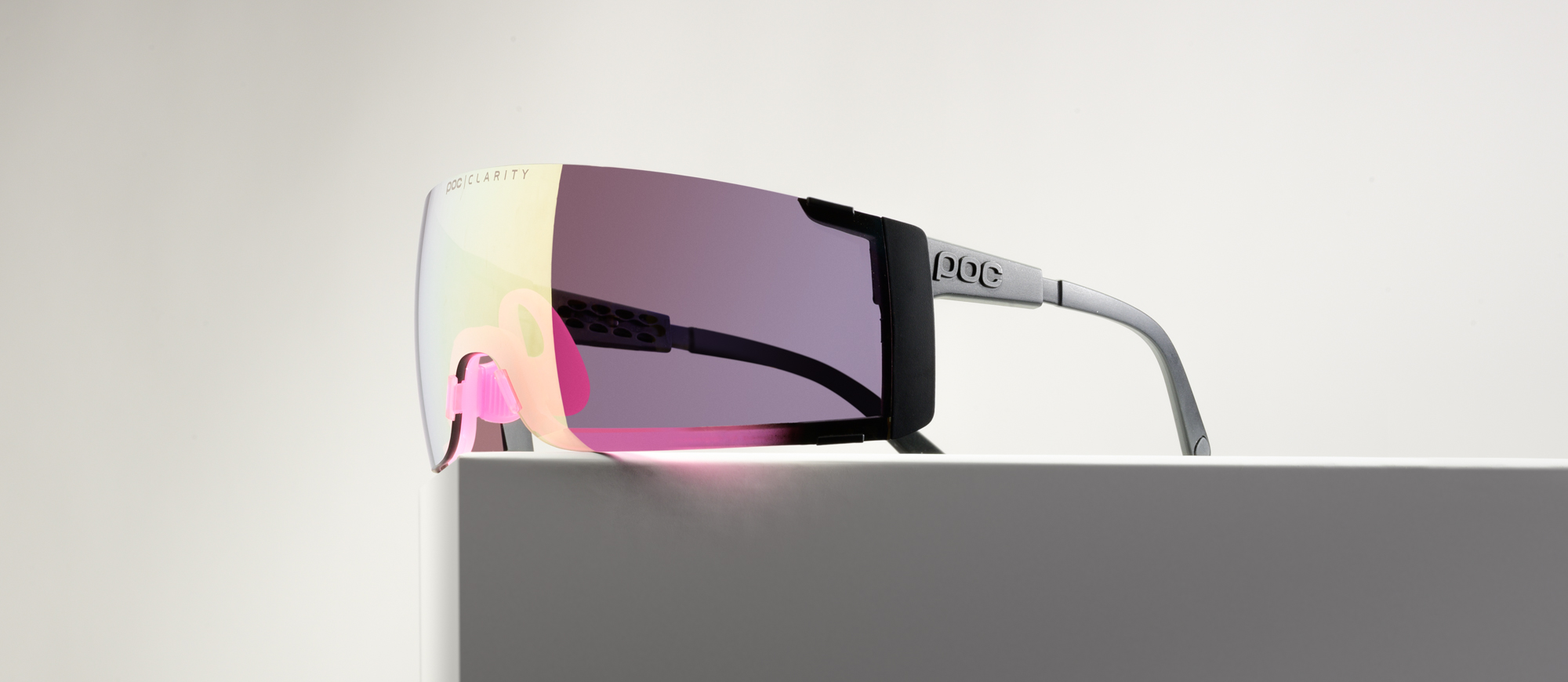
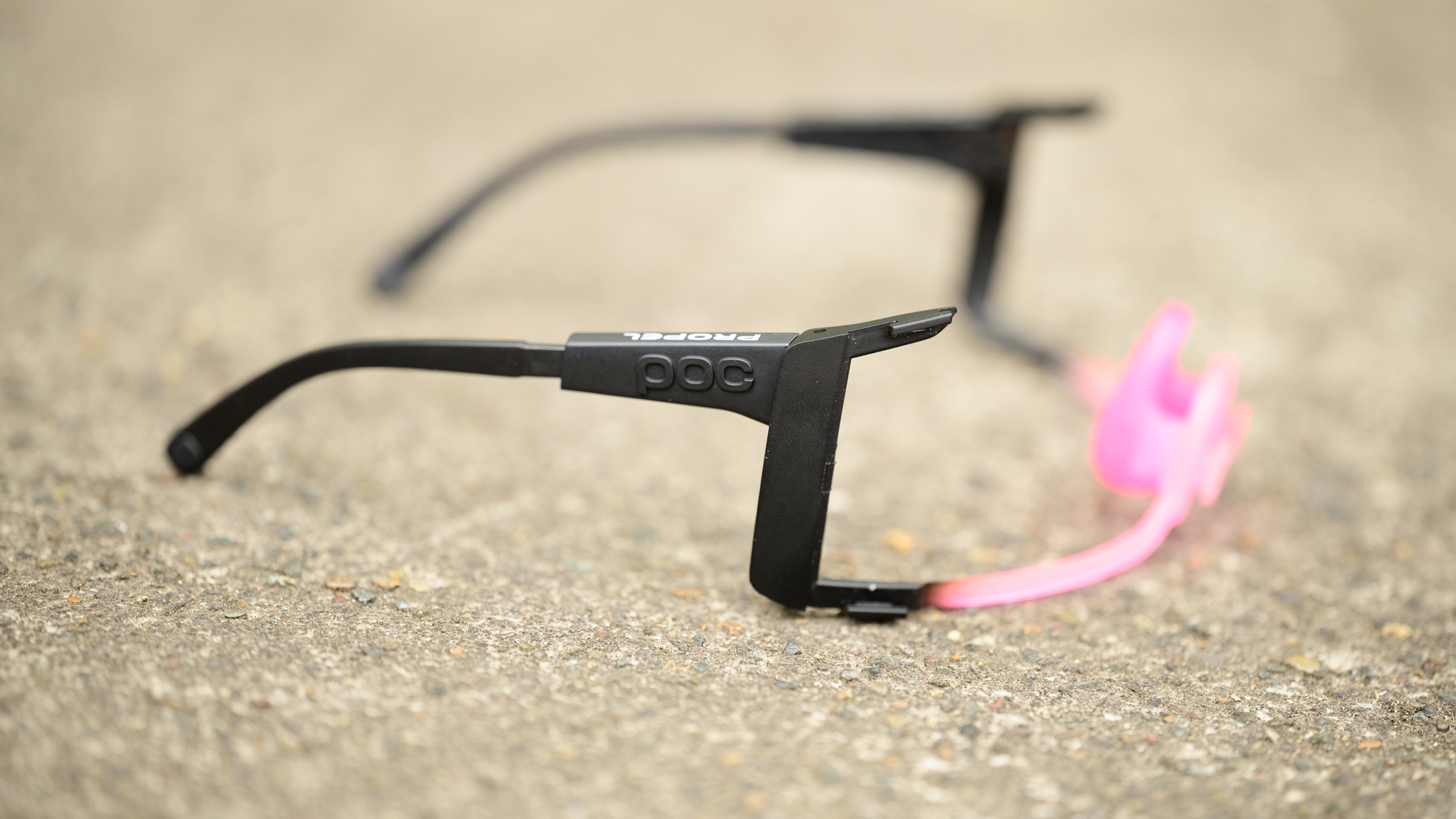
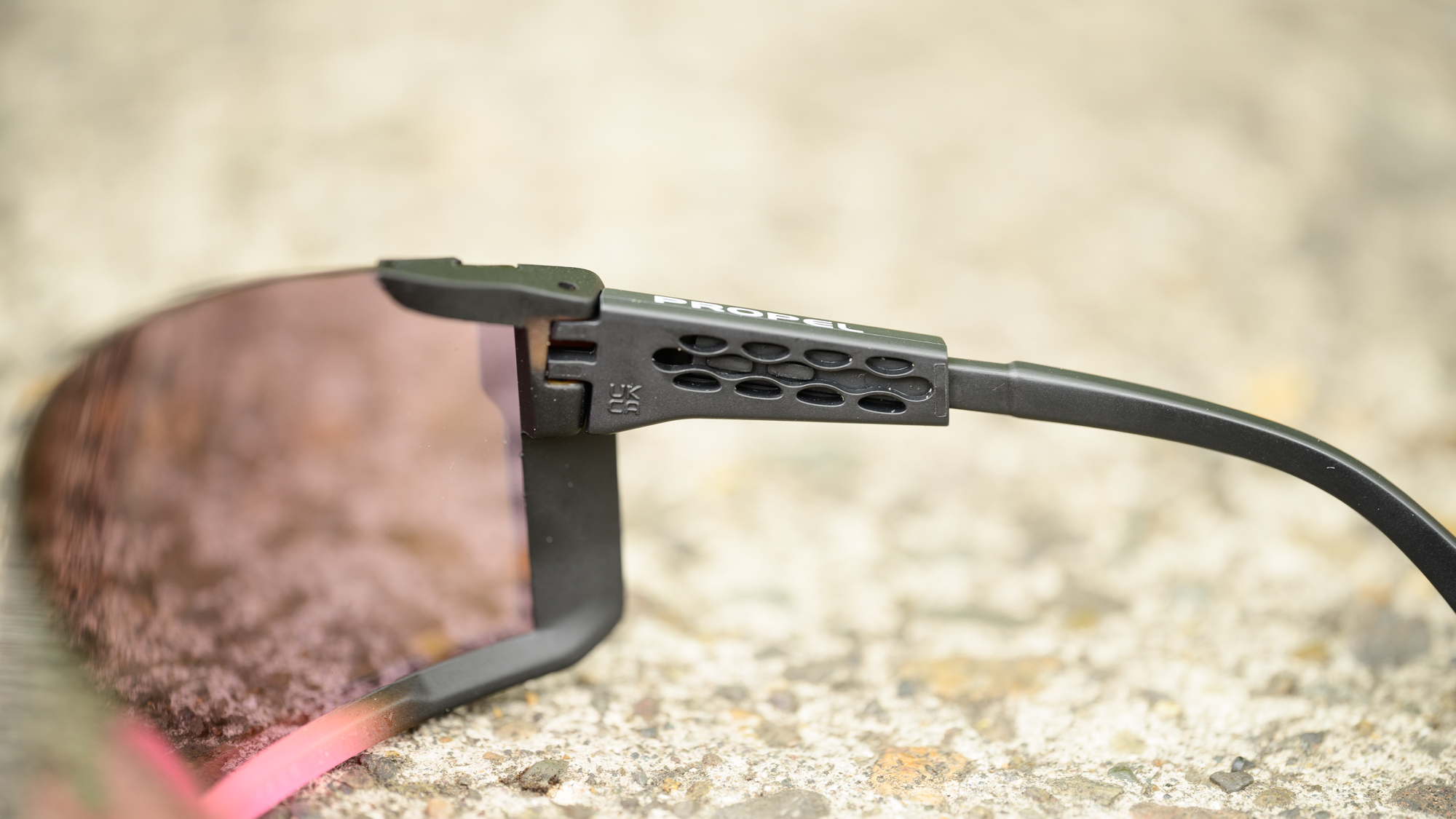
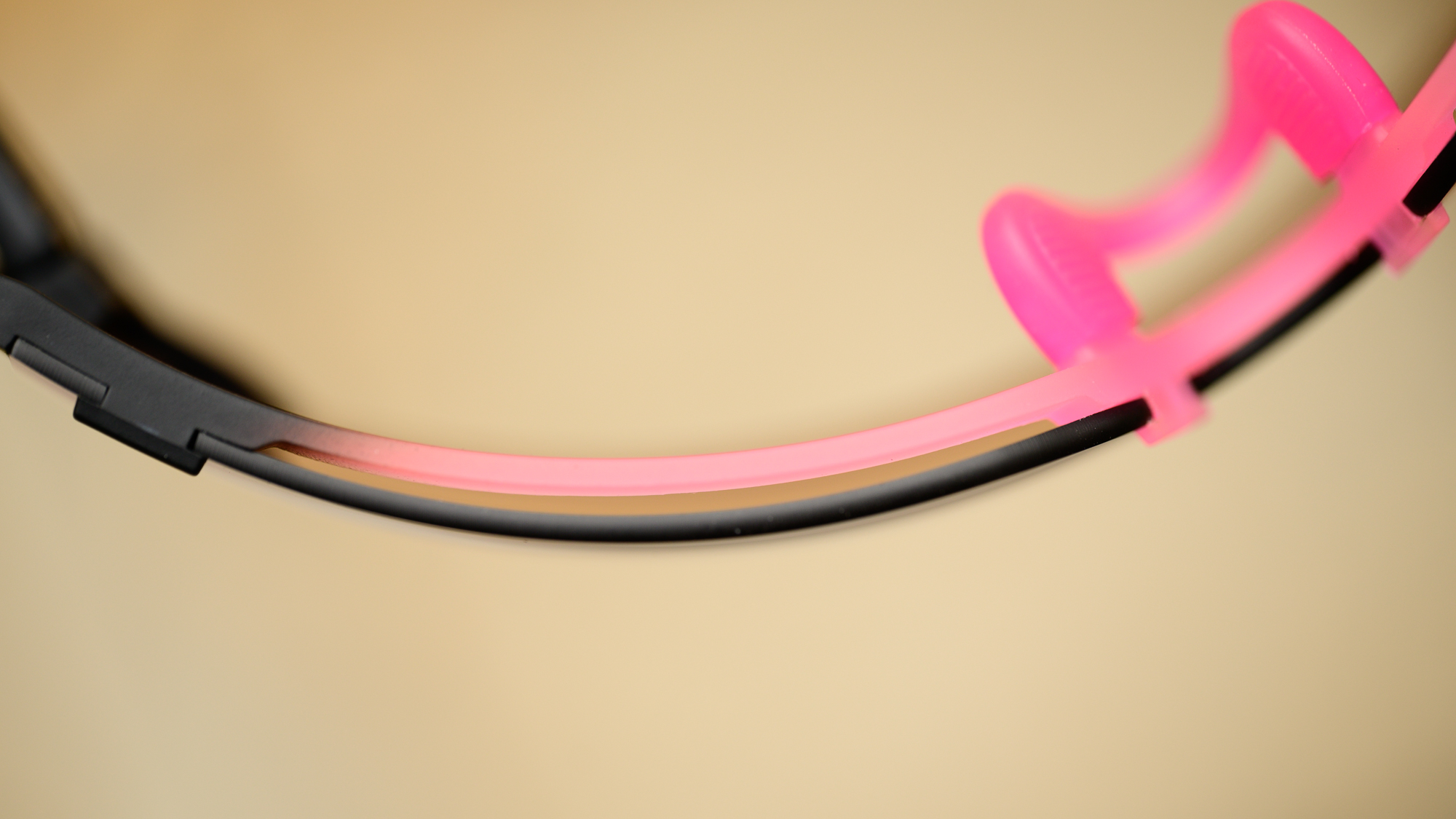
Specifications
Reasons to buy
Reasons to avoid
The second of three in this section from POC is the Propel, the only pair of sunglasses I can think of that has been designed with aerodynamics in mind. Personally, I love them, and while there aren't many lens options the silver Clarity options I have are brilliant.
They are the most heavily wrapped glasses I've ever used, offering peerless peripheral vision. Somehow, despite the heavy wrap, they don't ever encroach on your eyes or eyebrows. You can see the frame that only exists on the lower edge, but given these are aero-focused, when you're in an aero tuck you will be looking much higher up and the field of view is perfect. They feel like you're wearing a visor more than a set of cycling sunglasses, and they look it too.
They're also the most secure of any of the POC offerings, with a brilliant replaceable nose gripper combined with a much better grip from the curved lens/frame. The arms are hooked rather than grippy, as per the Devour, but they hold much better in this case.
My colleague Josh Ross has written a full review and loves them about as much as I do.

17. 100% Norvik
Specifications
Reasons to buy
Reasons to avoid
If you want to pretend you're Geraint Thomas and wear glasses with two separate lenses, don't get the SunGods, get these instead.
I had these in a box for ages and dismissed them; the future of cycling glasses is mono lens only. One grim day though I chucked them on and was extremely surprised. In the driving wind the side flaps are excellent at keeping you feeling snug and protected, and having clear lenses in the box meant they became a winter staple in my rotation.
They may raise some eyebrows at the club run, but if you're a contrarian, or simply don't like the giant single-lens look, then these are my suggestion as an alternative. The HiPER lens in the white pair I've got on test is the same as in the S3 that I also loved, and the finish is also the lovely soft tact that makes them feel super premium.
The field of view isn't as good as larger options, and the side shields do sit in your peripherals somewhat, but especially if you ride in a more upright position (I'm thinking gravel here) they'd work really well.

18. Article One x Mission Workshop Navigator
Specifications
Reasons to buy
Reasons to avoid
Sometimes you want to ride your bike not in kit. Commuting, trips to the pub, just generally pootling about in the evening sun. What, then, do you wear instead of cycling sunglasses? Well, whatever you like.
If, however, you want a pair of casual glasses with a sprinkle of cycling performance then the collaboration pair between Article One and Mission Workshop would be my pick. They look on the face of it, and on my face, like a classic pair of tortoiseshell sunglasses, but they have a tuneable nosepiece like many others on this list and arm grippers.
I'm not going to lie to you and say they're as good on the bike as a pair of dedicated cycling glasses, but as someone with a small head they certainly stay put better than any casual pair of shades I've used, plus they look great. Article one has a few more styles with grippers too if these aren't to your tastes, and they're also as good (I've used four pairs so far).
How to choose the best cycling glasses for you
If you've scrolled through all the models and have ended up with more questions than answers worry not, hopefully, we can answer them all. Cycling glasses have evolved greatly in the last couple of decades to the point now where there are competing proprietary lens technologies, baffling shapes, and a mix of frame styles too.
We'll go into what makes a good lens, what makes a good frame, some things to look out for in terms of fit and a few more things.
If you're torn between two pairs or even more, you don't necessarily need to break it down to stats though. All the cycling glasses in this list will provide the legally required UV protection or more as they are from reputable manufacturers, so if you've got a gut feeling that you just like a pair then go for it. None of the pairs included here will let you down, that's why they're on the list.
Why do cyclists wear big glasses?
In a word: Protection. And also in another few words: Field of vision. Bigger lenses protect your eyes from debris and high winds, and allow you to see more of what's going on around you without being obstructed by the frame, or having to peer over or under the lenses.
If you're descending at 70km/h, that's a 70km/h wind that you need to block out, more if you have a headwind to contend with too. The best cycling glasses can basically nullify the effect of even the strongest gusts to keep your eyes tear-free and able to focus on the road ahead.
What colour lens is best for cycling?
In days gone by cycling glasses came with a black, often mirrored lens for bright sunshine, a yellow or orange lens for low light, and a clear lens for nighttime. Now things have moved on, and a single lens can often cope with both bright sun and very low light too. Red and orange base tints, as can be found in the Prizm Road from Oakley and the HiPER Silver Mirror from 100% provide the contrast needed for low light, and a reflective outer coating improves their performance in bright sunshine.
If you had to choose one lens only, the Prizm Road is the cream of the crop, but most brands have a proprietary lens technology now and they are all significantly better than a plain black lens.
For nighttime, a clear lens is really the only choice, so if you're going to be riding in the dark then make sure your glasses ship with a clear lens, or at least come with the option of swapping to one.
Are polarised glasses better for cycling?
Polarised lenses are excellent for watersports, and as they're more expensive it's easy to assume they're better, but I wouldn't recommend them for cycling.
The polarised nature of the lenses cuts down on surface reflections, which allows wearers to see below the water's surface. While it may indeed reduce road glare on sunny days it will also reduce your ability to notice surface water, and could well lead to you hitting a puddle at speed without realising, which could get messy.
What sort of frame do I need?
Full, partial, or frameless?
Frameless cycling glasses offer the most unimpeded view, provided they have the same size lens as the equivalent full frame option. A massive full-frame pair like the POC Devour will have a better field of view than a diminutive frameless set.
It mostly comes down to an aesthetic choice, and in our experience, the main difference comes not in terms of field of view but in terms of retention. Without a frame, frameless glasses are less rigid and so can't grip your temples so securely. This is more of an issue with small heads.
Half-frames offer a halfway house, adding rigidity to the upper portion of the lens without adding the bulk of a full frame, but in most cases, it makes very little difference.
Are cycling sunglasses worth it?
If you're on a budget then cheap cycling sunglasses will provide much of the benefits of more expensive options at a far more reasonable price.
That being said, more premium options have advantages in terms of adjustability, field of view, build quality and optical clarity. Simply put they'll just do the job better; comparing a cheap pair and an expensive pair back to back is eye-opening sometimes (pun intended), but if you just want something to block out the sun and no more then don't feel you have to spend big bucks.
We get asked this a lot, so we put together a full piece on cheap vs expensive cycling glasses to answer it comprehensively once and for all.
Do I need UV protection?
Beyond fashion, field of view, and fit, the very purpose of any pair of sunglasses is to protect your eyes from harmful UV radiation. Sunglasses are regulated by law and must block UVA and UVB, and all the glasses here will meet the minimum required protection.
While the tint of each lens may allow varying levels of visible light through, darker lenses don't necessarily offer increased UV protection, so if you're concerned then check the manufacturers' specifications for more details.
Are photochromic lenses worth it for cycling?
In general I'm inclined to say no, but testing the Spatz Shield has changed my mind somewhat. They have a place for sure, but to my mind, they're best kept for spring and autumn riding where it's mostly overcast, rather than sunny days with tree cover and tunnels as they're often marketed; they can't react fast enough for dramatic changes in conditions.
The main benefit comes with more general changes in light conditions; think dark mornings and sunny midday in the same ride. Commutes, and winter riding primarily.
Am I going to look cool?
Taste is a very personal thing. Your taste will vary from your friends', but rest assured that if you buy any of these and they don't feel quite right, either from a style or fit point of view, then you have a right to return them to the retailer.
How do we test for the best cycling glasses?
I have in my cupboard a whole crate of cycling glasses. The ones that have made it into this list represent the best of the best, and there is a good number that I've tested that I don't think warrant inclusion. I've been working on this guide for 18 months or so now, using countless models in all weather conditions and for various different riding styles, and with different helmets too, so I can be confident in my recommendations. I stand by the fact that you won't be disappointed by any on this list.
Get The Leadout Newsletter
The latest race content, interviews, features, reviews and expert buying guides, direct to your inbox!
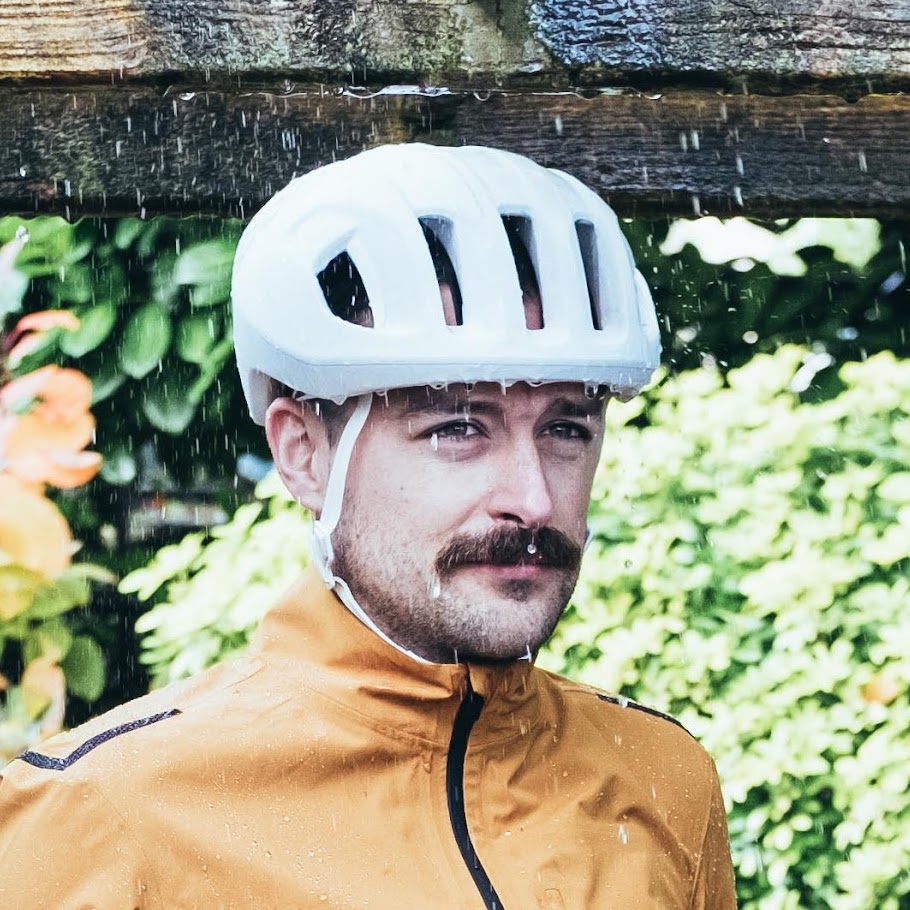
Will joined the Cyclingnews team as a reviews writer in 2022, having previously written for Cyclist, BikeRadar and Advntr. He’s tried his hand at most cycling disciplines, from the standard mix of road, gravel, and mountain bike, to the more unusual like bike polo and tracklocross. He’s made his own bike frames, covered tech news from the biggest races on the planet, and published countless premium galleries thanks to his excellent photographic eye. Also, given he doesn’t ever ride indoors he’s become a real expert on foul-weather riding gear. His collection of bikes is a real smorgasbord, with everything from vintage-style steel tourers through to superlight flat bar hill climb machines.